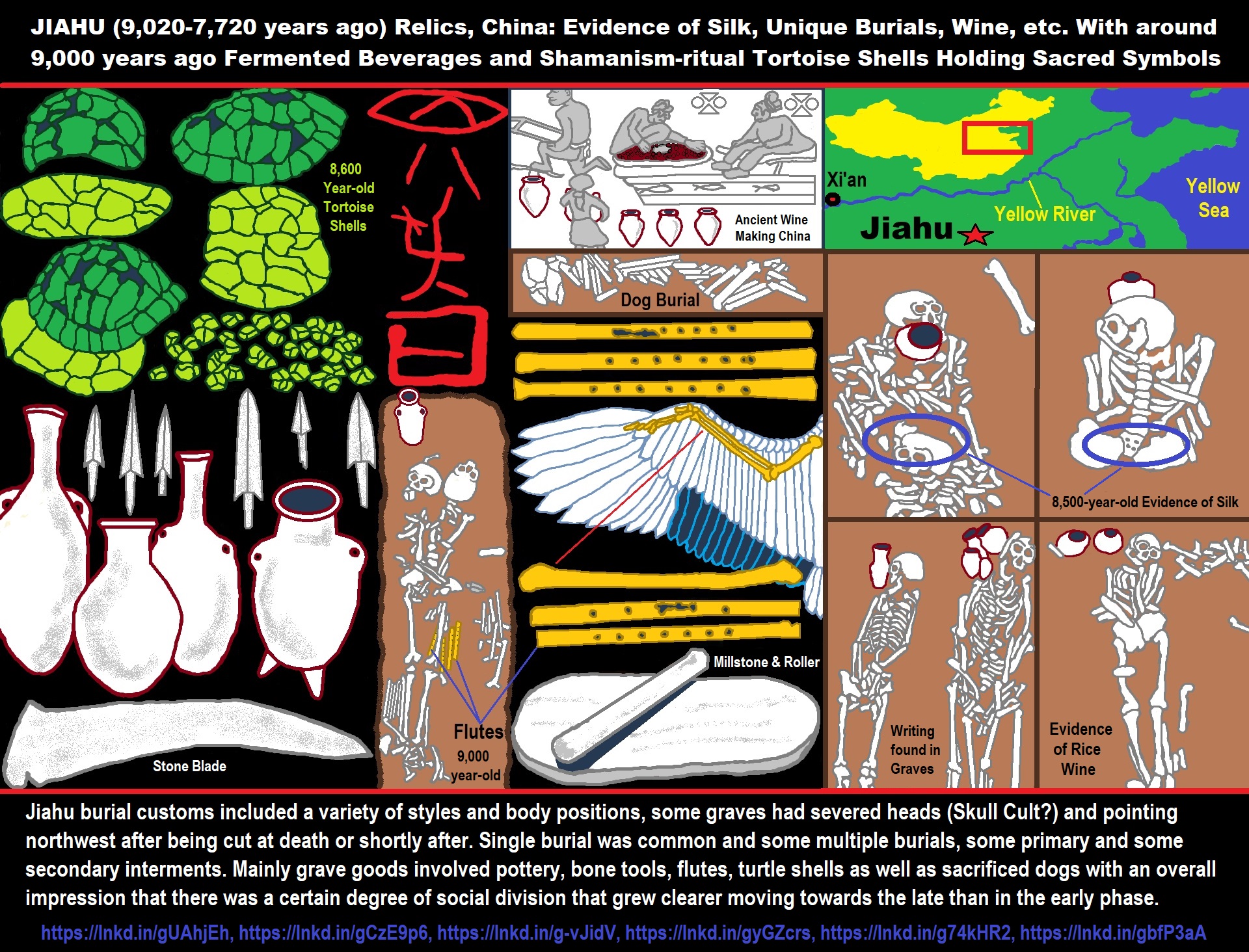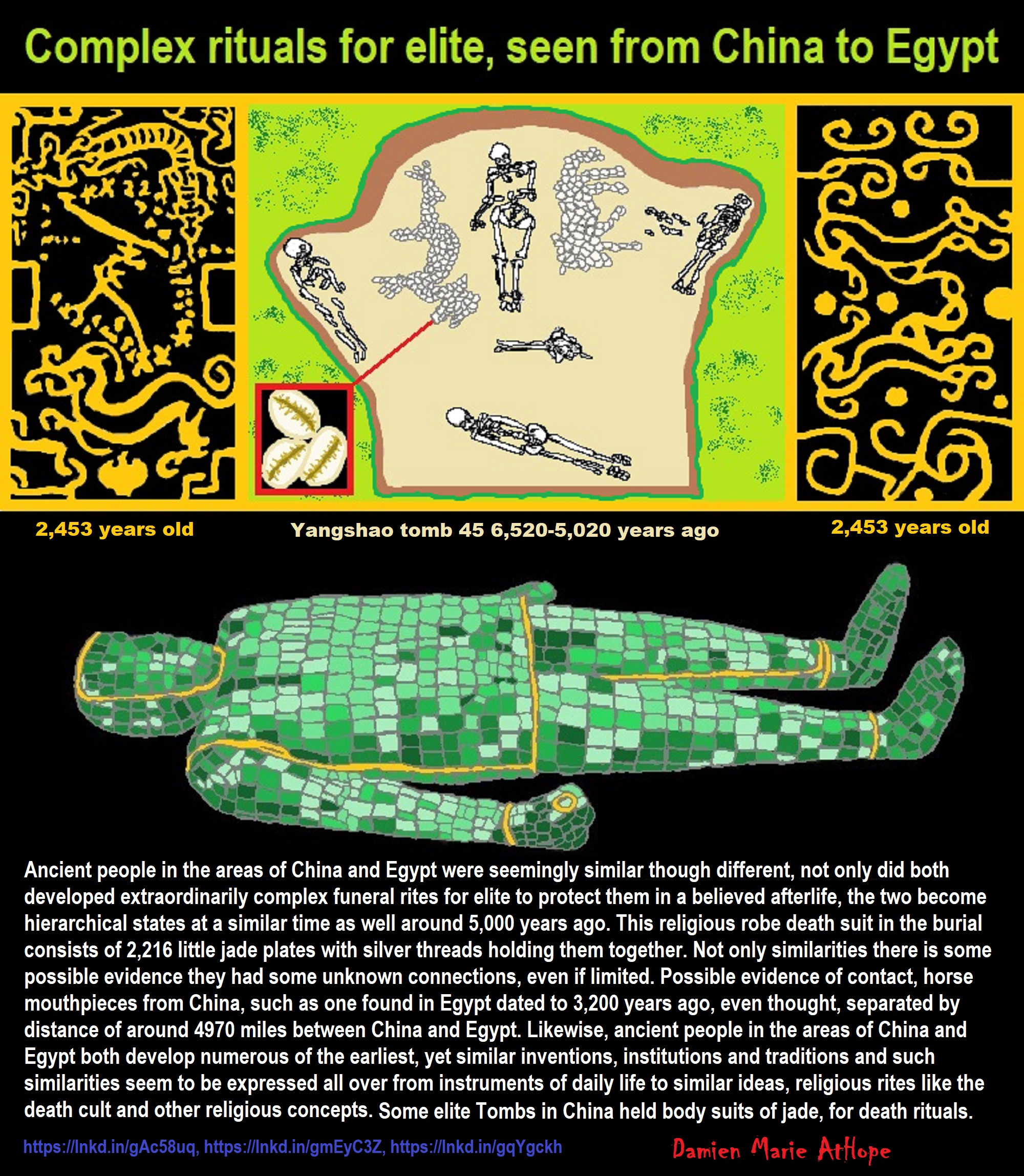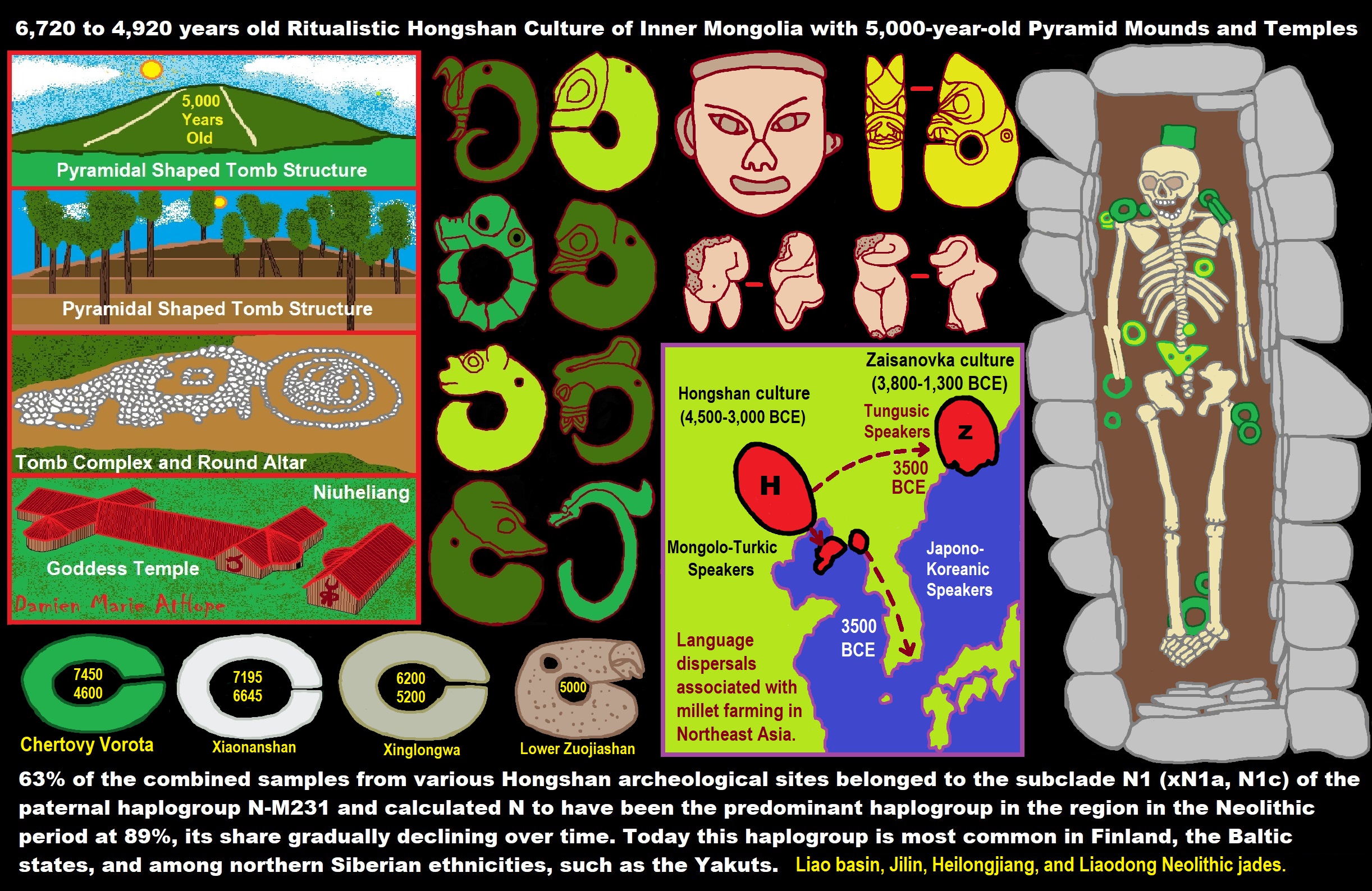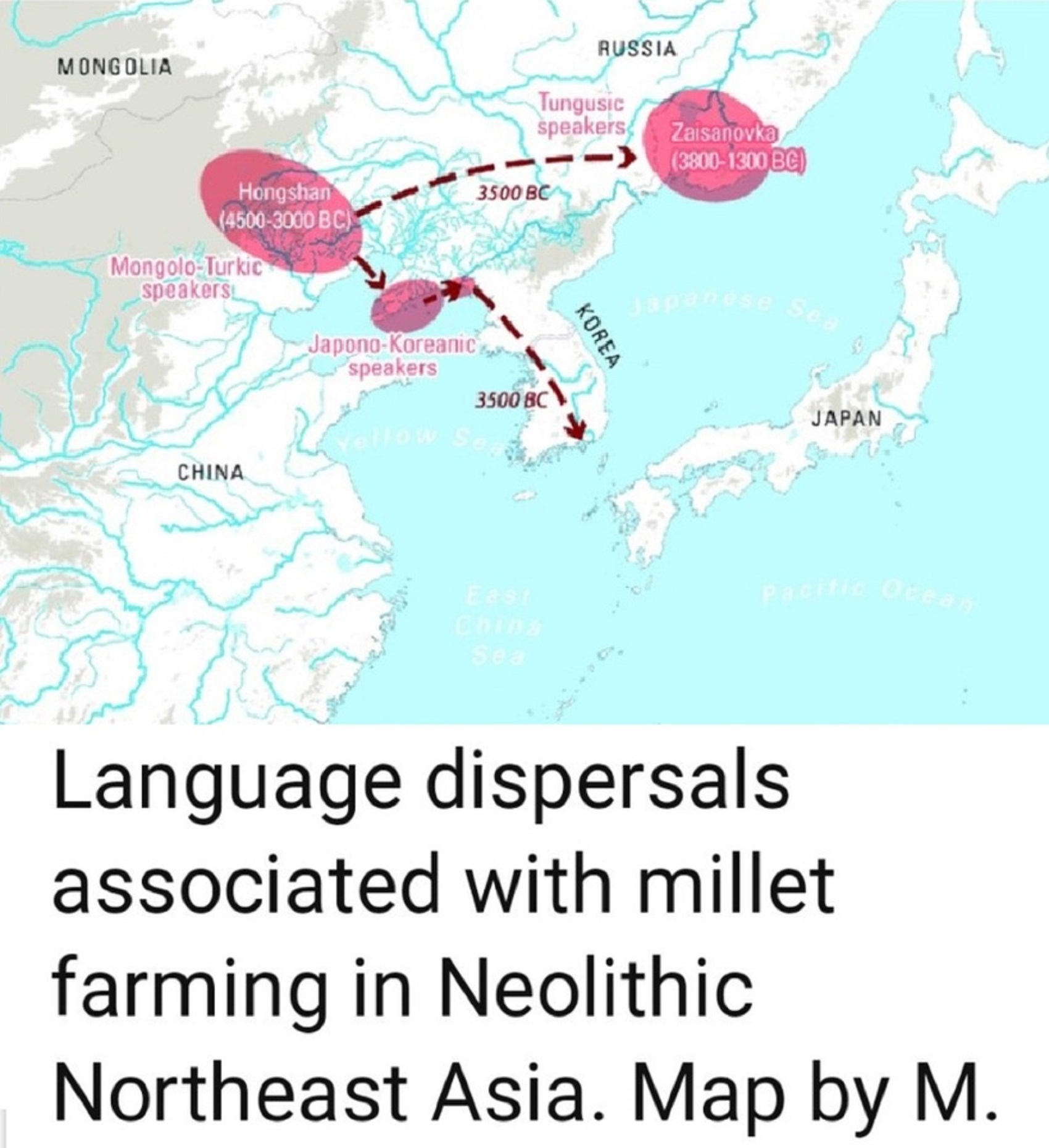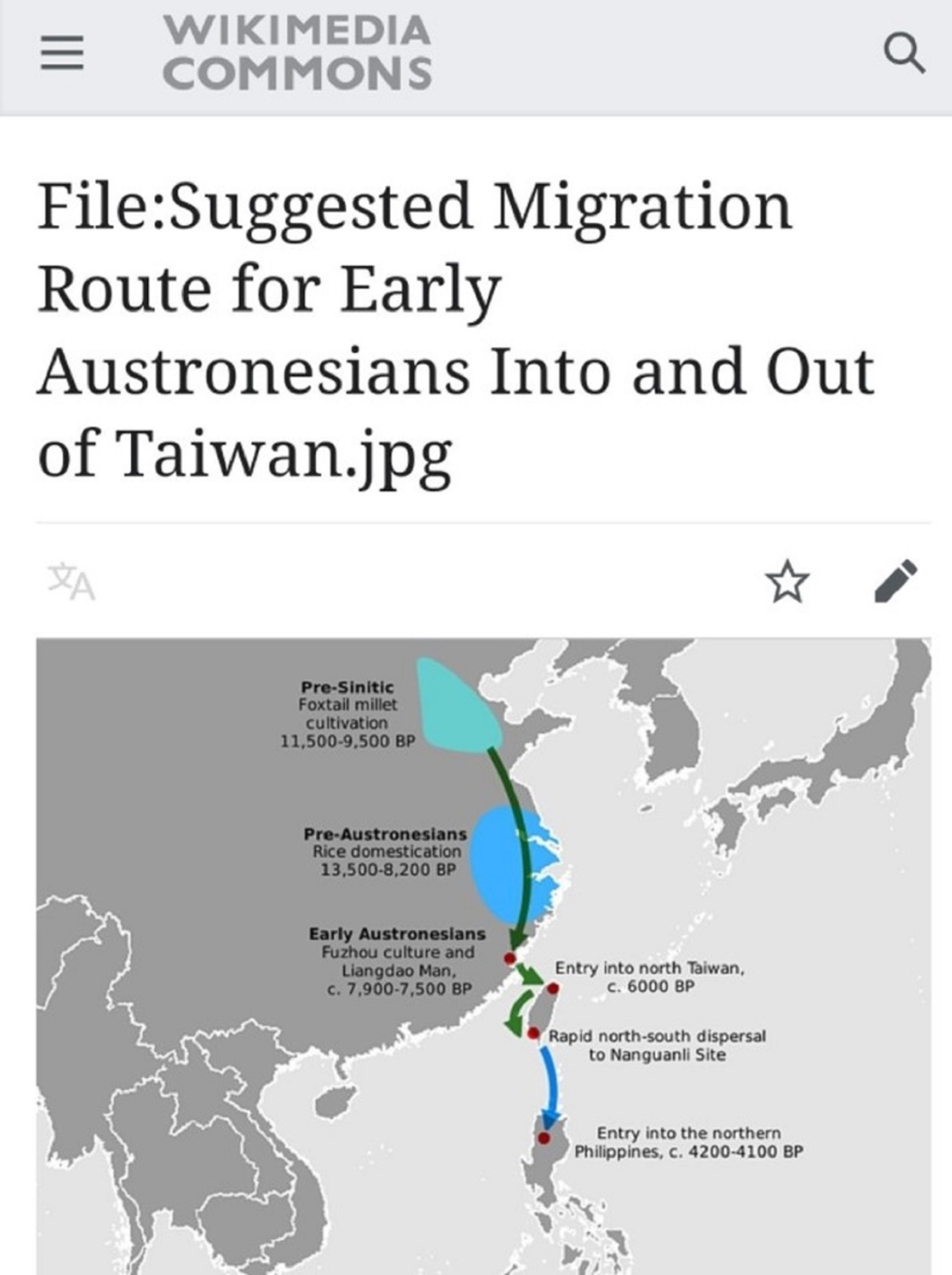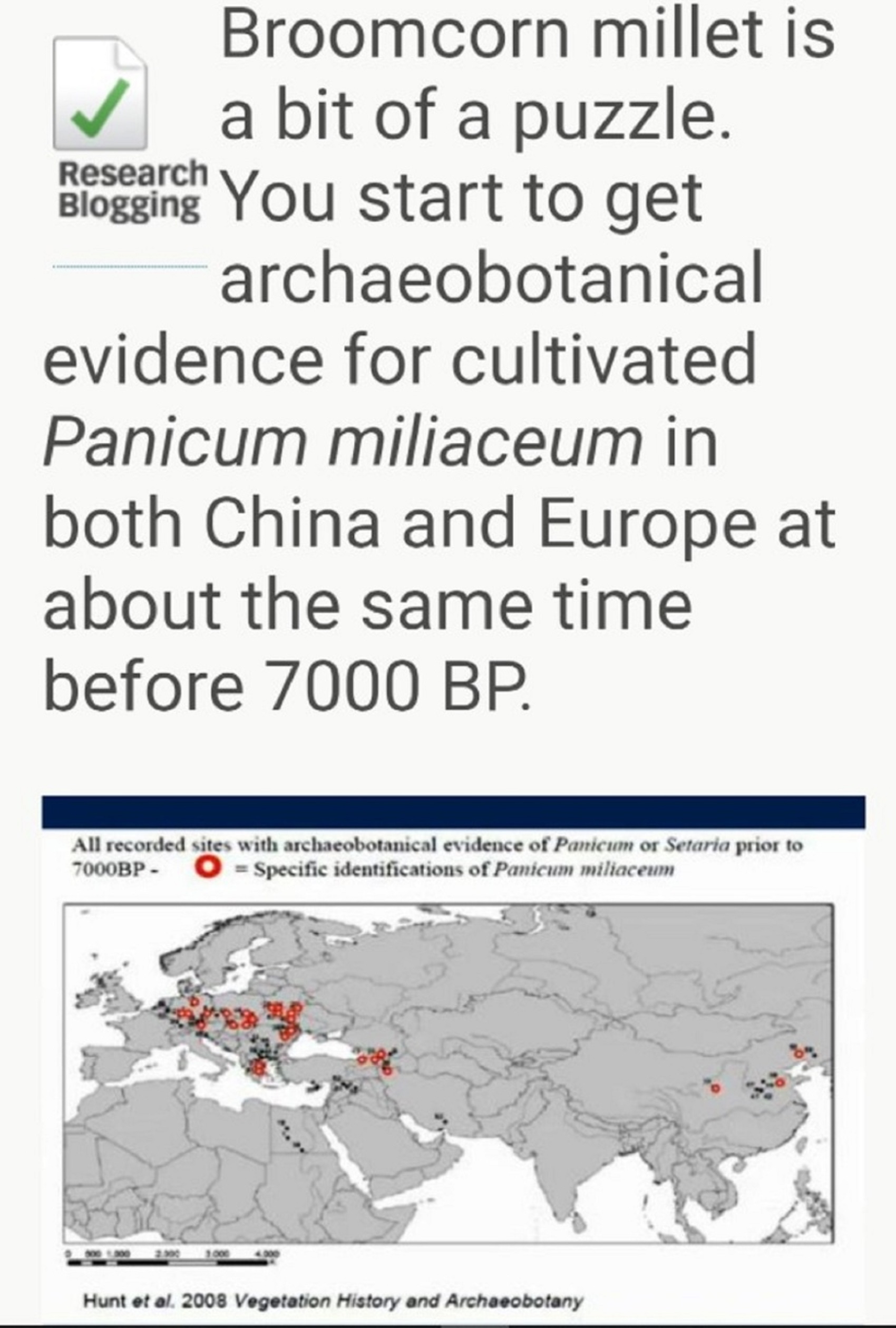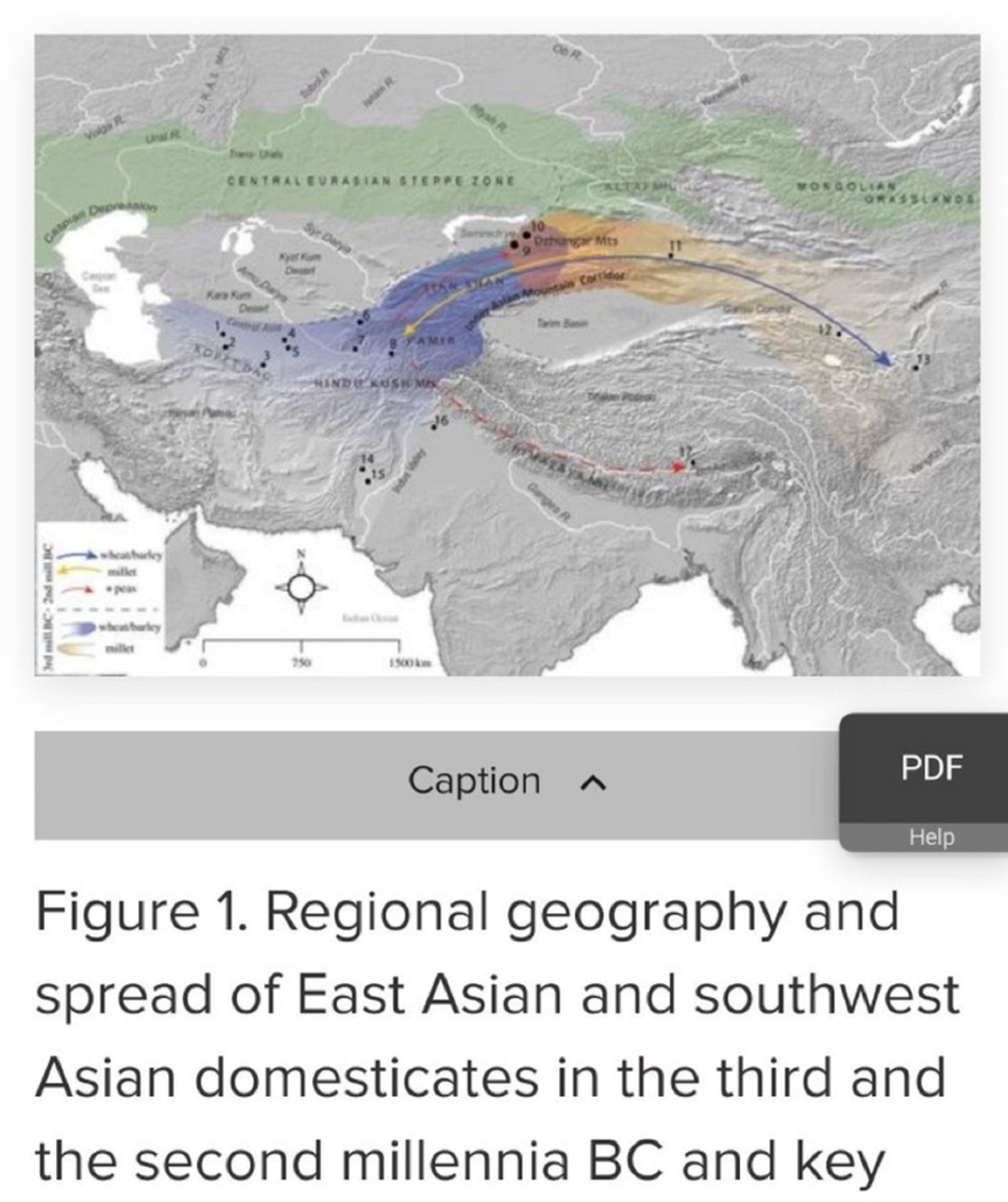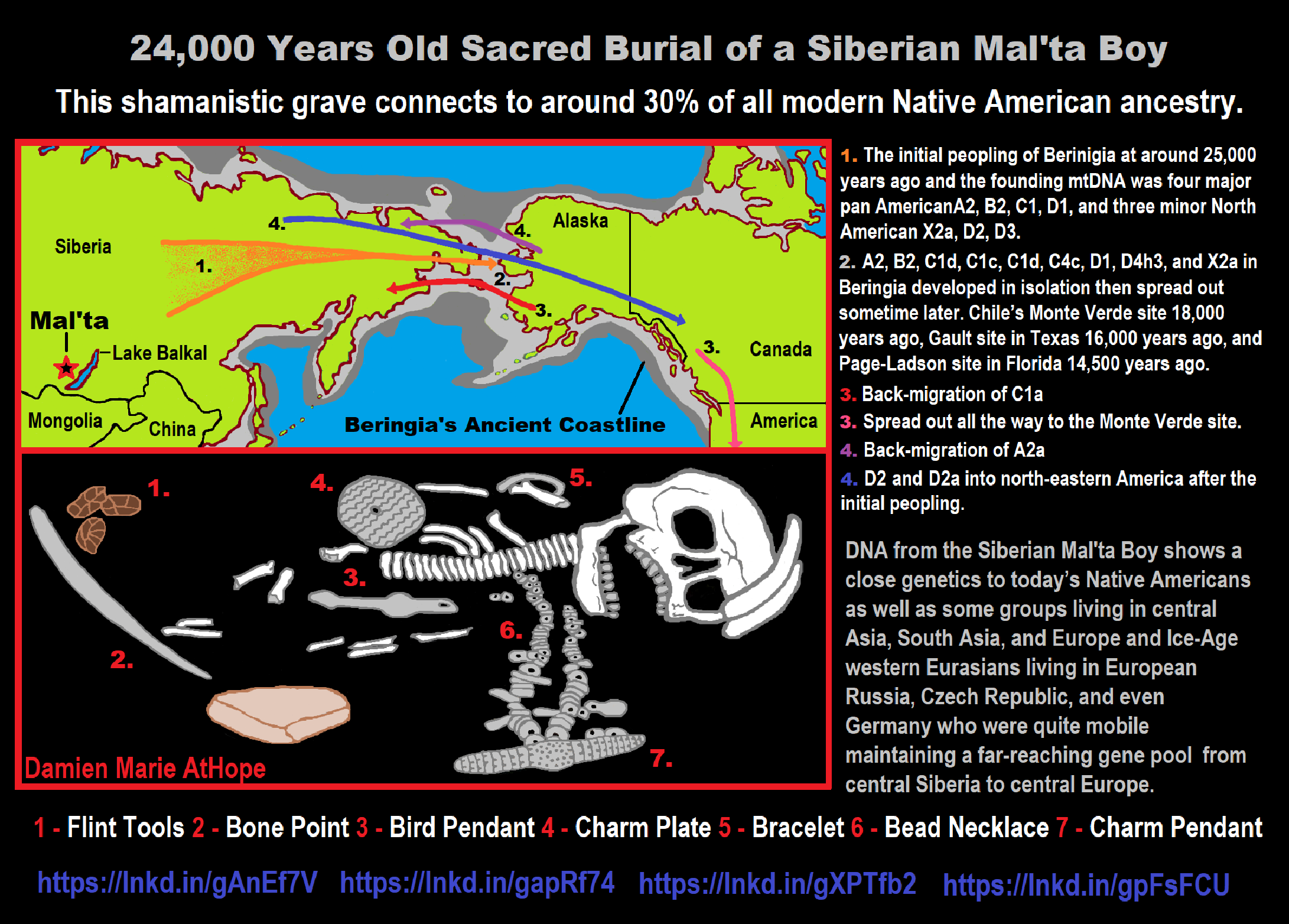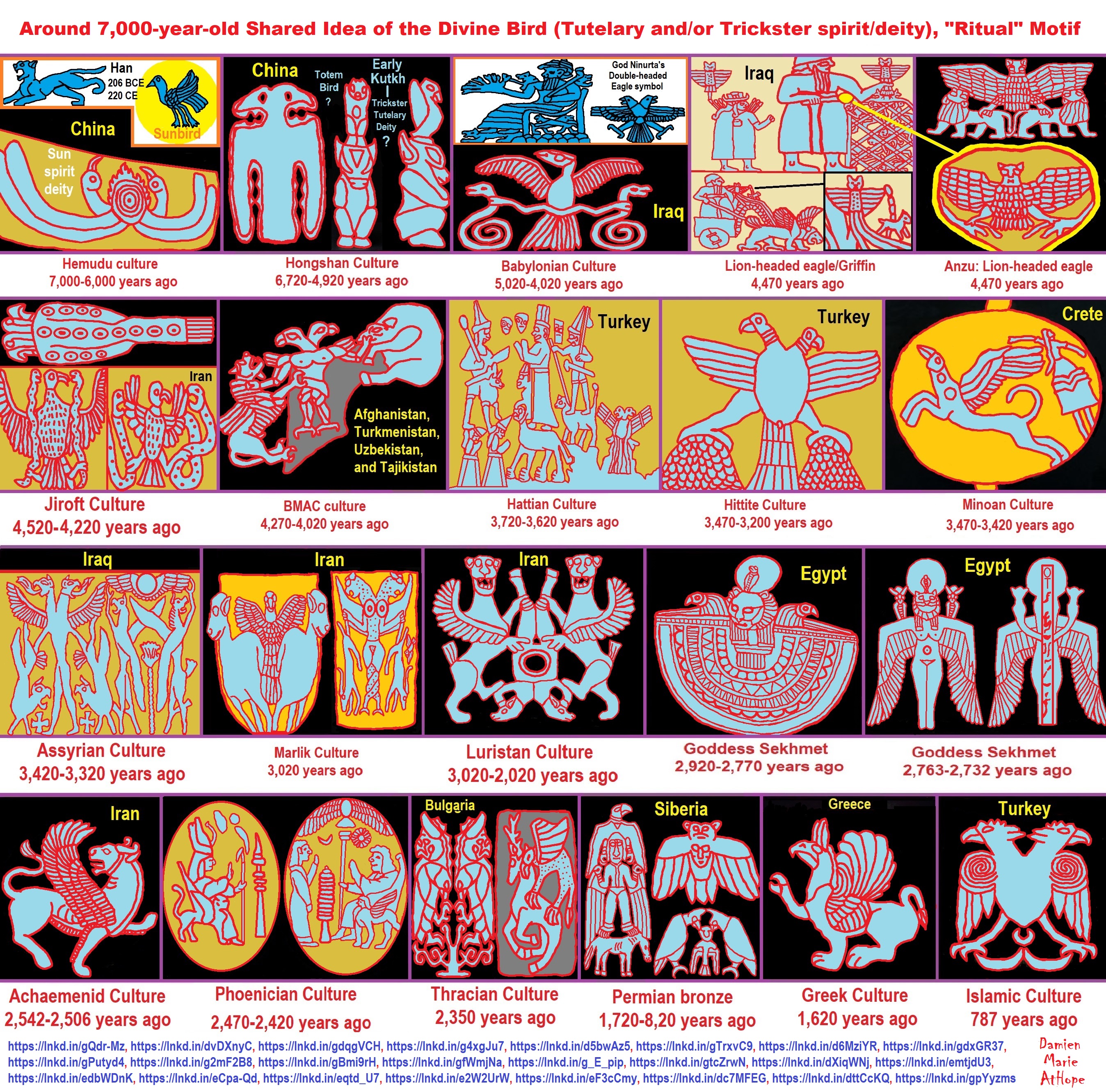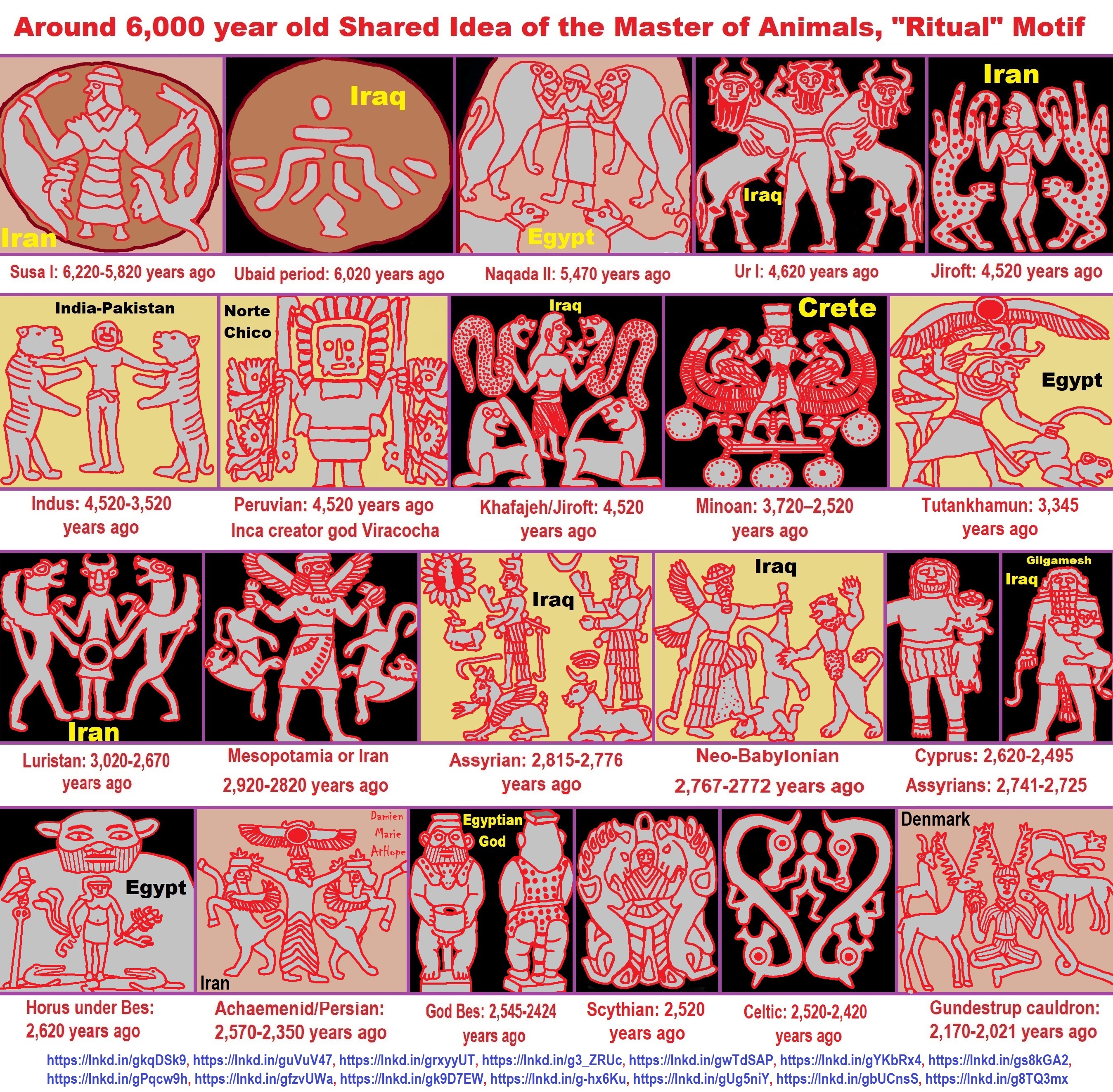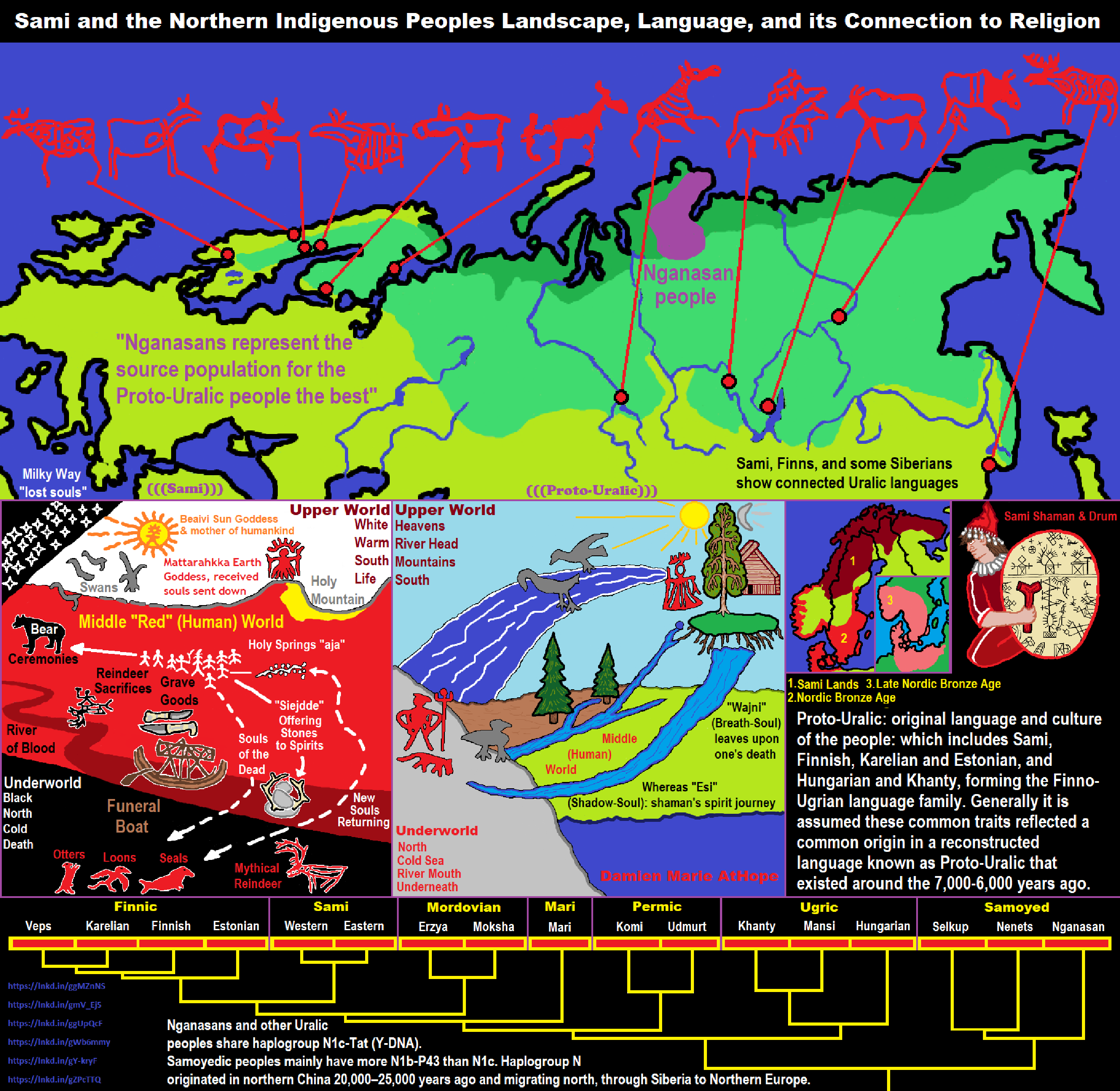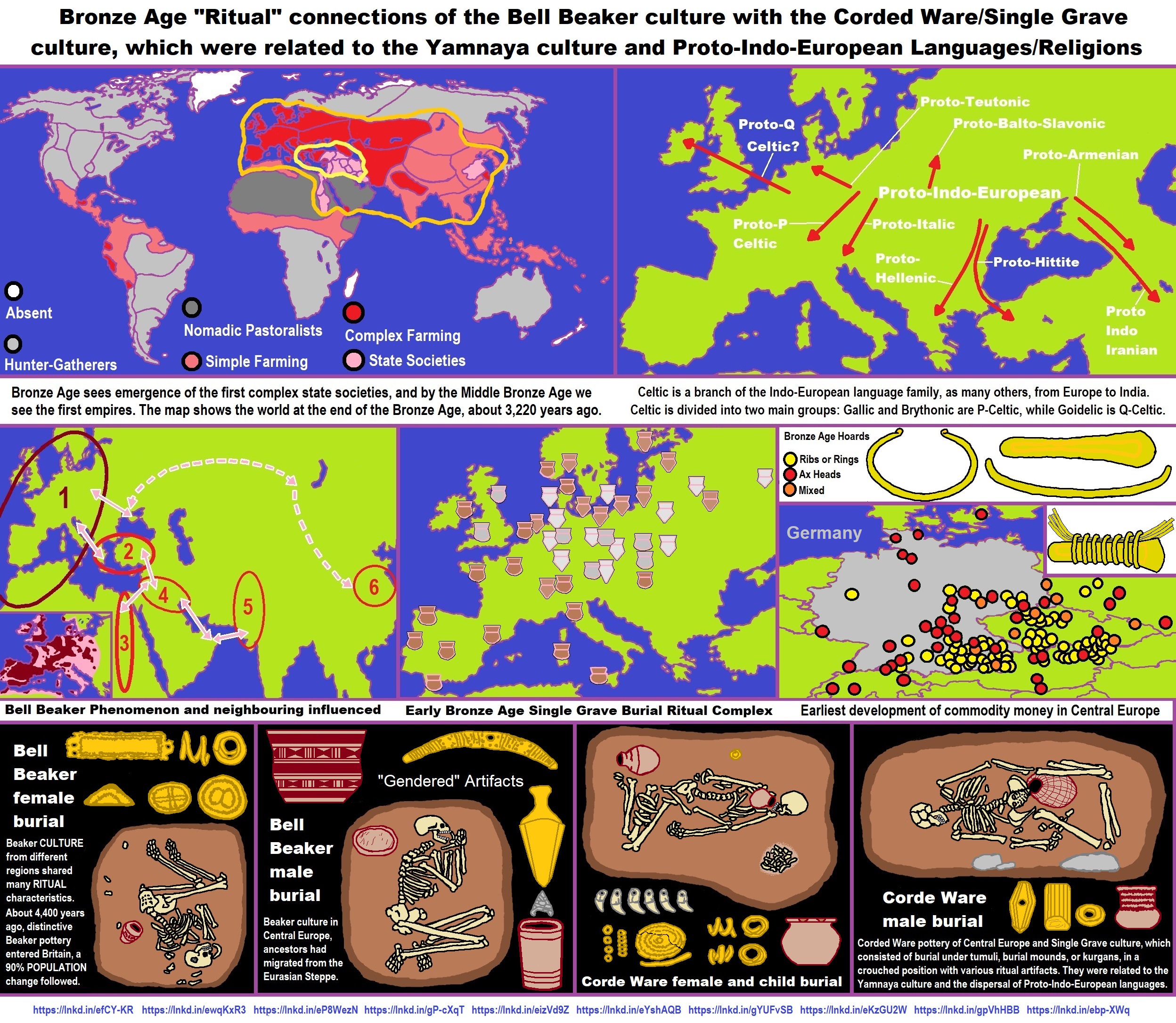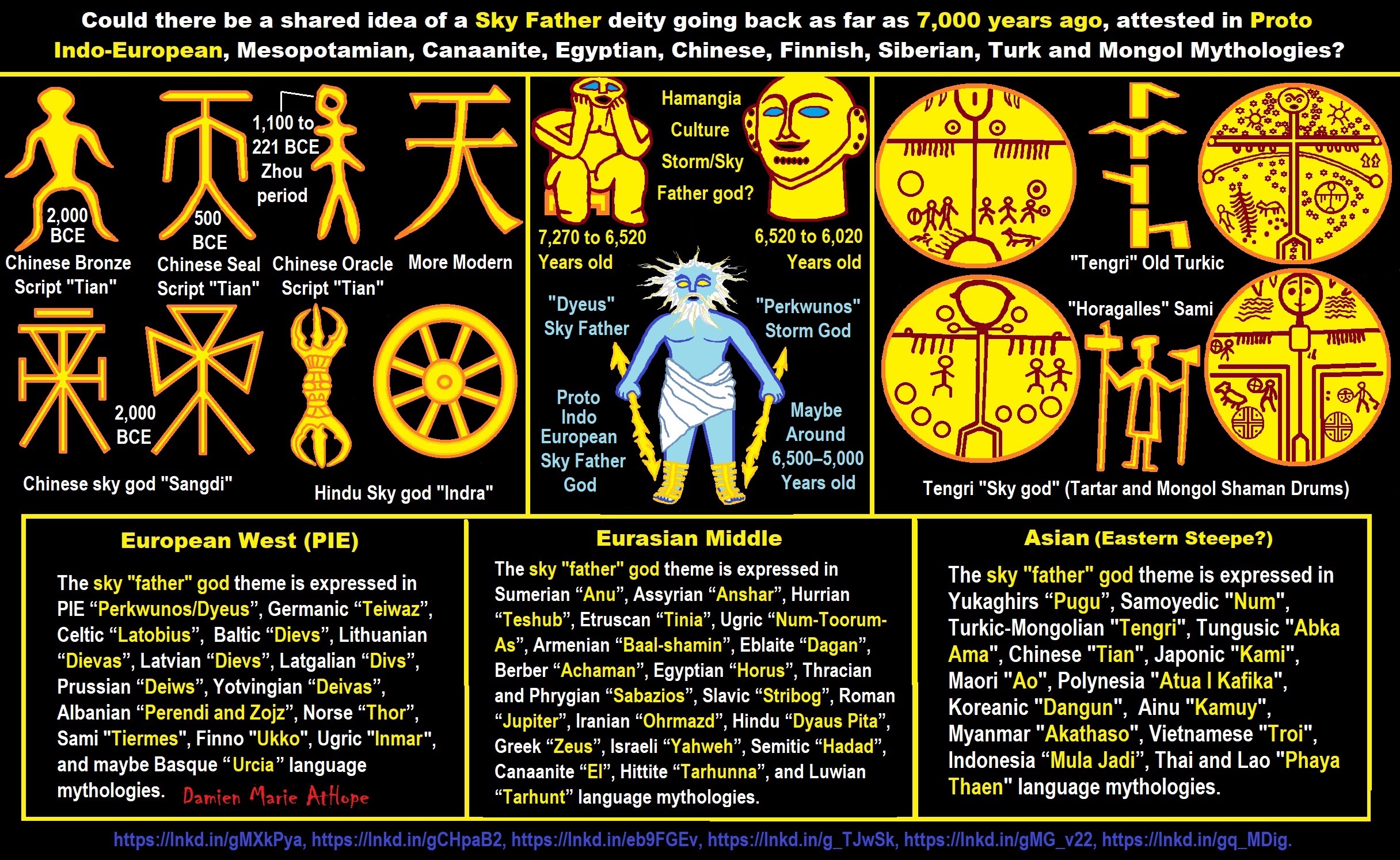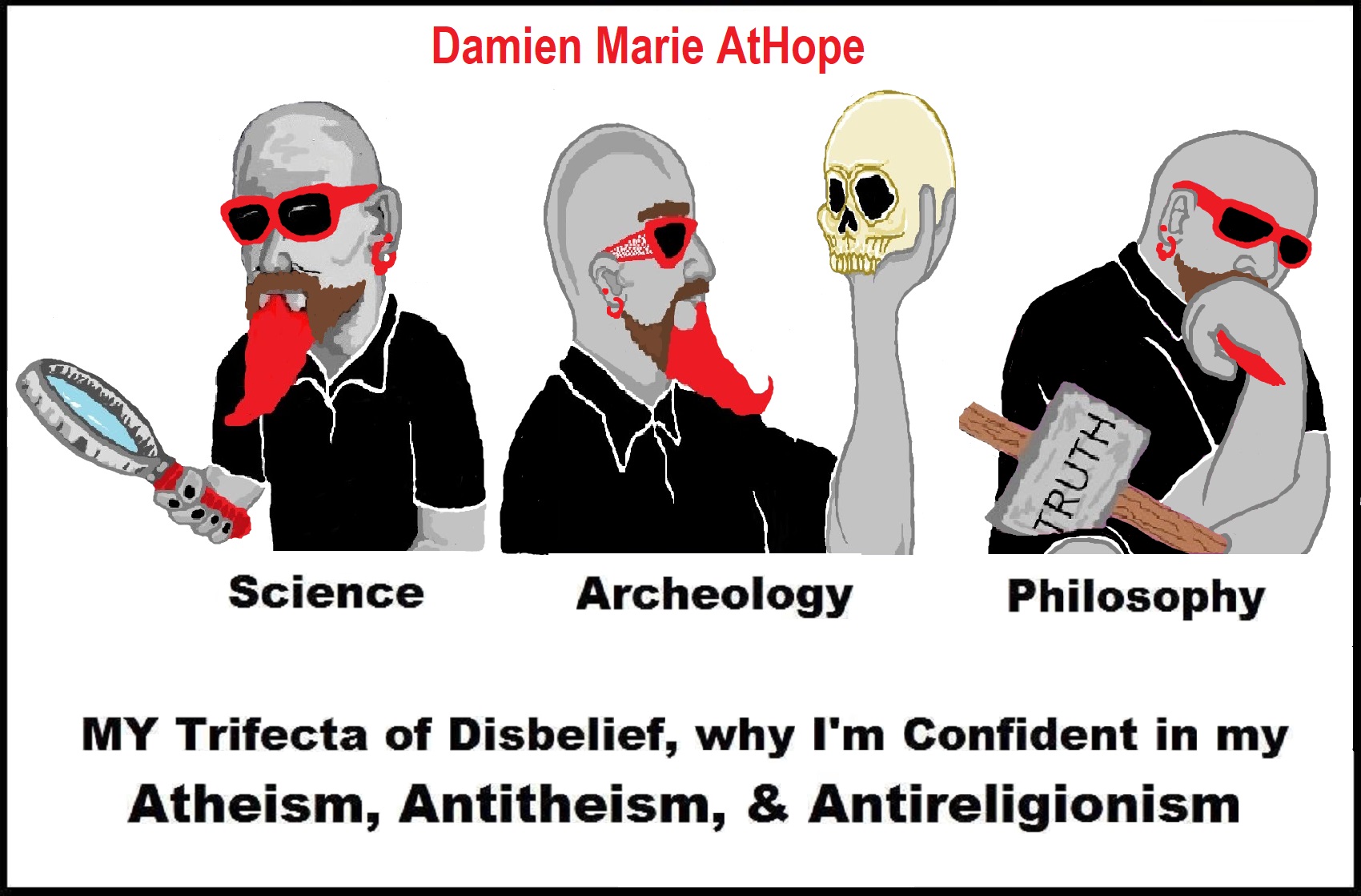
Groups partially derived from the Ancient North Eurasians
“The ANE lineage is defined by association with the MA-1, or “Mal’ta boy”, remains of 24,000 years ago in central Siberia Mal’ta-Buret’ culture 24,000-15,000 years ago. The Ancient North Eurasians (ANE) samples (Afontova Gora 3, Mal’ta 1, and Yana-RHS) show evidence for minor gene flow from an East Asian-related group (simplified by the Amis, Han, or Tianyuan) but no evidence for ANE-related geneflow into East Asians (Amis, Han, Tianyuan), except the Ainu, of North Japan.” ref
“The ANE lineage is defined by association with the MA-1, or “Mal’ta boy”, remains of 24,000 years ago in central Siberia Mal’ta-Buret’ culture 24,000-15,000 years ago “basal to modern-day Europeans”. Some Ancient North Eurasians also carried East Asian populations, such as Tianyuan Man.” ref
“Bronze-age-steppe Yamnaya and Afanasevo cultures were ANE at around 50% and Eastern Hunter-Gatherer (EHG) at around 75% ANE. Karelia culture: Y-DNA R1a-M417 8,400 years ago, Y-DNA J, 7,200 years ago, and Samara, of Y-haplogroup R1b-P297 7,600 years ago is closely related to ANE from Afontova Gora, 18,000 years ago around the time of blond hair first seen there.” ref
Ancient North Eurasian
“In archaeogenetics, the term Ancient North Eurasian (often abbreviated as ANE) is the name given to an ancestral West Eurasian component that represents descent from the people similar to the Mal’ta–Buret’ culture and populations closely related to them, such as from Afontova Gora and the Yana Rhinoceros Horn Site. Significant ANE ancestry are found in some modern populations, including Europeans and Native Americans.” ref
“The ANE lineage is defined by association with the MA-1, or “Mal’ta boy“, the remains of an individual who lived during the Last Glacial Maximum, 24,000 years ago in central Siberia, Ancient North Eurasians are described as a lineage “which is deeply related to Paleolithic/Mesolithic hunter-gatherers in Europe,” meaning that they diverged from Paleolithic Europeans a long time ago.” ref
“The ANE population has also been described as having been “basal to modern-day Europeans” but not especially related to East Asians, and is suggested to have perhaps originated in Europe or Western Asia or the Eurasian Steppe of Central Asia. However, some samples associated with Ancient North Eurasians also carried ancestry from an ancient East Asian population, such as Tianyuan Man. Sikora et al. (2019) found that the Yana RHS sample (31,600 BP) in Northern Siberia “can be modeled as early West Eurasian with an approximately 22% contribution from early East Asians.” ref
“Populations genetically similar to MA-1 were an important genetic contributor to Native Americans, Europeans, Central Asians, South Asians, and some East Asian groups, in order of significance. Lazaridis et al. (2016:10) note “a cline of ANE ancestry across the east-west extent of Eurasia.” The ancient Bronze-age-steppe Yamnaya and Afanasevo cultures were found to have a noteworthy ANE component at ~50%.” ref
“According to Moreno-Mayar et al. 2018 between 14% and 38% of Native American ancestry may originate from gene flow from the Mal’ta–Buret’ people (ANE). This difference is caused by the penetration of posterior Siberian migrations into the Americas, with the lowest percentages of ANE ancestry found in Eskimos and Alaskan Natives, as these groups are the result of migrations into the Americas roughly 5,000 years ago.” ref
“Estimates for ANE ancestry among first wave Native Americans show higher percentages, such as 42% for those belonging to the Andean region in South America. The other gene flow in Native Americans (the remainder of their ancestry) was of East Asian origin. Gene sequencing of another south-central Siberian people (Afontova Gora-2) dating to approximately 17,000 years ago, revealed similar autosomal genetic signatures to that of Mal’ta boy-1, suggesting that the region was continuously occupied by humans throughout the Last Glacial Maximum.” ref
“The earliest known individual with a genetic mutation associated with blonde hair in modern Europeans is an Ancient North Eurasian female dating to around 16000 BCE from the Afontova Gora 3 site in Siberia. It has been suggested that their mythology may have included a narrative, found in both Indo-European and some Native American fables, in which a dog guards the path to the afterlife.” ref
“Genomic studies also indicate that the ANE component was introduced to Western Europe by people related to the Yamnaya culture, long after the Paleolithic. It is reported in modern-day Europeans (7%–25%), but not of Europeans before the Bronze Age. Additional ANE ancestry is found in European populations through paleolithic interactions with Eastern Hunter-Gatherers, which resulted in populations such as Scandinavian Hunter-Gatherers.” ref
“The Ancient North Eurasians (ANE) split from the ancestors of European peoples somewhere in the Middle East or South-central Asia, and used a northern dispersal route through Central Asia into Northern Asia and Siberia. Genetic analyses show that all ANE samples (Afontova Gora 3, Mal’ta 1, and Yana-RHS) show evidence for minor gene flow from an East Asian-related group (simplified by the Amis, Han, or Tianyuan). In contrast, no evidence for ANE-related geneflow into East Asians (Amis, Han, Tianyuan), except the Ainu, was found.” ref
“Genetic data suggests that the ANE formed during the Terminal Upper-Paleolithic (36+-1,5ka) period from a deeply European-related population, which was once widespread in Northern Eurasia, and from an early East Asian-related group, which migrated northwards into Central Asia and Siberia, merging with this deeply European-related population. These population dynamics and constant northwards geneflow of East Asian-related ancestry would later gave rise to the “Ancestral Native Americans” and Paleosiberians, which replaced the ANE as dominant population of Siberia.” ref
Groups partially derived from the Ancient North Eurasians
“Eastern Hunter-Gatherer (EHG) is a lineage derived predominantly (75%) from ANE. It is represented by two individuals from Karelia, one of Y-haplogroup R1a-M417, dated c. 8.4 kya, the other of Y-haplogroup J, dated c. 7.2 kya; and one individual from Samara, of Y-haplogroup R1b-P297, dated c. 7.6 kya. This lineage is closely related to the ANE sample from Afontova Gora, dated c. 18 kya. After the end of the Last Glacial Maximum, the Western Hunter-Gatherers (WHG) and EHG lineages merged in Eastern Europe, accounting for early presence of ANE-derived ancestry in Mesolithic Europe. Evidence suggests that as Ancient North Eurasians migrated West from Eastern Siberia, they absorbed Western Hunter-Gatherers and other West Eurasian populations as well.” ref
“Caucasian Hunter-Gatherer (CHG) is represented by the Satsurblia individual dated ~13 kya (from the Satsurblia cave in Georgia), and carried 36% ANE-derived admixture. While the rest of their ancestry is derived from the Dzudzuana cave individual dated ~26 kya, which lacked ANE-admixture, Dzudzuana affinity in the Caucasus decreased with the arrival of ANE at ~13 kya Satsurblia.” ref
“Scandinavian Hunter-Gatherer (SHG) is represented by several individuals buried at Motala, Sweden ca. 6000 BC. They were descended from Western Hunter-Gatherers who initially settled Scandinavia from the south, and later populations of EHG who entered Scandinavia from the north through the coast of Norway.” ref
“Iran Neolithic (Iran_N) individuals dated ~8.5 kya carried 50% ANE-derived admixture and 50% Dzudzuana-related admixture, marking them as different from other Near-Eastern and Anatolian Neolithics who didn’t have ANE admixture. Iran Neolithics were later replaced by Iran Chalcolithics, who were a mixture of Iran Neolithic and Near Eastern Levant Neolithic.” ref
“Ancient Beringian/Ancestral Native American are specific archaeogenetic lineages, based on the genome of an infant found at the Upward Sun River site (dubbed USR1), dated to 11,500 years ago. The AB lineage diverged from the Ancestral Native American (ANA) lineage about 20,000 years ago.” ref
“West Siberian Hunter-Gatherer (WSHG) are a specific archaeogenetic lineage, first reported in a genetic study published in Science in September 2019. WSGs were found to be of about 30% EHG ancestry, 50% ANE ancestry, and 20% to 38% East Asian ancestry.” ref
“Western Steppe Herders (WSH) is the name given to a distinct ancestral component that represents descent closely related to the Yamnaya culture of the Pontic–Caspian steppe. This ancestry is often referred to as Yamnaya ancestry or Steppe ancestry.” ref
“Late Upper Paeolithic Lake Baikal – Ust’Kyakhta-3 (UKY) 14,050-13,770 BP were mixture of 30% ANE ancestry and 70% East Asian ancestry.” ref
“Lake Baikal Holocene – Baikal Eneolithic (Baikal_EN) and Baikal Early Bronze Age (Baikal_EBA) derived 6.4% to 20.1% ancestry from ANE, while rest of their ancestry was derived from East Asians. Fofonovo_EN near by Lake Baikal were mixture of 12-17% ANE ancestry and 83-87% East Asian ancestry.” ref
“Hokkaido Jōmon people specifically refers to the Jōmon period population of Hokkaido in northernmost Japan. Though the Jōmon people themselves descended mainly from East Asian lineages, one study found an affinity between Hokkaido Jōmon with the Northern Eurasian Yana sample (an ANE-related group, related to Mal’ta), and suggest as an explanation the possibility of minor Yana gene flow into the Hokkaido Jōmon population (as well as other possibilities). A more recent study by Cooke et al. 2021, confirmed ANE-related geneflow among the Jōmon people, partially ancestral to the Ainu people. ANE ancestry among Jōmon people is estimated at 21%, however, there is a North to South cline within the Japanese archipelago, with the highest amount of ANE ancestry in Hokkaido and Tohoku.” ref
Ancient North Eurasian Comparative Mythology
“Since the term ‘Ancient North Eurasian’ refers to a genetic bridge of connected mating networks, scholars of comparative mythology have argued that they probably shared myths and beliefs that could be reconstructed via the comparison of stories attested within cultures that were not in contact for millennia and stretched from the Pontic–Caspian steppe to the American continent. For instance, the mytheme of the dog guarding the Otherworld possibly stems from an older Ancient North Eurasian belief, as suggested by similar motifs found in Indo-European, Native American, and Siberian mythology. In Siouan, Algonquian, Iroquoian, and in Central and South American beliefs, a fierce guard dog was located in the Milky Way, perceived as the path of souls in the afterlife, and getting past it was a test. The Siberian Chukchi and Tungus believed in a guardian-of-the-afterlife dog and a spirit dog that would absorb the dead man’s soul and act as a guide in the afterlife.” ref
“In Indo-European myths, the figure of the dog is embodied by Cerberus, Sarvarā, and Garmr. In Zoroastrianism, two four-eyed dogs guard the bridge to the afterlife called Chinvat Bridge. Anthony and Brown note that it might be one of the oldest mythemes recoverable through comparative mythology. A second canid-related series of beliefs, myths, and rituals connected dogs with healing rather than death. For instance, Ancient Near Eastern and Turkic–Kipchaq myths are prone to associate dogs with healing and generally categorized dogs as impure. A similar myth-pattern is assumed for the Eneolithic site of Botai in Kazakhstan, dated to 3500 BC, which might represent the dog as an absorber of illness and guardian of the household against disease and evil. In Mesopotamia, the goddess Nintinugga, associated with healing, was accompanied or symbolized by dogs. Similar absorbent-puppy healing and sacrifice rituals were practiced in Greece and Italy, among the Hittites, again possibly influenced by Near Eastern traditions.” ref

Paleolithic to Bronze Age Siberians Reveal Connections with First Americans and across Eurasia
“Modern humans have inhabited the Lake Baikal region since the Upper Paleolithic, though the precise history of its peoples over this long time span is still largely unknown. Here, we report genome-wide data from 19 Upper Paleolithic to Early Bronze Age individuals from this Siberian region. An Upper Paleolithic genome shows a direct link with the First Americans by sharing the admixed ancestry that gave rise to all non-Arctic Native Americans. We also demonstrate the formation of Early Neolithic and Bronze Age Baikal populations as the result of prolonged admixture throughout the eighth to sixth millennium BP. Moreover, we detect genetic interactions with western Eurasian steppe populations and reconstruct Yersinia pestis genomes from two Early Bronze Age individuals without western Eurasian ancestry. Overall, our study demonstrates the most deeply divergent connection between Upper Paleolithic Siberians and the First Americans and reveals human and pathogen mobility across Eurasia during the Bronze Age.” ref
“The Kets (an ethnic group in the Yenisei River basin, Russia) are among the least studied native Siberians. Ket language lacks apparent affiliation with any major language family and is clearly distinct from surrounding Uralic, Turkic, and Tungusic languages. The Kets are thought to be the only survivors of an ancient nomadic people believed to have originally inhabited central and southern Siberia. Ket language, albeit almost extinct, is the only language of the Yeniseian family that survived into the 21st century. Most Yeniseian-speaking tribes (Arin, Assan, Baikot, Kott, Pumpokol, Yarin, Yastin) used to live south of the current Ket settlements. Today, Kets are the descendants of fishermen and hunter tribes of the Yenisei taiga, who adopted some of the cultural ways of those original Ket-speaking tribes of South Siberia. The earlier tribes engaged in hunting, fishing, and reindeer breeding in the northern areas. Over the centuries, Kets and other Yeniseian people suffered relocation, extinction, and loss of language and culture. First, they were under a constant pressure from the reindeer herders to the north (Enets and Nenets) and east (Evenks) and the Turkic-speaking pastoralists to the south. The Ket language has been linked to the Na-Dené languages of North America in the Dené–Yeniseian language family. Ket mythology with those of speakers of Uralic languages, assuming in the studies that they are modeling semiotic systems in the compared mythologies. They have also made typological comparisons. Among other comparisons, possibly from Uralic mythological analogies, the mythologies of Ob-Ugric peoples and Samoyedic peoples are mentioned. Other authors have discussed analogies (similar folklore motifs, purely typological considerations, and certain binary pairs in symbolics) may be related to a dualistic organization of society – some dualistic features can be found in comparisons with these peoples.” ref, ref
The genetic history of admixture across inner Eurasia
“Ancient DNA studies have already shown that human populations of this region have dramatically transformed over time. For example, the Upper Paleolithic genomes from the Mal’ta and Afontova Gora sites in southern Siberia revealed a genetic profile, often called “Ancient North Eurasians (ANE)”, which is deeply related to Paleolithic/Mesolithic hunter-gatherers in Europe and also substantially contributed to the gene pools of present-day Native Americans, Siberians, Europeans and South Asians. Studies of Bronze Age steppe populations found the appearance of additional Western Eurasian-related ancestries across the steppe from the Pontic-Caspian to the Altai-Sayan regions, here we collectively refer to as “Western Steppe Herders (WSH)”: the earlier populations associated with the Yamnaya and Afanasievo cultures (often called “steppe Early and Middle Bronze Age”; “steppe_EMBA”) and the later ones associated with many cultures such as Potapovka, Sintashta, Srubnaya and Andronovo to name a few (often called “steppe Middle and Late Bronze Age”; “steppe_MLBA”). The steppe_MLBA gene pool was largely descended from the preceding steppe_EMBA gene pool, with a substantial contribution from Late Neolithic Europeans. Also, recent archaeogenetic studies trace multiple large-scale trans-Eurasian migrations over the last several millennia using ancient inner Eurasian genomes, including individuals from the Eneolithic Botai culture in northern Kazakhstan in the 4th millennium BCE. These studies now provide a rich context to interpret present-day population structure of inner Eurasians and to characterize ancient admixtures in fine resolution.” ref
“The population of the Botai culture were connected to the earliest evidence for horse husbandry. The settlements of the Botai which consisted of pit-houses were relatively large and permanent. Enormous amounts of horse bones were found in and around the Botai settlements, suggesting that the Botai people kept horses or even domesticated them. Archaeological data suggests that the Botai were sedentary pastoralists and also domesticated dogs.” ref
“In a Principal Component Analysis (PCA) of Eurasian individuals, we find that Principal Component Analysis #1 separates eastern and western Eurasian populations, Principal Component Analysis #2 splits eastern Eurasians along a north-south cline, and Principal Component Analysis #3 captures variation in western Eurasians with Caucasus and northeastern European populations at opposite ends (Fig. 2a and Supplementary Figs. 1–2). Inner Eurasians are scattered across PC1 in between, mirroring their geographic locations. Strikingly, they seem to be structured into three distinct west-east genetic clines running between different western and eastern Eurasian groups, instead of being evenly spaced in PC space. The uppermost cline, composed of individuals from northern Eurasia, mostly speaking Uralic or Yeniseian languages, connects northeast Europeans and the Uralic (Samoyedic) speaking Nganasans from northern Siberia. The other two lower clines are occupied by individuals from the Eurasian steppe, mostly speaking Turkic and Mongolic languages. Both clines run into Turkic/Mongolic-speaking populations in southern Siberia and Mongolia, and further into Tungusic-speaking populations in Manchuria and the Russian Far East in the East; however, they diverge in the west, one heading to the Caucasus and the other heading to populations of the Volga-Ural area (Fig. 2 and Supplementary Fig. 2). Four groups, Daur, Mongola, Tu and Dungans, are located alongside other East Asian populations and displaced from the three inner Eurasian clines.” ref


ref, ref, ref, ref, ref, ref, ref, ref, ref, ref, ref, ref
“The Yamnaya culture is identified with the late Proto-Indo-Europeans, and the Pontic-Caspian steppe is the strongest candidate for the Urheimat (original homeland) of the Proto-Indo-European language. The Yamnaya culture was semi-nomadic, with some agriculture practiced near rivers, and a few fortified sites, the largest of which is Mikhaylovka. Admixture between EHGs and CHGs is believed to have occurred on the eastern Pontic-Caspian steppe starting around 5,000 BC, while admixture with Early European Farmers (EEF) happened in the southern parts of the Pontic-Caspian steppe sometime later. Haplogroup R1b, especially subclades of R1b-M269, is the most common Y-DNA haplogroup found among both the Yamnaya and modern-day Western Europeans. People of the Yamnaya culture are believed to have had mostly brown eye color, light to intermediate skin, and brown hair color, with some variation. Some individuals are believed to have carried a mutation to the KITLG gene associated with blond hair, as several individuals with Steppe ancestry are later found to carry this mutation. The Ancient North Eurasian population, who contributed significant ancestry to Western Steppe Herders, are believed to be the source of this mutation.” ref
“In archaeogenetics, the term Ancient North Eurasian (generally abbreviated as ANE) is the name given to an ancestral component that represents a lineage ancestral to the people of the Mal’ta–Buret’ culture and populations closely related to them, such as from Afontova Gora and the Yana Rhinoceros Horn Site, and populations descended from them. ANE ancestry developed from a sister lineage of West-Eurasians with significant admixture from early East Asians.” ref
Haplogroup R possible time of origin about 27,000 years in Central Asia, South Asia, or Siberia:
- Mal’ta–Buret’ culture (24,000-15,000 years ago)
- Afontova Gora culture (21,000-12,000 years ago)
- Trialetian culture (16,000–8000 years ago)
- Samara culture (7,000-6,500 years ago)
- Khvalynsk culture (7,000-6,500 years ago)
- Afanasievo culture (5,300-4,500 years ago)
- Yamna/Yamnaya Culture (5,300-4,500 years ago)
- Andronovo culture (4,000–2,900 years ago) ref


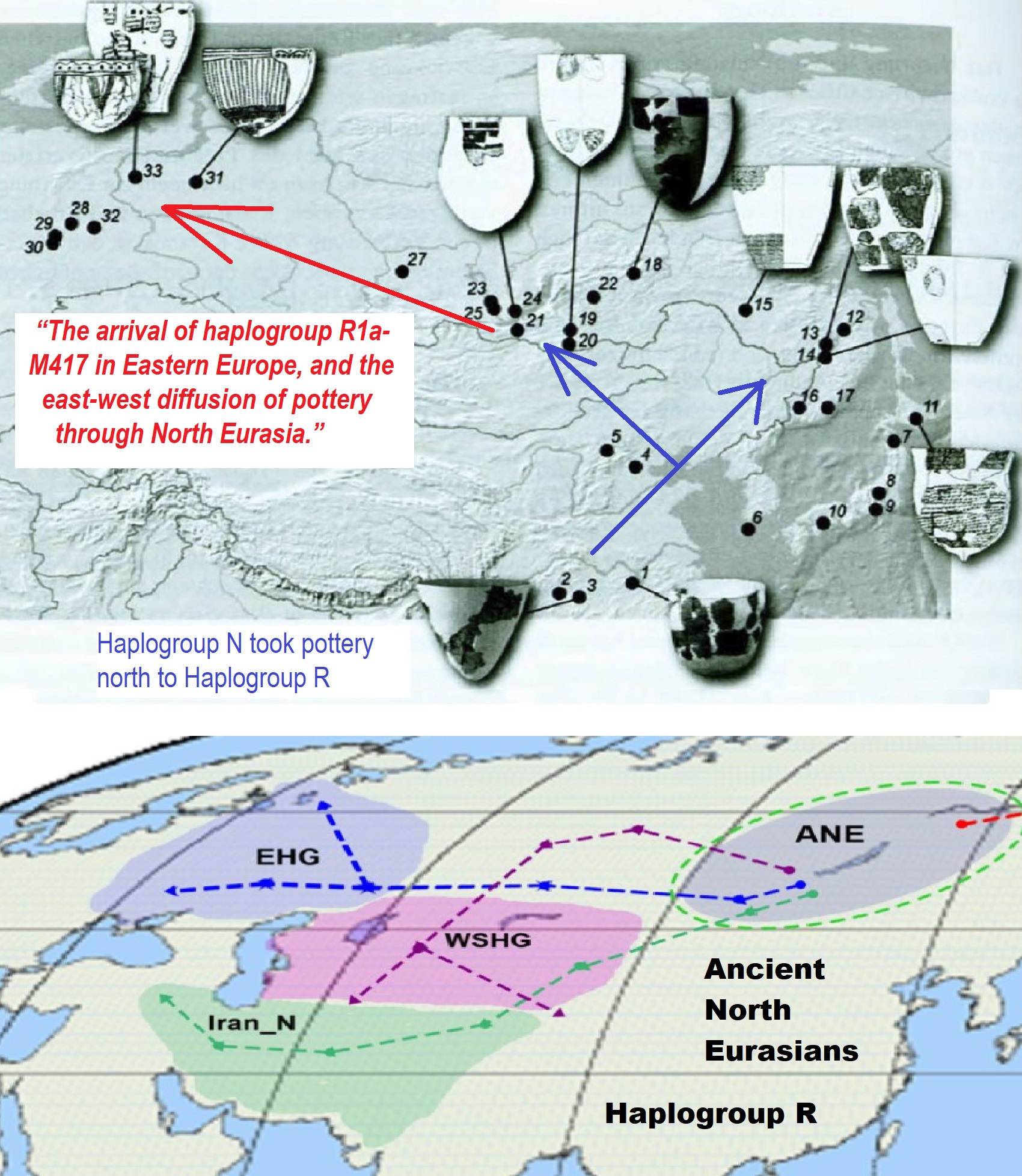
“The arrival of haplogroup R1a-M417 in Eastern Europe, and the east-west diffusion of pottery through North Eurasia.” https://indo-european.eu/2018/02/the-arrival-of-haplogroup-r1a-m417-in-eastern-europe-and-the-east-west-diffusion-of-pottery-through-north-eurasia/
Ancient North Eurasian https://en.wikipedia.org/wiki/Ancient_North_Eurasian
Ancient North Eurasian/Mal’ta–Buret’ culture haplogroup R* https://en.wikipedia.org/wiki/Mal%27ta%E2%80%93Buret%27_culture
“The arrival of haplogroup R1a-M417 in Eastern Europe, and the east-west diffusion of pottery through North Eurasia.” ref
R-M417 (R1a1a1)
“R1a1a1 (R-M417) is the most widely found subclade, in two variations which are found respectively in Europe (R1a1a1b1 (R-Z282) ([R1a1a1a*] (R-Z282) and Central and South Asia (R1a1a1b2 (R-Z93) ([R1a1a2*] (R-Z93).” ref
R-Z282 (R1a1a1b1a) (Eastern Europe)
“This large subclade appears to encompass most of the R1a1a found in Europe.
- R1a1a1b1a [R1a1a1a*] (R-Z282*) occurs in northern Ukraine, Belarus, and Russia at a frequency of c. 20%.
- R1a1a1b1a3 [R1a1a1a1] (R-Z284) occurs in Northwest Europe and peaks at c. 20% in Norway.
- R1a1a1c (M64.2, M87, M204) is apparently rare: it was found in 1 of 117 males typed in southern Iran.” ref
R1a1a1b2 (R-Z93) (Asia)
“This large subclade appears to encompass most of the R1a1a found in Asia, being related to Indo-European migrations (including Scythians, Indo-Aryan migrations, and so on).
- R-Z93* or R1a1a1b2* (R1a1a2* in Underhill (2014)) is most common (>30%) in the South Siberian Altai region of Russia, cropping up in Kyrgyzstan (6%) and in all Iranian populations (1-8%).
- R-Z2125 occurs at highest frequencies in Kyrgyzstan and in Afghan Pashtuns (>40%). At a frequency of >10%, it is also observed in other Afghan ethnic groups and in some populations in the Caucasus and Iran.
- R-M434 is a subclade of Z2125. It was detected in 14 people (out of 3667 people tested), all in a restricted geographical range from Pakistan to Oman. This likely reflects a recent mutation event in Pakistan.
- R-M560 is very rare and was only observed in four samples: two Burushaski speakers (north Pakistan), one Hazara (Afghanistan), and one Iranian Azerbaijani.
- R-M780 occurs at high frequency in South Asia: India, Pakistan, Afghanistan, and the Himalayas. The group also occurs at >3% in some Iranian populations and is present at >30% in Roma from Croatia and Hungary.” ref
R-M458 (R1a1a1b1a1)
“R-M458 is a mainly Slavic SNP, characterized by its own mutation, and was first called cluster N. Underhill et al. (2009) found it to be present in modern European populations roughly between the Rhine catchment and the Ural Mountains and traced it to “a founder effect that … falls into the early Holocene period, 7.9±2.6 KYA.” M458 was found in one skeleton from a 14th-century grave field in Usedom, Mecklenburg-Vorpommern, Germany. The paper by Underhill et al. (2009) also reports a surprisingly high frequency of M458 in some Northern Caucasian populations (for example 27.5% among Karachays and 23.5% among Balkars, 7.8% among Karanogays and 3.4% among Abazas).” ref
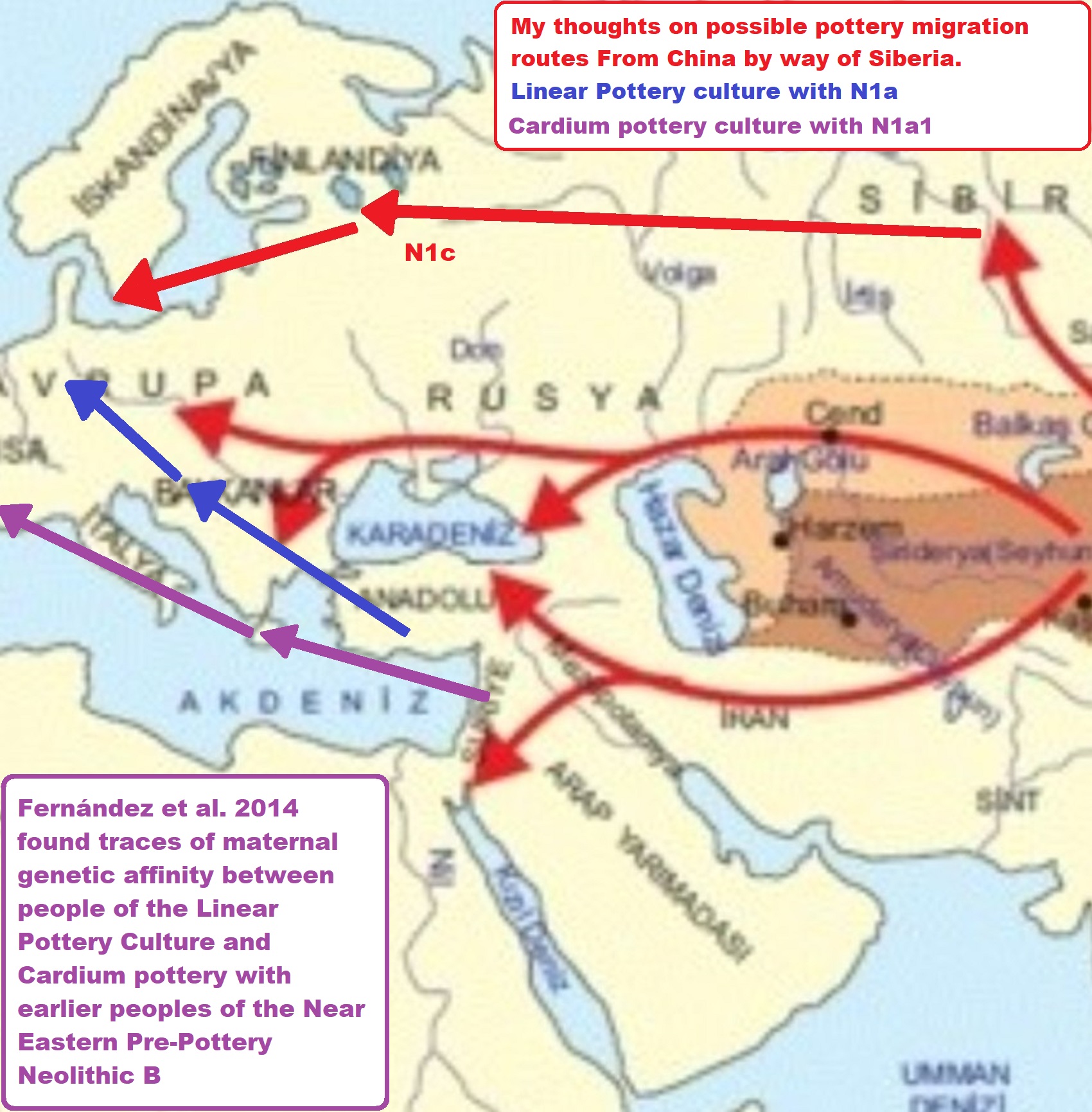
“Haplogroup N1c is found chiefly in north-eastern Europe, particularly in Finland (61%), Lapland (53%), Estonia (34%), Latvia (38%), Lithuania (42%), and northern Russia (30%), and to a lower extent also in central Russia (15%), Belarus (10%), eastern Ukraine (9%), Sweden (7%), Poland (4%) and Turkey (4%). N1c is also prominent among the Uralic-speaking ethnicities of the Volga-Ural region, including the Udmurts (67%), Komi (51%), Mari (50%), and Mordvins (20%), but also among their Turkic neighbors like the Chuvashs (28%), Volga Tatars (21%) and Bashkirs (17%), as well as the Nogais (9%) of southern Russia. N1c represents the western extent of haplogroup N, which is found all over the Far East (China, Korea, Japan), Mongolia, and Siberia, especially among Uralic speakers of northern Siberia. Haplogroup N1 reaches a maximum frequency of approximately 95% in the Nenets (40% N1c and 57% N1b) and Nganassans (all N1b), two Uralic tribes of central-northern Siberia, and 90% among the Yakuts (all N1c), a Turkic people who live mainly in the Sakha (Yakutia) Republic in central-eastern Siberia.” ref
“Haplogroup N is a descendant of East Asian macro-haplogroup NO. It is believed to have originated in Indochina or southern China approximately 15,000 to 20,000 years ago. Haplogroup N1* and N1c were both found at high frequency (26 out of 70 samples, or 37%) in Neolithic and Bronze Age remains (4500-700 BCE) from the West Liao River valley in Northeast China (Manchuria) by Yinqiu Cui et al. (2013). Among the Neolithic samples, haplogroup N1 made up two thirds of the samples from the Hongshan culture (4700-2900 BCE) and all the samples from the Xiaoheyan culture (3000-2200 BCE), hinting that N1 people played a major role in the diffusion of the Neolithic lifestyle around Northeast China, and probably also to Mongolia and Siberia.” ref
“Ye Zhang et al. 2016 found 100% of Y-DNA N out of 17 samples from the Xueshan culture (Jiangjialiang site) dating from 3600–2900 BCE, and among those 41% belonged to N1c1-Tat. It is therefore extremely likely that the N1c1 subclade found in Europe today has its roots in the Chinese Neolithic. It would have progressively spread across Siberia until north-eastern Europe, possibly reaching the Volga-Ural region around 5500 to 4500 BCE with the Kama culture (5300-3300 BCE), and the eastern Baltic with the Comb Ceramic culture (4200-2000 BCE), the presumed ancestral culture of Proto-Finnic and pre-Baltic people. There is little evidence of agriculture or domesticated animals in Siberia during the Neolithic, but pottery was widely used. In that regard it was the opposite development from the Near East, which first developed agriculture then only pottery from circa 5500 BCE, perhaps through contact with East Asians via Siberia or Central Asia.” ref
Uralic N1c1
“Haplogroup N1c1 is strongly associated with Uralic peoples, whis is divided in the following families.
-
-
- Samoyedic (Nganasans, Enets, Nenets and Selkups)
- Finno-Ugric
- Finno-Permic
- Baltic Finnic (Finnish, Karelian, Estonia, etc.)
- Permic (Komi, Udmurt)
- Saamic (Saami)
- Volgaic (Mari, Mordvin)
- Ugric
- Hungarian
- Ob-Ugric (Khanty, Mansi)” ref
- Finno-Permic
-
“The Samoyedic branch on northern Siberia split the earliest and corresponds to the N1c1* and N1c1a* subclades. Permic and Volgaic speakers have a wide diversity of N1c subclades, including N1c1a1 (L708), N1c1a1a (L1026), N1c1a1a1 (VL29), N1c1a1a2a (Z1935), and N1c2b (P43). The Baltic Finnic branch appears to have evolved from the migration of the N1c1a1a1 (VL29) subclade from the Volga-Ural region to Karelia, Finland, and Estonia. VL29 and its subclades are also the variety of N1c1 found in Balto-Slavic populations, confirming that the R1a branch of Indo-Europeans absorbed and later spread N1c1 lineages around central and eastern Europe. The Ugric branch, which comprises Hungarian, as well as the Khanty and Mansi languages of western Siberia, corresponds to the N1c1a1a2b (L1034) subclade.” ref
Did Ural-Altaic languages originate with haplogroup N in the Manchurian Neolithic?
“If haplogroup N1c, found mainly among Uralic speakers today, did originate in the Manchurian Neolithic, together with other subclades of haplogroup N, it would explain that Uralic languages are related to Altaic languages like Turkic and Mongolic languages and, more distantly also Korean, Japanese and Ainu, as Y-haplogroup N is indeed the unifying factor between all these populations. Some linguists have argued that Korean, Japanese, and Ainu are language isolates, as they only vaguely resemble other Altaic languages. Tellingly, these populations also have the lowest percentages of Y-haplogroup N – only 3% for the Koreans and 2% for the Japanese, as opposed to 10 to 25% for the Mongols and Buryats, and frequencies between 30% and 90% for most Turkic-speaking Siberians.” ref


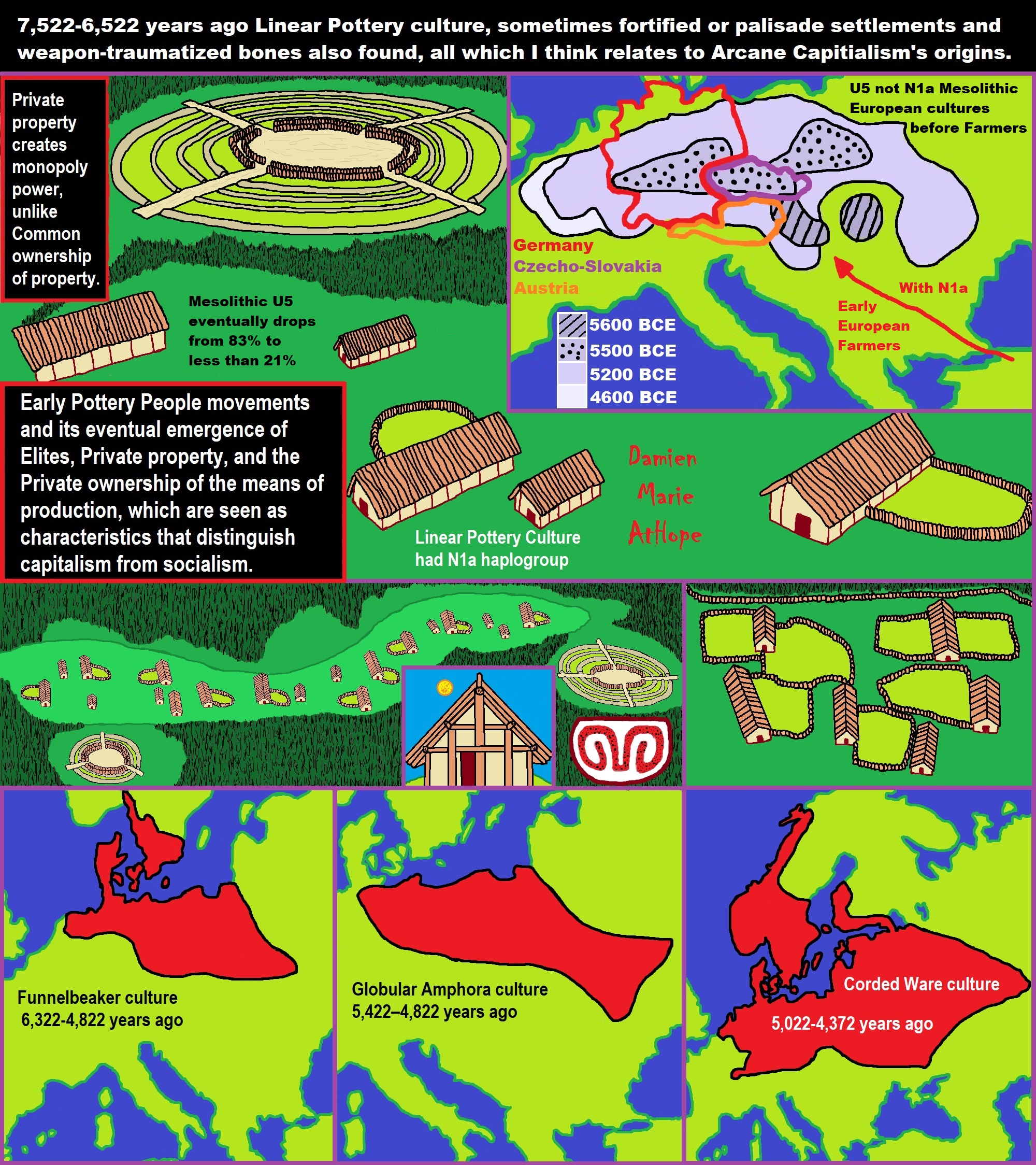

Pic ref
Ancient Women Found in a Russian Cave Turn Out to Be Closely Related to The Modern Population https://www.sciencealert.com/ancient-women-found-in-a-russian-cave-turn-out-to-be-closely-related-to-the-modern-population
Abstract
“Ancient genomes have revolutionized our understanding of Holocene prehistory and, particularly, the Neolithic transition in western Eurasia. In contrast, East Asia has so far received little attention, despite representing a core region at which the Neolithic transition took place independently ~3 millennia after its onset in the Near East. We report genome-wide data from two hunter-gatherers from Devil’s Gate, an early Neolithic cave site (dated to ~7.7 thousand years ago) located in East Asia, on the border between Russia and Korea. Both of these individuals are genetically most similar to geographically close modern populations from the Amur Basin, all speaking Tungusic languages, and, in particular, to the Ulchi. The similarity to nearby modern populations and the low levels of additional genetic material in the Ulchi imply a high level of genetic continuity in this region during the Holocene, a pattern that markedly contrasts with that reported for Europe.” ref
“The East Asian admixture combines Northeast Asia and Southeast Asia. This admixture was brought to Europe by Mongoloid people via Siberia. Some of it was already present in Russia during the Mesolithic period, but the largest East Asian migration to Europe took place with the arrival of Proto-Uralic people during the Neolithic. They originated in Manchuria and carried Y-haplogroup N1c. North Siberian Y-haplogroup Q1a (which is also the main paternal lineage of Amerindians) was also found in the Proto-Indo-European Khvalynsk culture in the Pontic-Caspian Steppe, the precursor of the Yamna culture. Since then, 5000 years of migrations from the Steppe brought wave upon wave of Siberian invaders to Eastern Europe and the northern Middle East. The most recent of them were the most Mongoloid as populations shifted from east to west. They included the Huns, the Bulgars, the Magyars, the Turks and the Mongols.” ref
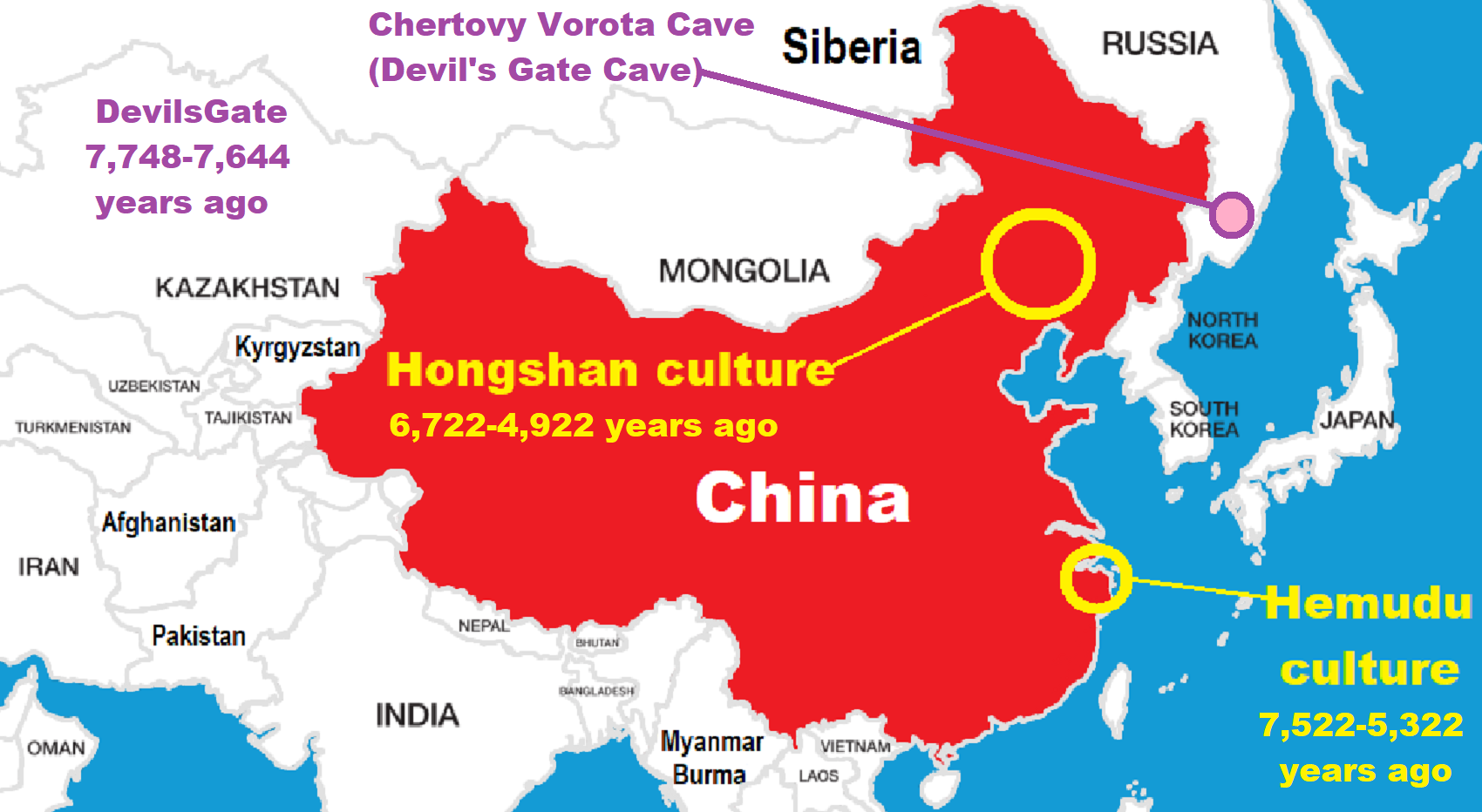

Kurgan Hypothesis
“The Kurgan hypothesis (also known as the Kurgan theory or Kurgan model) or Steppe theory is the most widely accepted proposal to identify the Proto-Indo-European homeland from which the Indo-European languages spread out throughout Europe and parts of Asia. It postulates that the people of a Kurgan culture in the Pontic steppe north of the Black Sea were the most likely speakers of the Proto-Indo-European language (PIE). The term is derived from the Russian kurgan (курга́н), meaning tumulus or burial mound. The Steppe theory was first formulated by Otto Schrader (1883) and V. Gordon Childe (1926), then systematized in the 1950s by Marija Gimbutas, who used the term to group various prehistoric cultures, including the Yamnaya (or Pit Grave) culture and its predecessors. In the 2000s, David Anthony instead used the core Yamnaya culture and its relationship with other cultures as a point of reference.” ref
“Gimbutas defined the Kurgan culture as composed of four successive periods, with the earliest (Kurgan I) including the Samara and Seroglazovo cultures of the Dnieper–Volga region in the Copper Age (early 4th millennium BCE). The people of these cultures were nomadic pastoralists, who, according to the model, by the early 3rd millennium BCE had expanded throughout the Pontic–Caspian steppe and into Eastern Europe. Recent genetics studies have demonstrated that populations bearing specific Y-DNA haplogroups and a distinct genetic signature expanded into Europe and South Asia from the Pontic-Caspian steppe during the third and second millennia BCE. These migrations provide a plausible explanation for the spread of at least some of the Indo-European languages, and suggest that the alternative Anatolian hypothesis, which places the Proto-Indo-European homeland in Neolithic Anatolia, is less likely to be correct.” ref
“Cultures that Gimbutas considered as part of the “Kurgan culture”:
- Bug–Dniester (6th millennium)
- Samara (5th millennium)
- Khvalynsk (5th millennium)
- Dnieper–Donets (5th to 4th millennia)
- Sredny Stog (mid-5th to mid-4th millennia)
- Maikop–Dereivka (mid-4th to mid-3rd millennia)
- Yamnaya (Pit Grave): This is itself a varied cultural horizon, spanning the entire Pontic–Caspian steppe from the mid-4th to the 3rd millennium.
- Usatovo culture (late 4th millennium)” ref
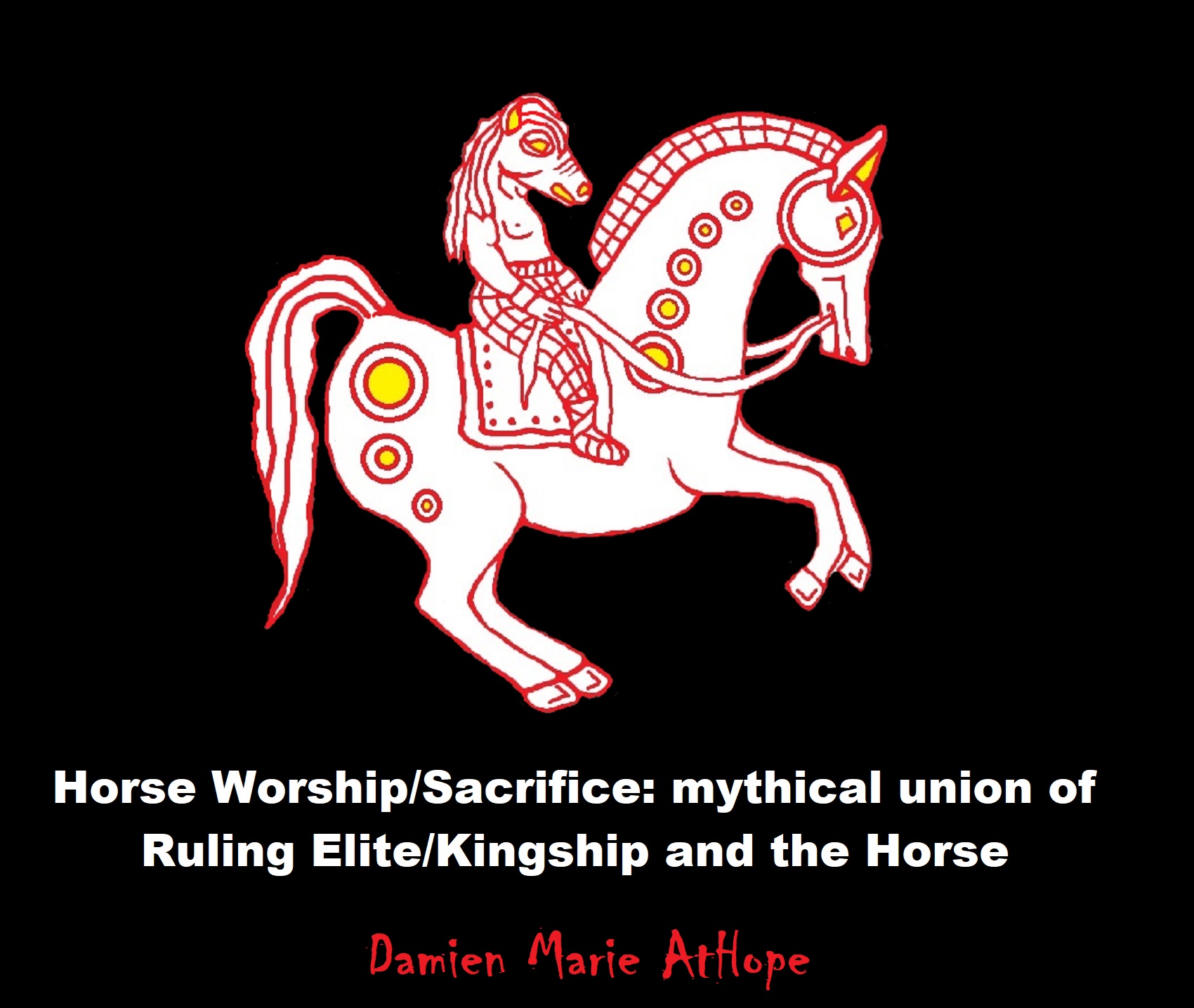
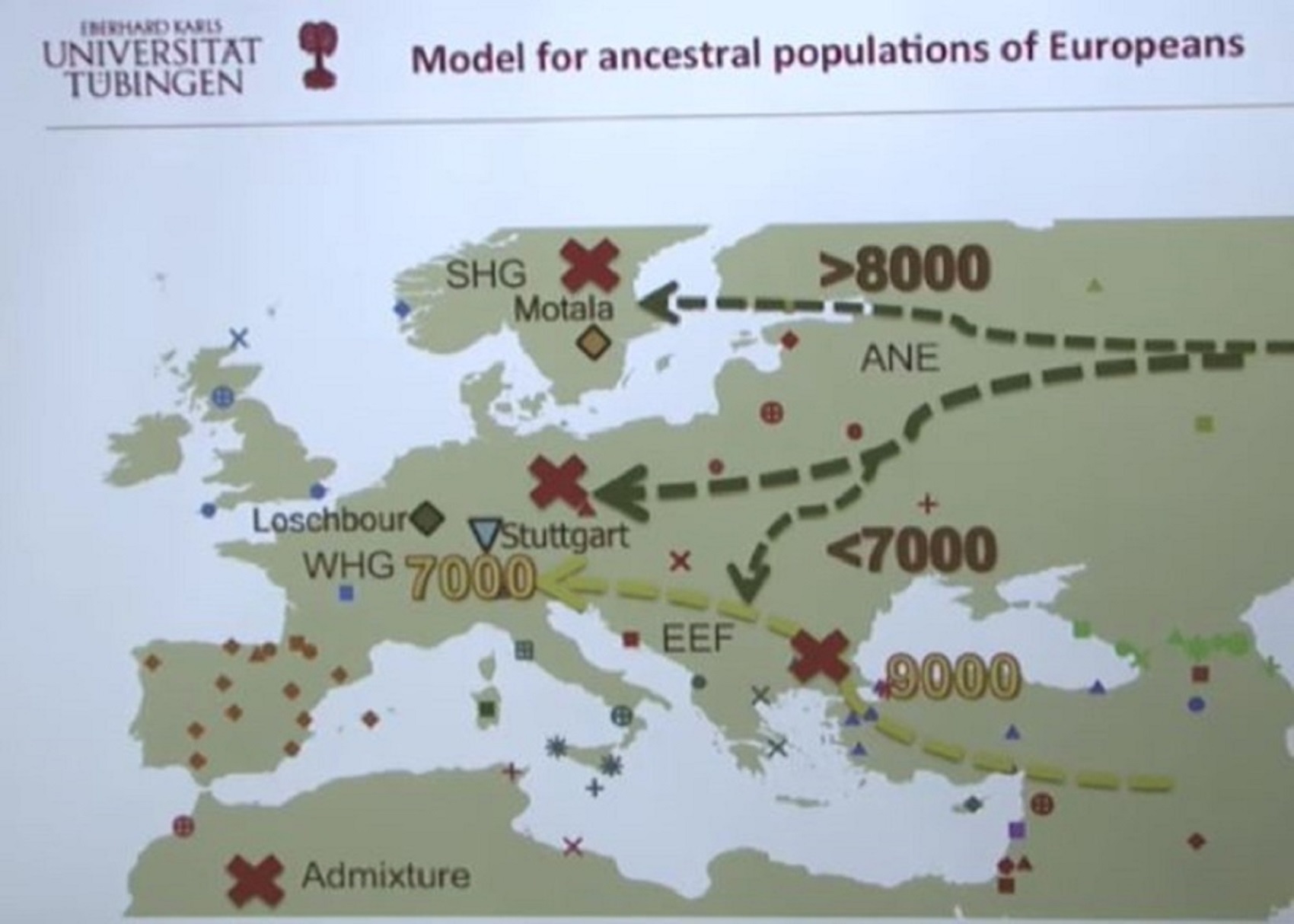
Pic ref
Ancient Human Genomes…Present-Day Europeans – Johannes Krause (Video)
Ancient North Eurasian (ANE)
Eastern Hunter-Gatherer (EHG)
Western Hunter-Gatherers (WHG)
Scandinavian Hunter-Gatherer (SHG)
Early European Farmers (EEF)
A quick look at the Genetic history of Europe
“The most significant recent dispersal of modern humans from Africa gave rise to an undifferentiated “non-African” lineage by some 70,000-50,000 years ago. By about 50–40 ka a basal West Eurasian lineage had emerged, as had a separate East Asian lineage. Both basal East and West Eurasians acquired Neanderthal admixture in Europe and Asia. European early modern humans (EEMH) lineages between 40,000-26,000 years ago (Aurignacian) were still part of a large Western Eurasian “meta-population”, related to Central and Western Asian populations. Divergence into genetically distinct sub-populations within Western Eurasia is a result of increased selection pressure and founder effects during the Last Glacial Maximum (LGM, Gravettian). By the end of the LGM, after 20,000 years ago, A Western European lineage, dubbed West European Hunter-Gatherer (WHG) emerges from the Solutrean refugium during the European Mesolithic. These Mesolithic hunter-gatherer cultures are substantially replaced in the Neolithic Revolution by the arrival of Early European Farmers (EEF) lineages derived from Mesolithic populations of West Asia (Anatolia and the Caucasus). In the European Bronze Age, there were again substantial population replacements in parts of Europe by the intrusion of Ancient North Eurasian (ANE) lineages from the Pontic–Caspian steppes. These Bronze Age population replacements are associated with the Beaker culture archaeologically and with the Indo-European expansion linguistically.” ref
“As a result of the population movements during the Mesolithic to Bronze Age, modern European populations are distinguished by differences in WHG, EEF, and ANE ancestry. Admixture rates varied geographically; in the late Neolithic, WHG ancestry in farmers in Hungary was at around 10%, in Germany around 25%, and in Iberia as high as 50%. The contribution of EEF is more significant in Mediterranean Europe, and declines towards northern and northeastern Europe, where WHG ancestry is stronger; the Sardinians are considered to be the closest European group to the population of the EEF. ANE ancestry is found throughout Europe, with a maximum of about 20% found in Baltic people and Finns. Ethnogenesis of the modern ethnic groups of Europe in the historical period is associated with numerous admixture events, primarily those associated with the Roman, Germanic, Norse, Slavic, Berber, Arab and Turkish expansions. Research into the genetic history of Europe became possible in the second half of the 20th century, but did not yield results with a high resolution before the 1990s. In the 1990s, preliminary results became possible, but they remained mostly limited to studies of mitochondrial and Y-chromosomal lineages. Autosomal DNA became more easily accessible in the 2000s, and since the mid-2010s, results of previously unattainable resolution, many of them based on full-genome analysis of ancient DNA, have been published at an accelerated pace.” ref
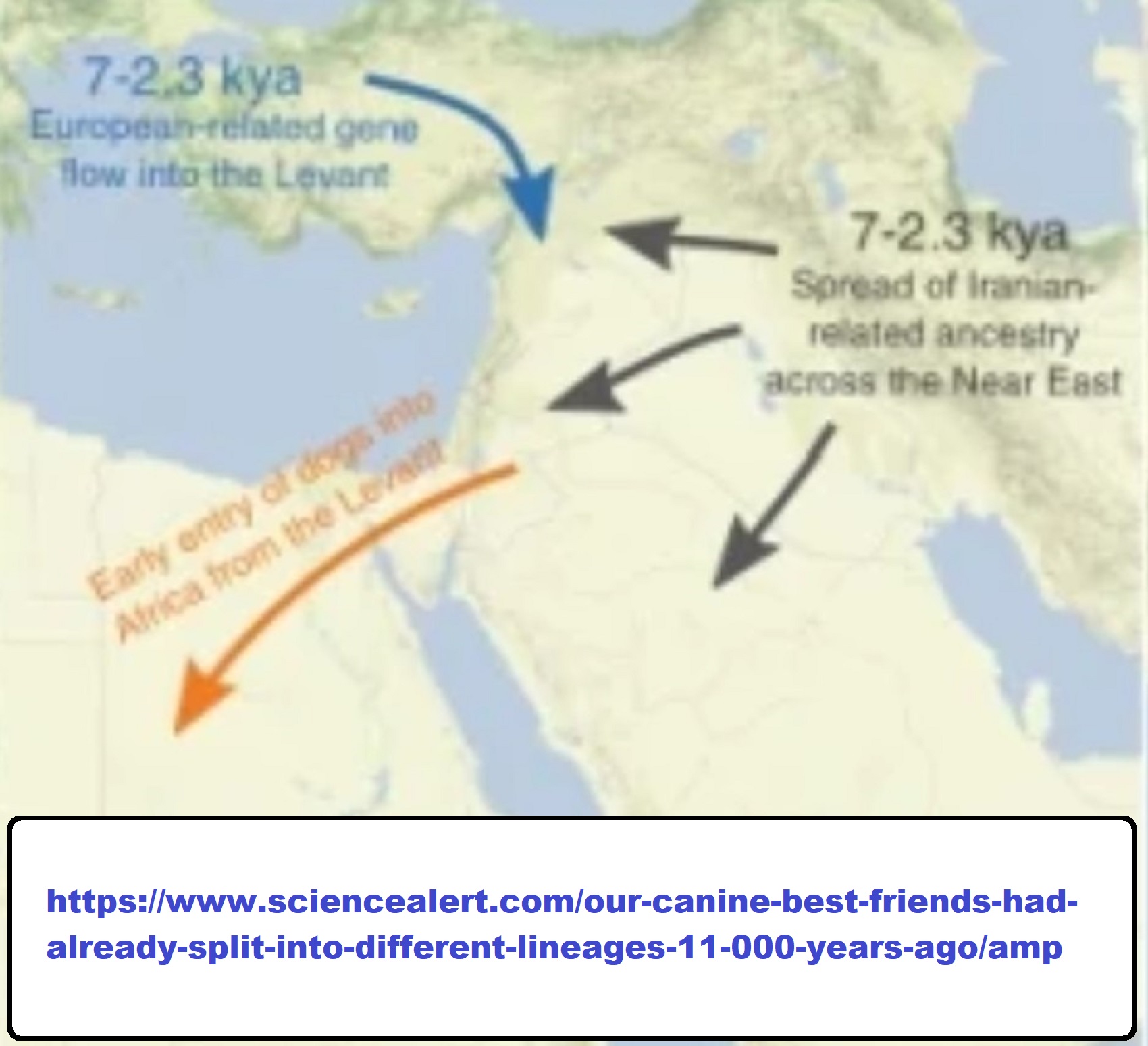
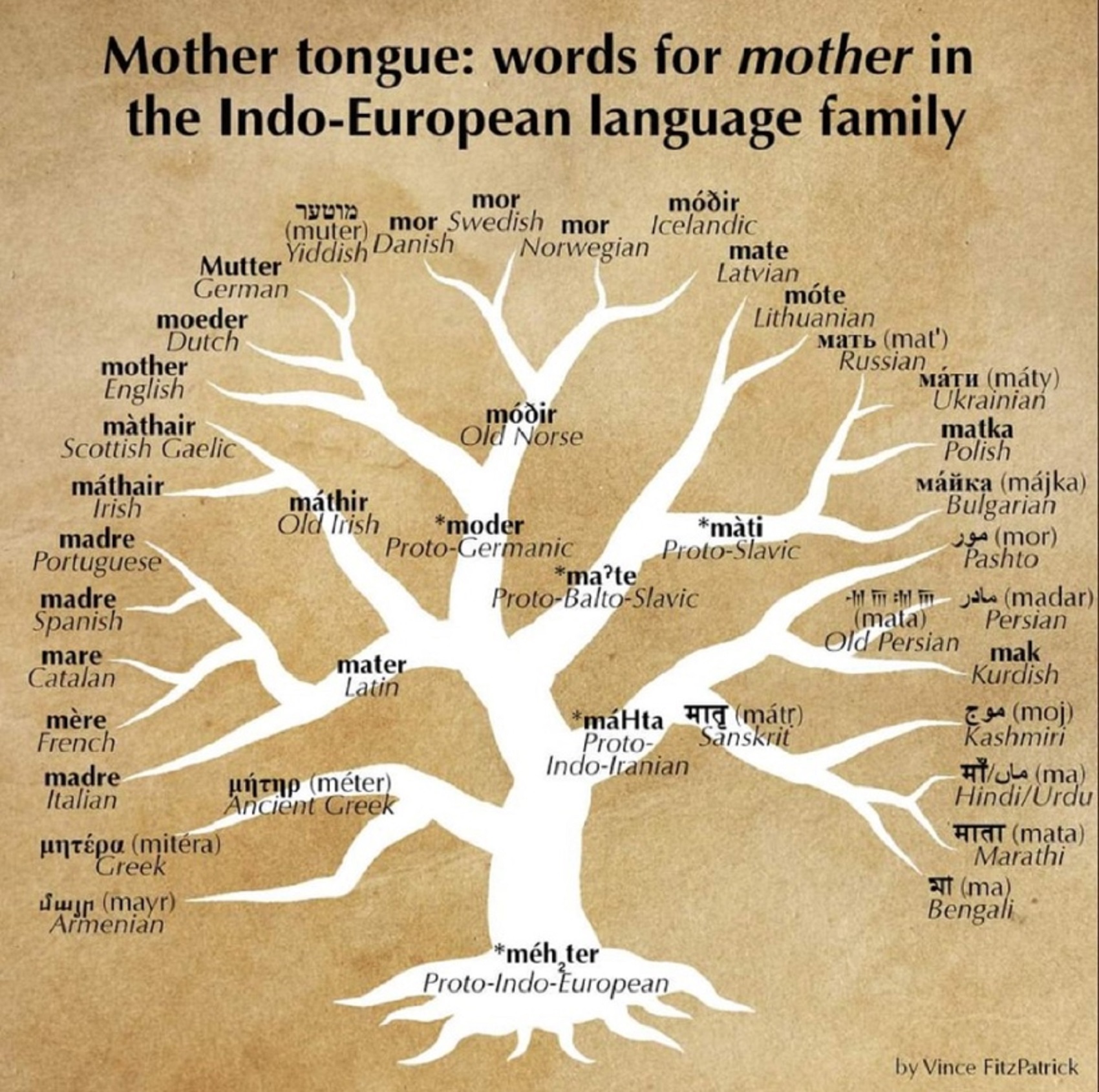


Research Shows Indo-European Languages Originated in Turkey (2012)
“The Indo-European languages belong to one of the widest spread language families of the world. For the last two millennia, many of these languages have been written, and their history is relatively clear. But controversy remains about the time and place of the origins of the family. The majority view in historical linguistics is that the homeland of Indo-European is located in the Pontic steppes – present-day Ukraine – around 6,000 years ago. The evidence for this comes from linguistic paleontology: in particular, certain words to do with the technology of wheeled vehicles are arguably present across all the branches of the Indo-European family; and archaeology tells us that wheeled vehicles arose no earlier than this date. The minority view links the origins of Indo-European with the spread of farming from Anatolia 8,000-9,500 years ago. The team’s innovative Bayesian phylogeographic analysis of Indo-European linguistic and spatial data, including basic vocabulary data from 103 ancient and contemporary Indo-European languages, decisively supports this theory. The linguists report their results in a paper in the journal Science.” ref
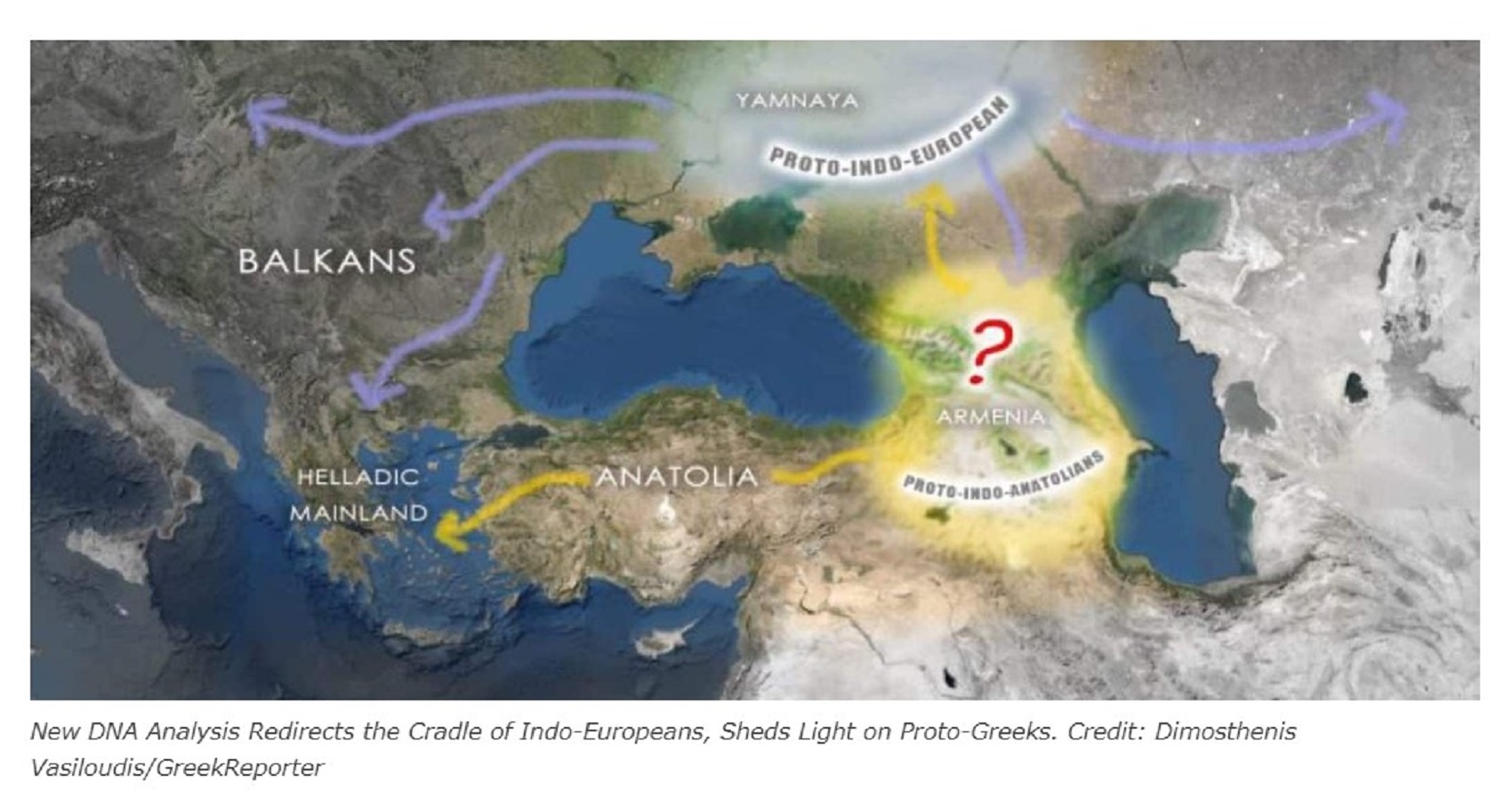

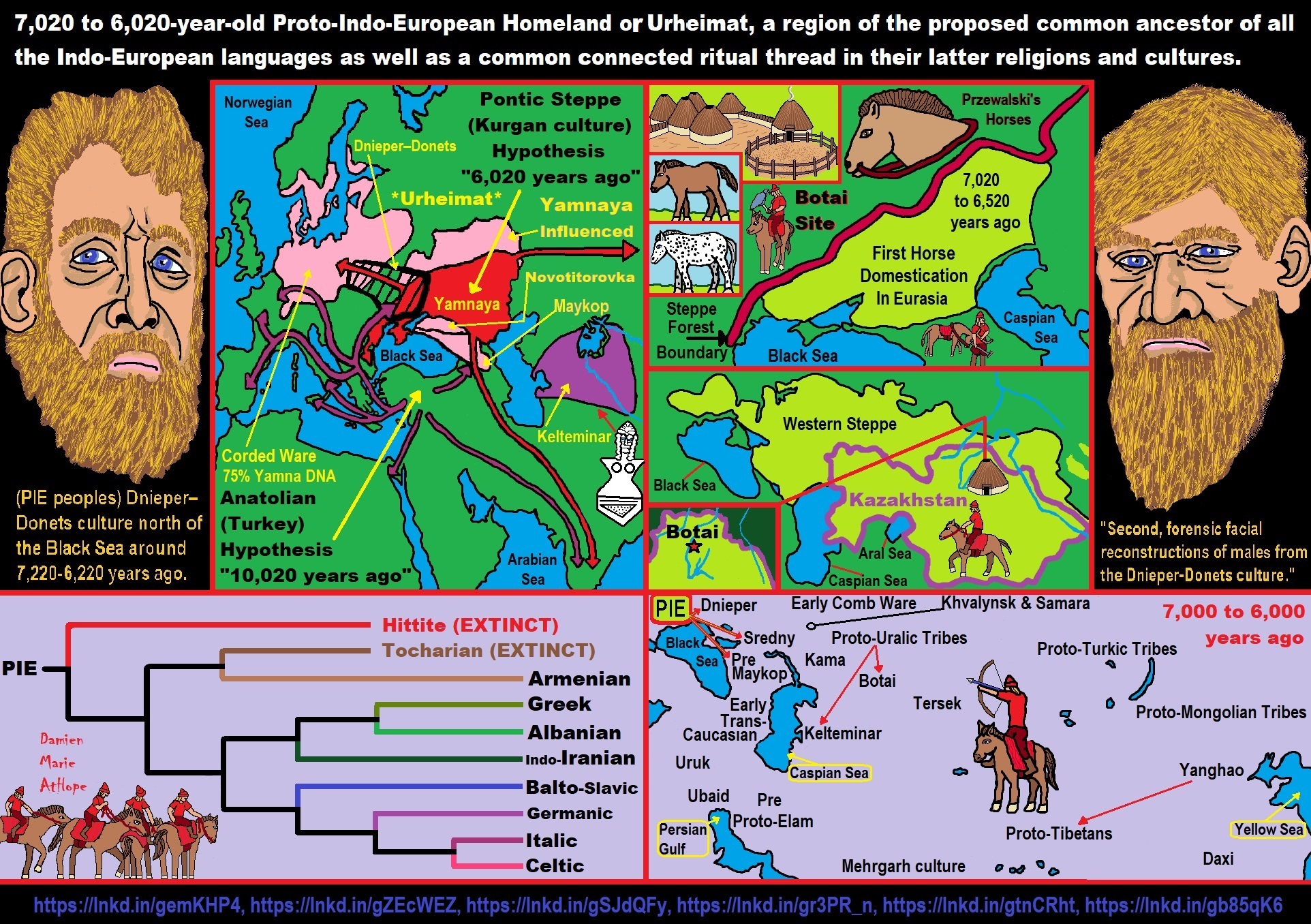
Yamnaya culture?
“The Yamnaya culture (Russian: ‘culture of pits’) also known as the Yamnaya Horizon, Yamna culture, Pit Grave culture or Ochre Grave culture, was a late Copper Age to early Bronze Age archaeological culture of the region between the Southern Bug, Dniester, and Ural rivers (the Pontic steppe), dating to 3300–2600 BCE or 5,321-4,621 years ago. Its name derives from its characteristic burial tradition: Я́мная (romanization: yamnaya) is a Russian adjective that means ‘related to pits (yama)’, and these people used to bury their dead in tumuli (kurgans) containing simple pit chambers.” ref
“The people of the Yamnaya culture were likely the result of a genetic admixture between the descendants of Eastern European Hunter-Gatherers (EHG) and people related to hunter-gatherers from the Caucasus (CHG), an ancestral component which is often named “Steppe ancestry”, with an additional admixture of up to 18% from Early European Farmers. Their material culture was very similar to the Afanasevo culture, and the populations of both cultures are genetically indistinguishable. They lived primarily as nomads, with a chiefdom system and wheeled carts and wagons that allowed them to manage large herds.” ref
“They are also closely connected to Final Neolithic cultures, which later spread throughout Europe and Central Asia, especially the Corded Ware people and the Bell Beaker culture, as well as the peoples of the Sintashta, Andronovo, and Srubnaya cultures. Back migration from Corded Ware also contributed to Sintashta and Andronovo. In these groups, several aspects of the Yamnaya culture are present. Genetic studies have also indicated that these populations derived large parts of their ancestry from the steppes.” ref
“According to Pavel Dolukhanov (1996) the emergence of the Pit-Grave culture represents a social development of various local Bronze Age cultures, representing “an expression of social stratification and the emergence of chiefdom-type nomadic social structures”, which in turn intensified inter-group contacts between essentially heterogeneous social groups.” ref
“According to Mallory (1999), “The origin of the Yamnaya culture is still a topic of debate,” with proposals for its origins pointing to both Khvalynsk and Sredny Stog. The Khvalynsk culture (4700–3800 BCE or 6,721-5,821 years ago) (middle Volga) and the Don-based Repin culture (ca.3950–3300 BCE or 5,971-5,321 years ago) in the eastern Pontic-Caspian steppe, and the closely related Sredny Stog culture (c. 4500–3500 BCE or 6,521-5,521 years ago) in the western Pontic-Caspian steppe, preceded the Yamnaya culture (3300–2500 BCE or 5,321-4,521 years ago).” ref
“According to Anthony (2007), the Yamnaya culture (3300–2600 BCE or 5,321-4,621 years ago) originated in the Don–Volga area at ca. 3400 BCE or 5,421 years ago, preceded by the middle Volga-based Khvalynsk culture and the Don-based Repin culture (c. 3950–3300 BCE or 5,971-5,321 years ago), arguing that late pottery from these two cultures can barely be distinguished from early Yamnaya pottery. Earlier continuity from eneolithic but largely hunter-gatherer Samara culture and influences from the more agricultural Dnieper–Donets II are apparent.” ref
“Alternatively, Parpola (2015) relates both the Corded ware culture and the Yamnaya culture to the late Tripolye culture. He hypothesizes that “the Tripolye culture was taken over by PIE speakers by c. 4000 BCE or 6,021 years ago,” and that in its final phase the Tripolye culture expanded to the steppes, morphing into various regional cultures which fused with the late Sredny Stog pastoralist cultures, which, he suggests, gave rise to the Yamnaya culture.” ref
“According to Anthony (2007), the early Yamnaya horizon spread quickly across the Pontic–Caspian steppes between c. 3400 and 3200 BCE or 5,421-5,221 years ago: The spread of the Yamnaya horizon was the material expression of the spread of late Proto-Indo-European across the Pontic–Caspian steppes. […] The Yamnaya horizon is the visible archaeological expression of a social adjustment to high mobility – the invention of the political infrastructure to manage larger herds from mobile homes based in the steppes. The Yamnaya (Pit-grave) culture was succeeded in its western range by the Catacomb culture (2800–2200 BCE or 4,821-4,221 years ago); in the east, by the Poltavka culture (2700–2100 BCE or 4,721-4,121 years ago) at the middle Volga. These two cultures were followed by the Srubnaya culture (1800–1200 BCE or 3,821-3,221 years ago).” ref
“The Yamnaya culture is identified with the late Proto-Indo-Europeans, and the Pontic-Caspian steppe is the strongest candidate for the Urheimat (original homeland) of the Proto-Indo-European language.” ref
“Proto-Indo-European (PIE) is the theorized common ancestor of the Indo-European language family. Its proposed features have been derived by linguistic reconstruction from documented Indo-European languages. No direct record of Proto-Indo-European exists. Far more work has gone into reconstructing PIE than any other proto-language, and it is the best understood of all proto-languages of its age. The majority of linguistic work during the 19th century was devoted to the reconstruction of PIE or its daughter proto-languages (such as Proto-Germanic and Proto-Indo-Iranian), and many of the modern techniques of linguistic reconstruction (such as the comparative method) were developed as a result.” ref
“PIE is hypothesized to have been spoken as a single language from 4500 to 2500 BCE or 6,521-4,521 years ago, during the Late Neolithic to Early Bronze Age, though estimates vary by more than a thousand years. According to the prevailing Kurgan hypothesis, the original homeland of the Proto-Indo-Europeans may have been in the Pontic–Caspian steppe of eastern Europe. The linguistic reconstruction of PIE has provided insight into the pastoral culture and patriarchal religion of its speakers. Commonly proposed subgroups of Indo-European languages include Italo-Celtic, Graeco-Aryan, Graeco-Armenian, Graeco-Phrygian, Daco-Thracian, and Thraco-Illyrian.” ref
“As speakers of Proto-Indo-European became isolated from each other through the Indo-European migrations, the regional dialects of Proto-Indo-European spoken by the various groups diverged, as each dialect underwent shifts in pronunciation (the Indo-European sound laws), morphology, and vocabulary. Over many centuries, these dialects transformed into the known ancient Indo-European languages. From there, further linguistic divergence led to the evolution of their current descendants, the modern Indo-European languages. Today, the descendant languages of PIE with the most native speakers are Spanish, English, Portuguese, Hindustani (Hindi and Urdu), Bengali, Russian, Punjabi, German, Persian, French, Marathi, Italian, and Gujarati.” ref
“PIE is believed to have had an elaborate system of morphology that included inflectional suffixes (analogous to English child, child’s, children, children’s) as well as ablaut (vowel alterations, as preserved in English sing, sang, sung, song) and accent. PIE nominals and pronouns had a complex system of declension, and verbs similarly had a complex system of conjugation. The PIE phonology, particles, numerals, and copula are also well-reconstructed.” ref
“Asterisks are used as a conventional mark of reconstructed words, such as *wódr̥, *ḱwṓ, or *tréyes; these forms are the reconstructed ancestors of the modern English words water, hound, and three, respectively. Scholars have proposed multiple hypotheses about when, where, and by whom PIE was spoken. The Kurgan hypothesis, first put forward in 1956 by Marija Gimbutas, has become the most popular. It proposes that the original speakers of PIE were the Yamnaya culture associated with the kurgans (burial mounds) on the Pontic–Caspian steppe north of the Black Sea.” ref
“According to the theory, they were nomadic pastoralists who domesticated the horse, which allowed them to migrate across Europe and Asia in wagons and chariots. By the early 3rd millennium BCE, they had expanded throughout the Pontic–Caspian steppe and into eastern Europe. Other theories include the Anatolian hypothesis, which posits that PIE spread out from Anatolia with agriculture around 9000 BCE or 11,021 years ago, the Armenian hypothesis, the Paleolithic continuity paradigm, and the indigenous Aryans theory. An overview map summarises the origin theories.” ref
“Scheme of Indo-European language dispersals from c. 4000 to 1000 BCE according to the widely held Kurgan hypothesis. – Center: Steppe cultures
1 (black): Anatolian languages (archaic PIE)
2 (black): Afanasievo culture (early PIE)
3 (black) Yamnaya culture expansion (Pontic-Caspian steppe, Danube Valley) (late PIE)
4A (black): Western Corded Ware
4B-C (blue & dark blue): Bell Beaker; adopted by Indo-European speakers
5A-B (red): Eastern Corded ware
5C (red): Sintashta (proto-Indo-Iranian)
6 (magenta): Andronovo
7A (purple): Indo-Aryans (Mittani)
7B (purple): Indo-Aryans (India)
[NN] (dark yellow): proto-Balto-Slavic
8 (grey): Greek
9 (yellow): Iranians
– [not drawn]: Armenian, expanding from the western steppe. ref
Proto-Indo-European mythology?
“Proto-Indo-European mythology is the body of myths and deities associated with the Proto-Indo-Europeans, the hypothetical speakers of the reconstructed Proto-Indo-European language. Although the mythological motifs are not directly attested – since Proto-Indo-European speakers lived in preliterate societies – scholars of comparative mythology have reconstructed details from inherited similarities found among Indo-European languages, based on the assumption that parts of the Proto-Indo-Europeans’ original belief systems survived in the daughter traditions.” ref
“The Proto-Indo-European pantheon includes a number of securely reconstructed deities, since they are both cognates – linguistic siblings from a common origin –, and associated with similar attributes and body of myths: such as *Dyḗws Ph₂tḗr, the daylight-sky god; his consort *Dʰéǵʰōm, the earth mother; his daughter *H₂éwsōs, the dawn goddess; his sons the Divine Twins; and *Seh₂ul, a solar goddess. Some deities, like the weather god *Perkʷunos or the herding-god *Péh₂usōn, are only attested in a limited number of traditions – Western (European) and Graeco-Aryan, respectively – and could therefore represent late additions that did not spread throughout the various Indo-European dialects.” ref
“Some myths are also securely dated to Proto-Indo-European times, since they feature both linguistic and thematic evidence of an inherited motif: a story portraying a mythical figure associated with thunder and slaying a multi-headed serpent to release torrents of water that had previously been pent up; a creation myth involving two brothers, one of whom sacrifices the other in order to create the world; and probably the belief that the Otherworld was guarded by a watchdog and could only be reached by crossing a river.” ref
“Various schools of thought exist regarding possible interpretations of the reconstructed Proto-Indo-European mythology. The main mythologies used in comparative reconstruction are Indo-Iranian, Baltic, Roman, and Norse, often supported with evidence from the Celtic, Greek, Slavic, Hittite, Armenian, Illyrian, and Albanian traditions as well. One of the earliest attested and thus one of the most important of all Indo-European mythologies is Vedic mythology, especially the mythology of the Rigveda, the oldest of the Vedas.” ref
“Early scholars of comparative mythology such as Friedrich Max Müller stressed the importance of Vedic mythology to such an extent that they practically equated it with Proto-Indo-European myths. Modern researchers have been much more cautious, recognizing that, although Vedic mythology is still central, other mythologies must also be taken into account.” ref
“Another of the most important source mythologies for comparative research is Roman mythology. Contrary to the frequent erroneous statement made by some authors that “Rome has no myth”, the Romans possessed a very complex mythological system, parts of which have been preserved through the characteristic Roman tendency to rationalize their myths into historical accounts. Despite its relatively late attestation, Norse mythology is still considered one of the three most important of the Indo-European mythologies for comparative research, due to the vast bulk of surviving Icelandic material.” ref
“Baltic mythology has also received a great deal of scholarly attention, as it is linguistically the most conservative and archaic of all surviving branches, but has so far remained frustrating to researchers because the sources are so comparatively late. Nonetheless, Latvian folk songs are seen as a major source of information in the process of reconstructing Proto-Indo-European myth. Despite the popularity of Greek mythology in western culture, Greek mythology is generally seen as having little importance in comparative mythology due to the heavy influence of Pre-Greek and Near Eastern cultures, which overwhelms what little Indo-European material can be extracted from it. Consequently, Greek mythology received minimal scholarly attention until the first decade of the 21st century.” ref
“Although Scythians are considered relatively conservative in regards to Proto-Indo-European cultures, retaining a similar lifestyle and culture, their mythology has very rarely been examined in an Indo-European context and infrequently discussed in regards to the nature of the ancestral Indo-European mythology. At least three deities, Tabiti, Papaios, and Api, are generally interpreted as having Indo-European origins, while the remaining have seen more disparate interpretations. Influence from Siberian, Turkic, and even Near Eastern beliefs, on the other hand, are more widely discussed in literature.” ref
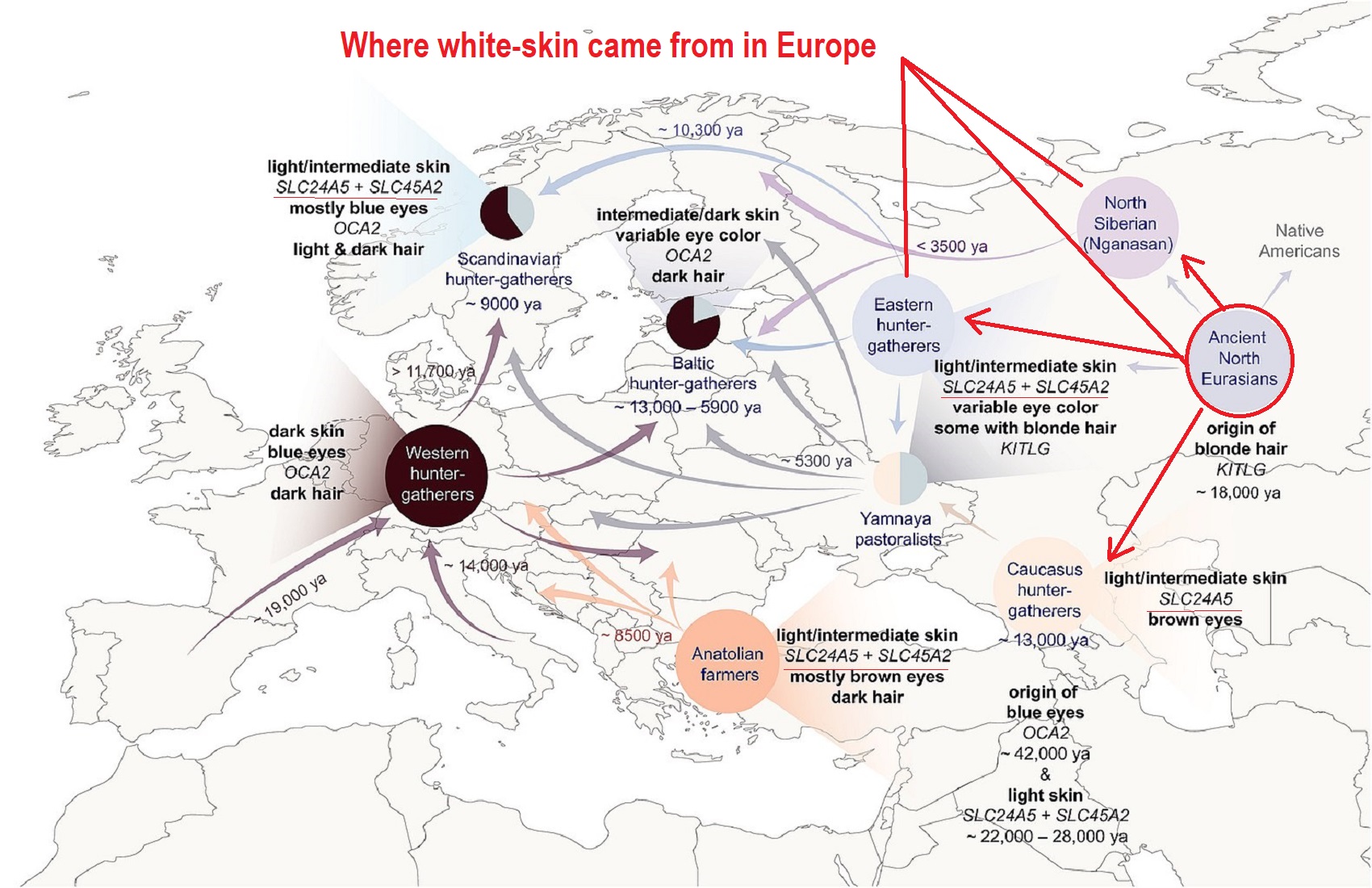
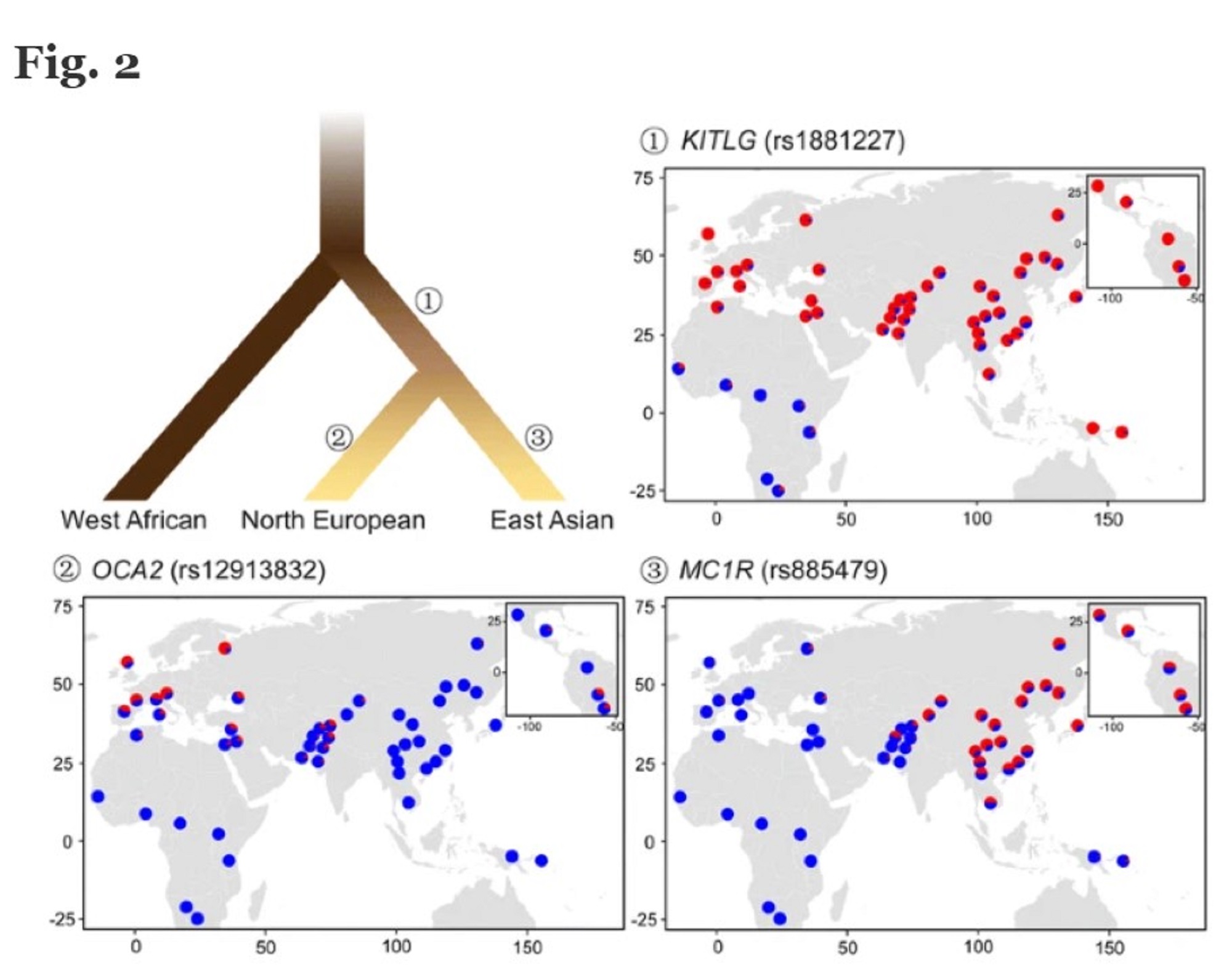
“Evolutionary model of human pigmentation in three continental populations. The rooted tree shows the genetic phylogeny of human populations from Africa, North Europe, and East Asia, with the colors of the branches roughly indicating the generalized skin pigmentation level of these populations. Genetic loci reported to be under positive selection in the common ancestor of modern Eurasians are represented by rs1881227 in KITLG, and those independently evolved in Europeans and East Asians, indicating possible convergent evolution, are represented by rs12913832 in OCA2 and rs885479 in MC1R, respectively.” ref
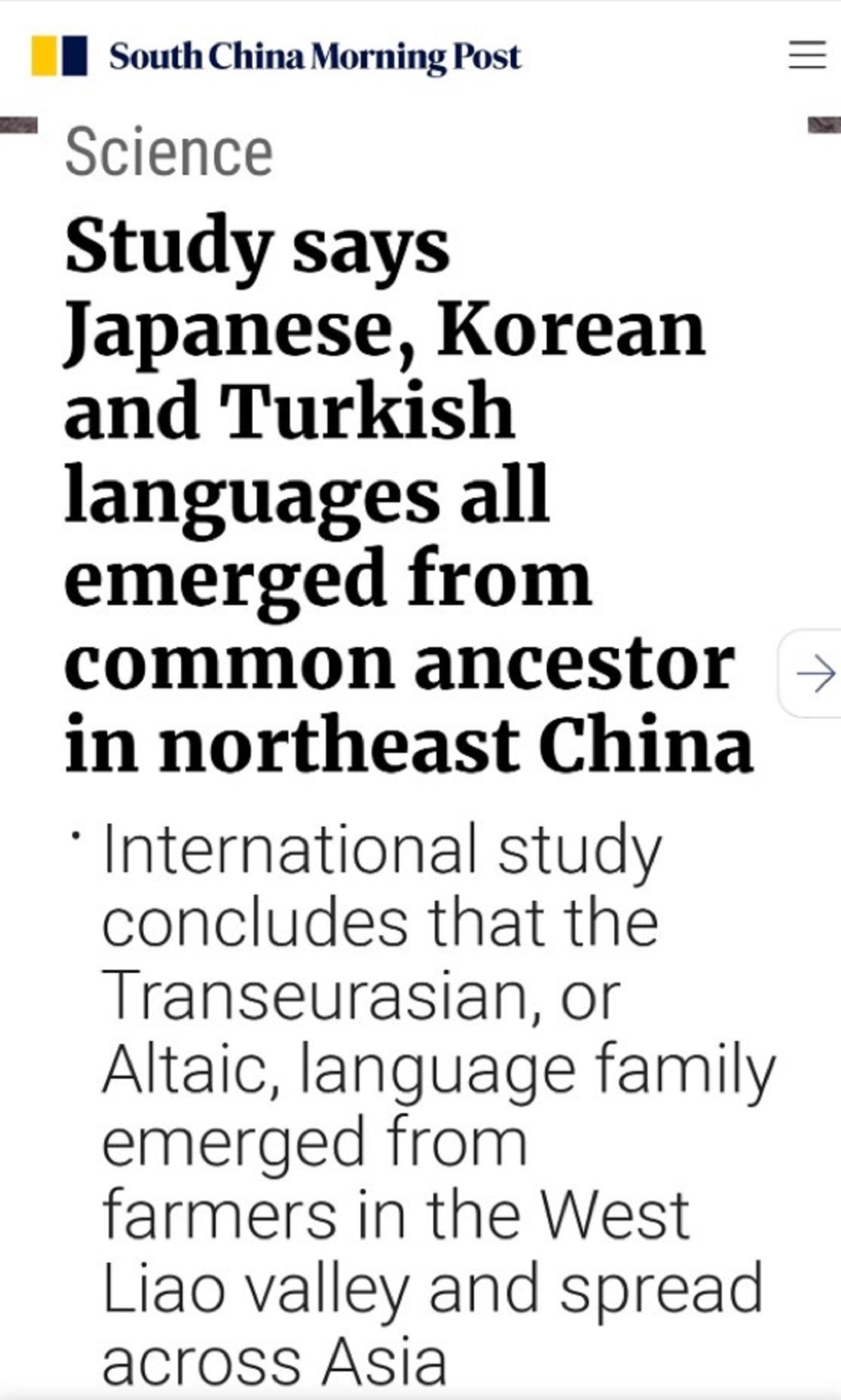
“The study says Japanese, Korean and Turkish languages all emerged from a common ancestor in northeast China. The international study concludes that the Transeurasian, or Altaic, language family emerged from farmers in the West Liao valley and spread across Asia. The link between the five groups in the family has been hotly contested, but researchers say there is archaeological and genetic evidence to support the theory.” ref
Bone or Flesh: Defleshing and Post-Depositional Treatments at Körtik Tepe (Southeastern Anatolia, PPNA Period): https://www.academia.edu/8530779/Bone_or_Flesh_Defleshing_and_Post_Depositional_Treatments_at_K%C3%B6rtik_Tepe_Southeastern_Anatolia_PPNA_Period_?email_work_card=title
Life, death and the emergence of differential status in the Near Eastern Neolithic: Evidence from Kfar HaHoresh, Lower Galilee, Israel: https://www.academia.edu/8748426/Life_death_and_the_emergence_of_differential_status_in_the_Near_Eastern_Neolithic_Evidence_from_Kfar_HaHoresh_Lower_Galilee_Israel?email_work_card=title
Investigating the influence the domestication of animals had on the animal symbolism of the Neolithic Near East: https://www.academia.edu/10373183/Investigating_the_influence_the_domestication_of_animals_had_on_the_animal_symbolism_of_the_Neolithic_Near_East?email_work_card=title
Heady Business: Skulls, Heads, and Decaptitation in Neolithic Anatolia and Greece: https://www.academia.edu/556095/Heady_Business_Skulls_Heads_and_Decaptitation_in_Neolithic_Anatolia_and_Greece?email_work_card=title
Anarchism and the Archaeology of Anarchic Societies: Resistance to Centralization in the Coast Salish Region of the Pacific Northwest Coast: https://www.academia.edu/2045039/Anarchism_and_the_Archaeology_of_Anarchic_Societies_Resistance_to_Centralization_in_the_Coast_Salish_Region_of_the_Pacific_Northwest_Coast?email_work_card=title
Is it goddess or bear? | The role of Çatalhöyük animal seals in Neolithic symbolism: https://www.academia.edu/6041699/Is_it_goddess_or_bear_The_role_of_%C3%87atalh%C3%B6y%C3%BCk_animal_seals_in_Neolithic_symbolism?email_work_card=title
In and Outside the Square: The Sky and the Power of Belief in Ancient China and the World, c. 4,500 BC – AD 220. Volume I: The Ancient Eurasian World and the Celestial Pivot: https://www.academia.edu/11382971/In_and_Outside_the_Square_The_Sky_and_the_Power_of_Belief_in_Ancient_China_and_the_World_c_4_500_BC_AD_220_Volume_I_The_Ancient_Eurasian_World_and_the_Celestial_Pivot?email_work_card=title
Kurgan Copper Revolution: https://www.academia.edu/14001057/Kurgan_Copper_Revolution?email_work_card=title
“Dynasty 0” Predynastic and Early Dynastic Egypt, Ancient Egyptian History, Egyptian Predynastic chronology: https://www.academia.edu/31304670/Dynasty_0?email_work_card=title
Absolute chronology of the settlement of the Eastern Linear Pottery culture at Moravany: https://www.academia.edu/24741906/Absolute_chronology_of_the_settlement_of_the_Eastern_Linear_Pottery_culture_at_Moravany?email_work_card=title
“Cha Si 48 Pages 2 Files Egyptology, Mesopotamian Archaeology, Mesopotamia History, Chalcolithic Archaeology, Kurgans, Predynastic and Early Dynastic Egypt, Uruk Expansion, Uruk Period, Predynastic Egypt, The Narmer Palette, Predynastic Naqada, Eridu. This anthology of ancient and fresh archaeological artifacts paints a cohesive arc from the beginning of the chalcolithic to the first empires of Uruk and Egypt, ignited around the Black Sea by the Kurgan Copper revolution.” ref
Our side “the Left” is more often on the fact side, the other side “the Right” is a cesspool of mythology, propaganda, cult, conspiracy theories, and anti-intellectualism generally, or at least it seems as so many are out and proud of such foolishness.
Did Indo-European Languages Stem From a Trans-Eurasian Original Language: https://www.academia.edu/49885484/Did_Indo_European_Languages_Stem_From_a_Trans_Eurasian_Original_Language?email_work_card=title
Natufian Beginnings: The consequences of a sedentary lifestyle: https://www.academia.edu/2236450/Natufian_Beginnings_The_consequences_of_a_sedentary_lifestyle?email_work_card=title
M. Vidale, T-Shaped Pillars and Mesolithic “Chiefdoms” in the Prehistory of Southern Eurasia: a Preliminary Note: https://www.academia.edu/3877380/M_Vidale_T_Shaped_Pillars_and_Mesolithic_Chiefdoms_in_the_Prehistory_of_Southern_Eurasia_a_Preliminary_Note?email_work_card=title
Pigs in Space (and Time): Pork Consumption and Identity Negotiations in the Late Bronze and Iron Ages of Ancient Israel, Near Eastern Archaeology 81: 276-299: https://www.academia.edu/38549199/Pigs_in_Space_and_Time_Pork_Consumption_and_Identity_Negotiations_in_the_Late_Bronze_and_Iron_Ages_of_Ancient_Israel_Near_Eastern_Archaeology_81_276-299?email_work_card=title
Ancient Felines and the Great-Goddess in Anatolia: Kubaba and Cybele Goddesses: https://www.academia.edu/220990/Ancient_Felines_and_the_Great-Goddess_in_Anatolia_Kubaba_and_Cybele?email_work_card=title
Anatolia From the Pre-Pottery Neolithic to the End of the Early Bronze Age (10,500–2000 BCE): https://www.academia.edu/40971286/Anatolia_From_the_Pre_Pottery_Neolithic_to_the_End_of_the_Early_Bronze_Age_10_500_2000_bce_?email_work_card=title
Recent excavations at the Neolithic site of yiftahel (Khalet Khalladyiah), lower Galilee: https://www.academia.edu/23733311/Recent_excavations_at_the_Neolithic_site_of_yiftahel_Khalet_Khalladyiah_lower_Galilee?email_work_card=title
Inanna in Mesopotamian Religion and Culture: Reinforcer of Heteronormativity, or Legitimizer of non-Heteronormativity: https://academia.edu/9898651/Inanna_in_Mesopotamian_Religion_and_Culture_Reinforcer_of_Heteronormativity_or_Legitimizer_of_non-Heteronormativity?email_work_card=title
East Asian ethnolinguistic phylogeography: https://www.academia.edu/10168550/East_Asian_ethnolinguistic_phylogeography?email_work_card=minimal-title
Neolithic Levant: Chronology; Natufian overview; Neolithic summary; PPNA (Jericho; Gobekli Tepe; agriculture; lithics); PPNB (Ain Ghazal; herding); PNA (pottery; Yarmukian culture); PNB (Wadi Rabah); main trends: https://www.academia.edu/9552951/Anth.340_Ppt._lecture-3_Neolithic_Levant_Chronology_Natufian_overview_Neolithic_summary_PPNA_Jericho_Gobekli_Tepe_agriculture_lithics_PPNB_Ain_Ghazal_herding_PNA_pottery_Yarmukian_culture_PNB_Wadi_Rabah_main_trends_by_G._Mumford_revised_Sept._2018_?email_work_card=title
Starcevo-Cris Culture in Western Romania – repository, distribution map, state of research and chronology: https://www.academia.edu/1527168/Starcevo-Cris_Culture_in_Western_Romania_-_repository_distribution_map_state_of_research_and_chronology?email_work_card=title
MESOLITHIC PEOPLE FROM CRIMEA: The materials for our study were represented by three skeletons from Murzak‐koba I andII and Fatma‐koba dated to the Upper Paleolithic‐Mesolithic period: https://www.academia.edu/30971852/MESOLITHIC_PEOPLE_FROM_CRIMEA?email_work_card=minimal-title
From Upper Perigordian to the current Non-hierarchical Gravettian in the Cantabrian Region (Northern Spain): Recent Changes, Current Challenges: https://www.academia.edu/16562337/From_Upper_Perigordian_to_the_current_Non-hierarchical_Gravettian_in_the_Cantabrian_Region_Northern_Spain_Recent_Changes_Current_Challenges?email_work_card=minimal-title

“Asian varieties of millet made their way from China to the Black Sea region of Europe by 5000 BCE or 7,000 years ago.” https://en.wikipedia.org/wiki/Millet
Origins of ‘Transeurasian’ languages traced to Neolithic millet farmers in north-eastern China about 9,000 years ago
“A study combining linguistic, genetic, and archaeological evidence has traced the origins of a family of languages including modern Japanese, Korean, Turkish and Mongolian and the people who speak them to millet farmers who inhabited a region in north-eastern China about 9,000 years ago. The findings outlined on Wednesday document a shared genetic ancestry for the hundreds of millions of people who speak what the researchers call Transeurasian languages across an area stretching more than 5,000 miles (8,000km).” ref
“Millet was an important early crop as hunter-gatherers transitioned to an agricultural lifestyle. There are 98 Transeurasian languages, including Korean, Japanese, and various Turkic languages in parts of Europe, Anatolia, Central Asia, and Siberia, various Mongolic languages, and various Tungusic languages in Manchuria and Siberia. This language family’s beginnings were traced to Neolithic millet farmers in the Liao River valley, an area encompassing parts of the Chinese provinces of Liaoning and Jilin and the region of Inner Mongolia. As these farmers moved across north-eastern Asia over thousands of years, the descendant languages spread north and west into Siberia and the steppes and east into the Korean peninsula and over the sea to the Japanese archipelago.” ref
“Eurasiatic is a proposed language with many language families historically spoken in northern, western, and southern Eurasia; which typically include Altaic (Mongolic, Tungusic, and Turkic), Chukchi-Kamchatkan, Eskimo–Aleut, Indo-European, and Uralic.” ref
“Voiced stops such as /d/ occur in the Indo-European, Yeniseian, Turkic, Mongolian, Tungusic, Japonic and Sino-Tibetan languages. They have also later arisen in several branches of Uralic.” ref
“Uralo-Siberian is a hypothetical language family of Uralic, Yukaghir, Eskimo–Aleut and besides linguistic evidence, several genetic studies, support a common origin in Northeast Asia.” ref
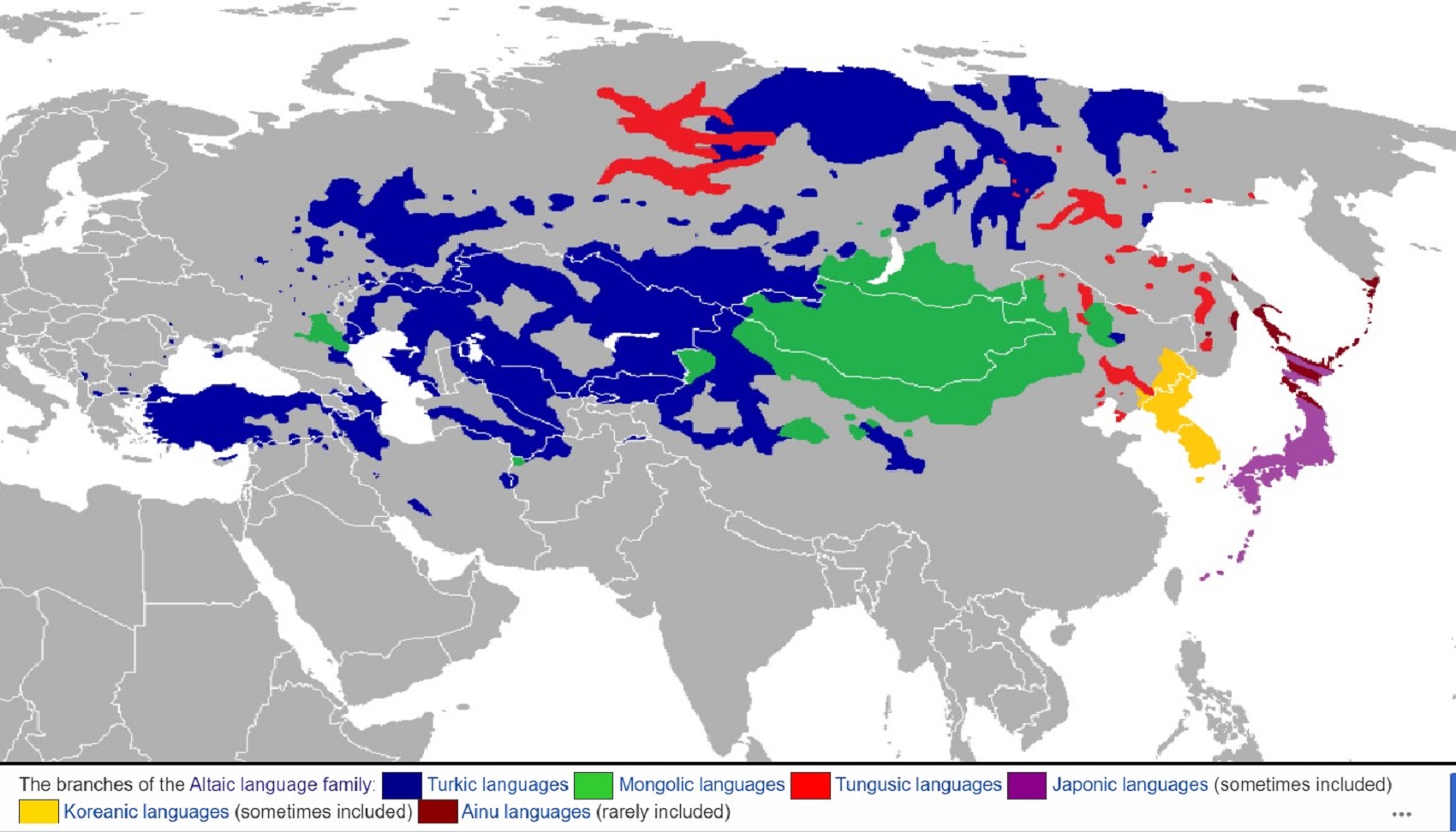
“Altaic (also called Transeurasian) is a proposed language family that would include the Turkic, Mongolic, and Tungusic language families and possibly also the Japonic and Koreanic languages. Speakers of these languages are currently scattered over most of Asia north of 35 °N and in some eastern parts of Europe, extending in longitude from Turkey to Japan. The group is named after the Altai mountain range in the center of Asia.” ref
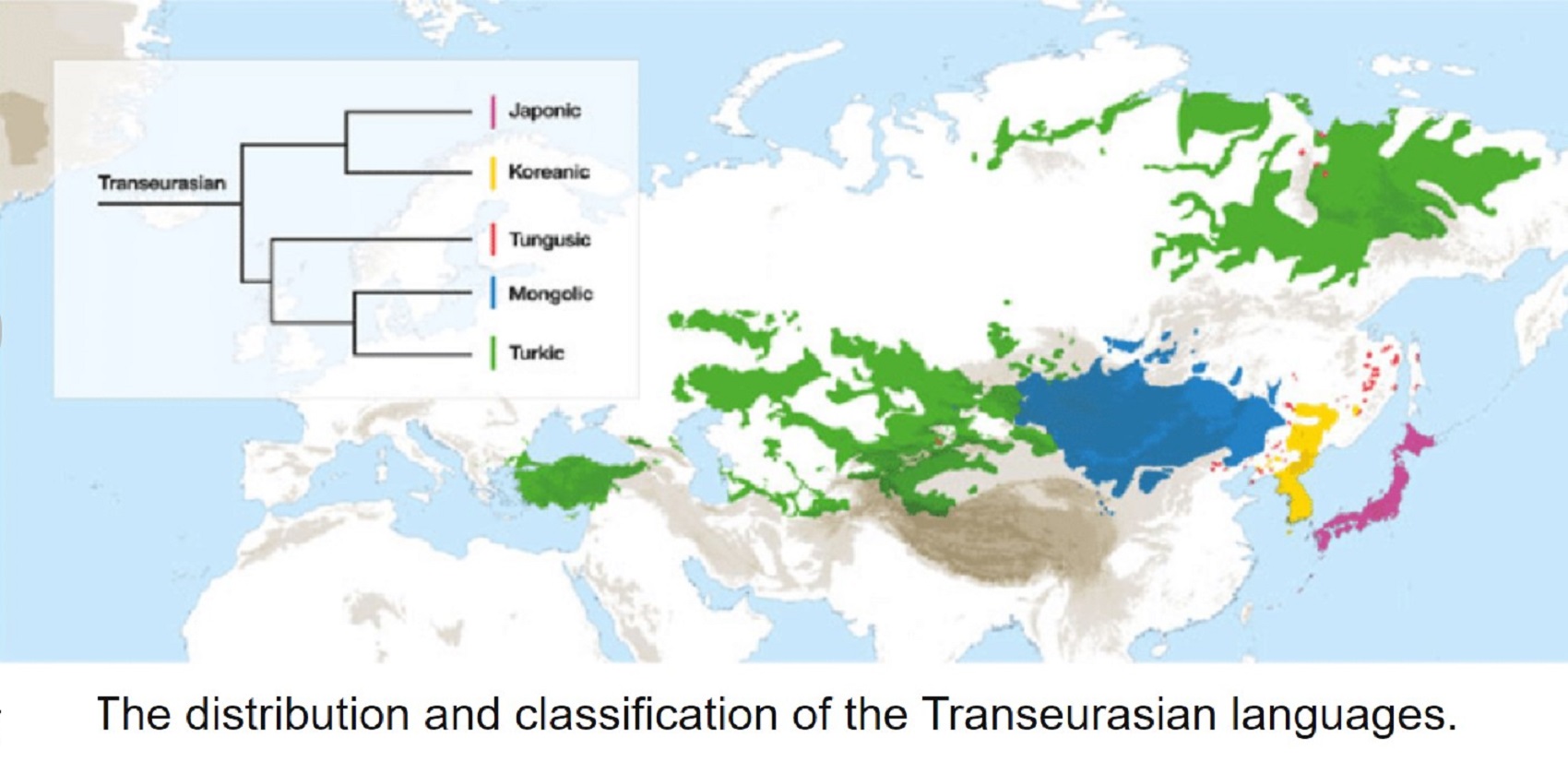
Tracing population movements in ancient East Asia through the linguistics and archaeology of textile production – 2020
Abstract
“Archaeolinguistics, a field which combines language reconstruction and archaeology as a source of information on human prehistory, has much to offer to deepen our understanding of the Neolithic and Bronze Age in Northeast Asia. So far, integrated comparative analyses of words and tools for textile production are completely lacking for the Northeast Asian Neolithic and Bronze Age. To remedy this situation, here we integrate linguistic and archaeological evidence of textile production, with the aim of shedding light on ancient population movements in Northeast China, the Russian Far East, Korea, and Japan. We show that the transition to more sophisticated textile technology in these regions can be associated not only with the adoption of millet agriculture but also with the spread of the languages of the so-called ‘Transeurasian’ family. In this way, our research provides indirect support for the Language/Farming Dispersal Hypothesis, which posits that language expansion from the Neolithic onwards was often associated with agricultural colonization.” ref
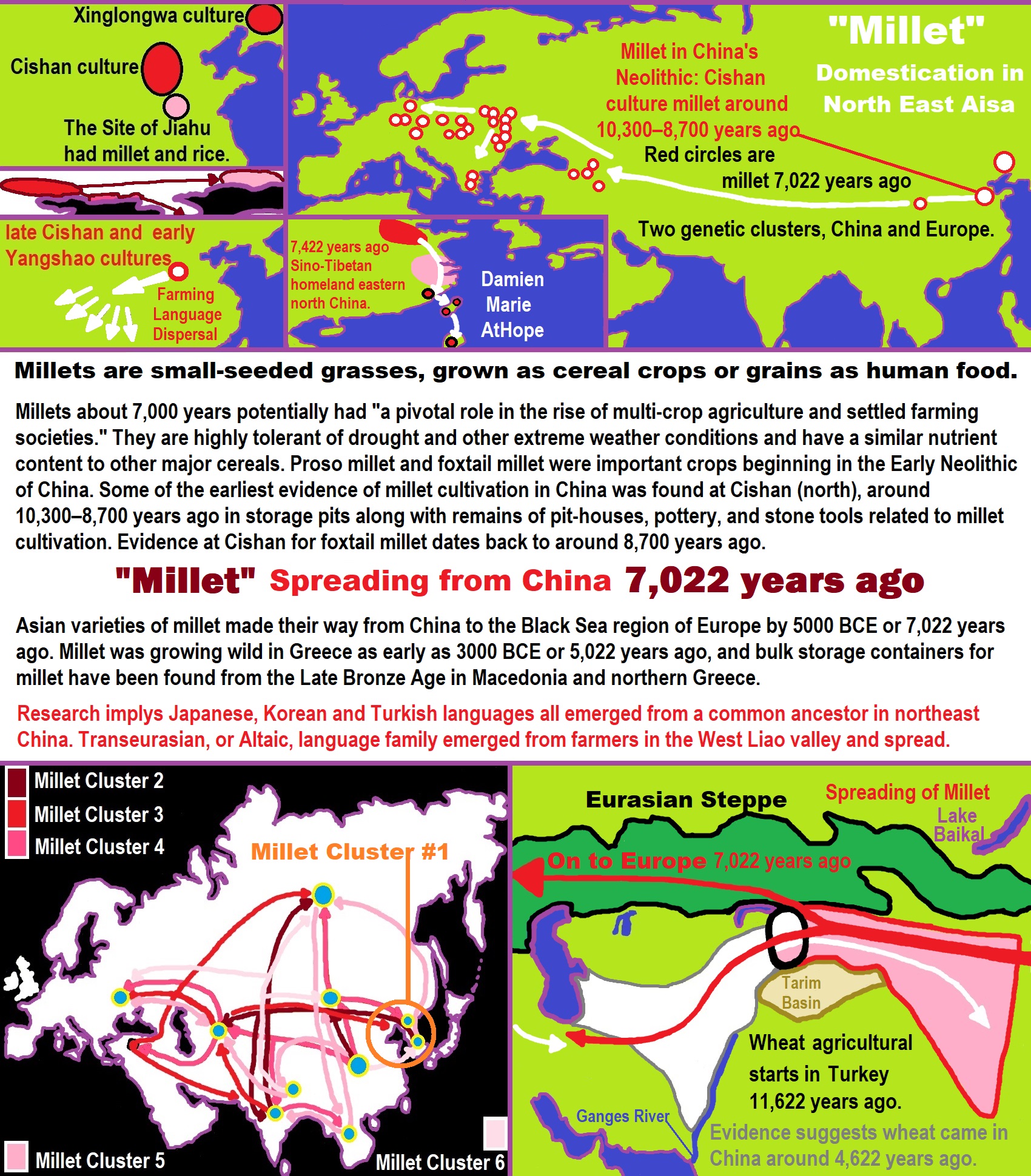
Neolithic site of Çatalhöyük
“BARCELONA, SPAIN—According to a statement released by Pompeu Fabra University, evidence for the processing of wild plants at the Neolithic site of Çatalhöyük has been found by a team of researchers from Pompeu Fabra University and the University of Leicester. The researchers analyzed microscopic traces of plant residues trapped in pits and crevices on stone tools. In addition to wheat, oats, peas, and vegetables grown by the early farmers, the researchers found traces of wild tubers and wild millet seeds. This is the first time the presence of wild millet has been detected at the site. These foraged plants would have supplemented the diet, and indicate that the residents of Çatalhöyük possessed knowledge of the tubers’ seasonal cycles. The study also suggests that the tools were used for other domestic activities in addition to processing plants. Read the original scholarly article about this research in PLOS ONE. To read about a revolutionary technique for radiocarbon dating ceramic artifacts from Çatalhöyük, go to “Carbon Dating Pottery,” one of ARCHAEOLOGY’s Top 10 Discoveries of 2020. At the early Neolithic (ca. 6700–5650 BCE) site of Çatalhöyük in Turkey, dates from four pottery sherds also matched the site’s known chronology.” ref, ref
Bug-Dniester culture
“The first evidence of domestication in the western Eurasia – the productive revolution is dated around the 6th millennium BCE; sheep, goats, and cattle bones together with domesticated grains of wheat, barley, and millet, were found in several sites of the Bug-Dniester cultures. The Bug-Dniester culture had ceramics about 6200 BCE and began to adopt animal domestication & agriculture from Criş people.” ref, ref
Criş Culture
“A northern group of ‘pioneers’ formed the Criş/Körös Culture and occupied northern Balkans and Carpathians 5800-5300 BCE. They had wattle-and-daub walls, small villages of a few families, no cemeteries, continued using Spondylus shell, ornaments, cultivation of barley, millet, peas, emmer wheat, einkorn wheat, spelt wheat, and common bread wheat. They had large #int blades, polished stone axes, ate mutton (sheep meat), and had some use of metal.” ref
Cucuteni–Trypillia culture
“Starting around 5200 the culture of the Balkans and Carpathians changed and become considerably more sophisticated evolving into the CucuteniTripolye Culture. This culture lasted a very long time, until around 3000 BCE. The Bug-Dniester culture disappeared around 4900 BCE as villages with CucuteniTripolye culture appeared east of the Dnieper River. The complex agrarian society of ‘Old Europe’ disappeared in the southern Balkans and northern Greece between 4000-3800 BCE. In northern Greece a ‘dark age’ from 3800-3300 BCE followed, during which settlements became scarce and people returned to dispersed herding economies.” ref
“The Cucuteni–Trypillia culture was a society of subsistence farmers. Cultivating the soil (using an ard or scratch plough), harvesting crops, and tending livestock was probably the main occupation for most people. Typically for a Neolithic culture, the majority of their diet consisted of cereal grains. They cultivated club wheat, oats, rye, proso millet, barley, and hemp, which were probably ground and baked as unleavened bread in clay ovens or on heated stones in the home. They also grew peas and beans, apricot, cherry plum, and wine grapes – though there is no solid evidence that they actually made wine. There is also evidence that they may have kept bees.” ref
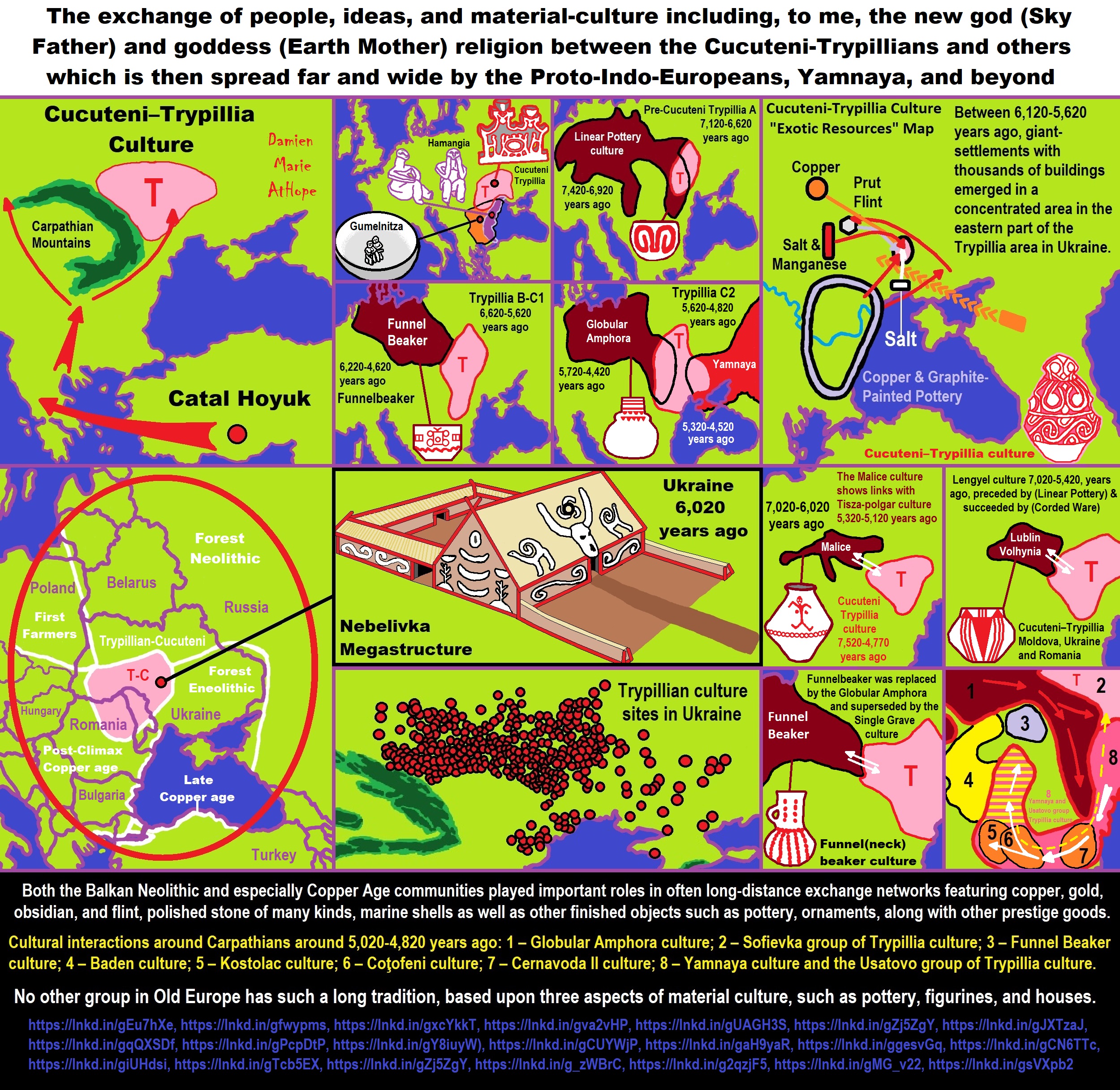
Cucuteni–Trypillia cultural complex
“Analysis 2008 of four males from the Cucuteni–Trypillia cultural complex (CTC / CTCC) of Verteba Cave and found evidence of genetic contact between the Cucuteni–Trypillia culture and steppe populations from the east from as early as 3600 BCE, well before the influx of steppe ancestry into Europe associated with the Yamnaya culture. With respect to Y-DNA, two carried haplogroup G2a2b2a (G-CTS688 and G-PF3330), while one carried G2a-PF3141 and E-CTS10894. With respect to mtDNA, they carried H5a, T2b, HV, and U8b1b. According to admixture analysis they had approximately 75% EEF, 10% both Western and Eastern Hunter-Gatherer, and less than 5% traces of Yamnaya-related ancestry. A 2022 study published in Scientific Reports analyzed 18 new unrelated Trypillians from the Verteba Cave in Ukraine. With respect to Y-DNA haplogroup, three carried G2a2b2a3, two G2a2a1a, one G2a2a1, G2a2a1a3, C1a, I2a1a2a-L161.1, I2a2a1, and I2c, while mtDNA haplogroup, two J1c2, K1a2, T2b and one H, H15a1, H40, J1c5, K1a1b1, K1b1, N1a1a1a, T2, T2c1d1, U5a and U5a2.” ref
“Among the material recovered from the fired clay used in the floors of Cucuteni-Tripolye dwellings, imprints of hulled wheat, naked six-row barley, and hulled barley have been recovered, although the latter was only rarely represented. Other species include bread wheat and, occasionally, broomcorn millet, along with pea, bitter vetch, pulses, and grapes.” ref
Sredni-Stog Culture
“Centered on the Dnieper in Ukraine and extending east to the Don. Probably correspond to the speakers of early Proto-Indo-European. They had some individual graves, beneath small kurgans (mounds) and a mixture of skull shapes, suggesting a mixed population. Strongly ‘agro-pastoralist’ economy (wheat, barley, millet).” ref
“The Sredny Stog culture seems to have had contact with the agricultural Cucuteni-Trypillian culture in the west, centered on modern-day Moldova, and was a contemporary of the Khvalynsk culture in the north-east, located in the middle Volga region. In its three largest cemeteries, Alexandria (39 individuals), Igren (17) and Dereivka (14), evidence of burial in flat graves (ground level pits) has been found. This parallels the practice of the Cucuteni-Trypillia culture, and is in contrast with the later Yamnaya culture, which practiced tumuli burials. In Sredny Stog culture, the deceased were laid to rest on their backs with the legs flexed. The use of ochre in the burial was practiced, as with the kurgan cultures. In the context of the modified Kurgan hypothesis of Marija Gimbutas, this pre-kurgan archaeological culture could represent the Urheimat (homeland) of the Proto-Indo-European language. Others associate this with the later Yamnaya culture.” ref
“Examination of physical remains of the Sredny Stog people has determined that they were Europoid . A similar physical type prevails among the Yamnaya, who were tall and powerfully built. People of the neighboring Khvalynsk culture were less powerfully built. People of the preceding Dnieper-Donets culture were even more powerfully built than the Sredny Stog and Yamnaya. Western Steppe Herder DNA was subsequently detected in several genetically similar or directly related ancient populations including the Khvalynsk, Sredny Stog, and Yamnaya cultures, and found in substantial levels in contemporary European and South Asian populations. And Western Steppe Herder genetic cluster was a result of mixing between Eastern Hunter-Gatherers ( 9% to up to 75% Ancient North Eurasian) from Eastern Europe and Caucasus hunter-gatherers (CHGs). This mixing appears to have happened on the eastern Pontic–Caspian steppe starting around 5,000 BCE. The results suggest that the Yamnaya emerged through mixing between EHG and WHG males, and EEF and CHG females. This implies that the leading clans of the Yamnaya were of EHG paternal origin. On this basis, David W. Anthony argues that the Indo-European languages were originally spoken by EHGs.” ref, ref
Mikhaylovka culture
“In the earlier horizon of Mikhailovka site, impressions of emmer wheat, hulled barley, and millet have been identified in nine potsherds out of 2491, suggesting that agriculture might have been part of the subsistence economic activities. Moreover, also Dereivka and Molyukhov Bugor sites displayed the presence of cereal impressions, in eight vessels. In addition, at the site of Dereivka, 33 tools made of crystalline and sedimentary rock such as granite, quartzite, sandstone, and shale, have been documented. Among these tools, many are related to agricultural activities: querns, grinders, pestles, and stone disks, let to believe that this community was a permanent settlement based on primitive hoe agriculture.” ref
“Moreover, it appeared that millet was widely consumed in the Yamnaya populations. Indeed, in the final stage of Mikhailovka the evidence of millet increased, suggesting an increasing presence of C4 plants in the vegetation and/or in the diet. Other types of cereal imprints, such as einkorn wheat, soft dwarf wheat, and barley, have been also found. Summarizing, the scarce archaeological and archaeobotanical evidence generally suggest that the gathering and processing of plants might have been a component in the subsistence strategies of the ancient North-Pontic people; however, offering a reliable conclusion about this matter is challenging.” ref
“The Mikhaylovka culture, Lower Mykhaylivka culture (3600—3000 BCE) is a Copper Age archaeological culture which flourished on the Pontic steppe from 3600 to 3000 BCE. Lower Mikhaylovka culture is named after an early Yamnaya culture or the Yamna culture site of the late copper age of the lower Dnieper River, noted for its fortifications. Lower Mykhalivka culture is named after lower archaeological layer of the site near Mykhaylivka village of Kherson Oblast. Mikhaylovka I (3600-3400 BCE) had connections to the west, and is related to the Kemi Oba culture (3700-2200 BCE) at the Bug-Dniepr area and the Crimea, and seems to have had connections to the Maykop culture (3700-3000 BCE).” ref
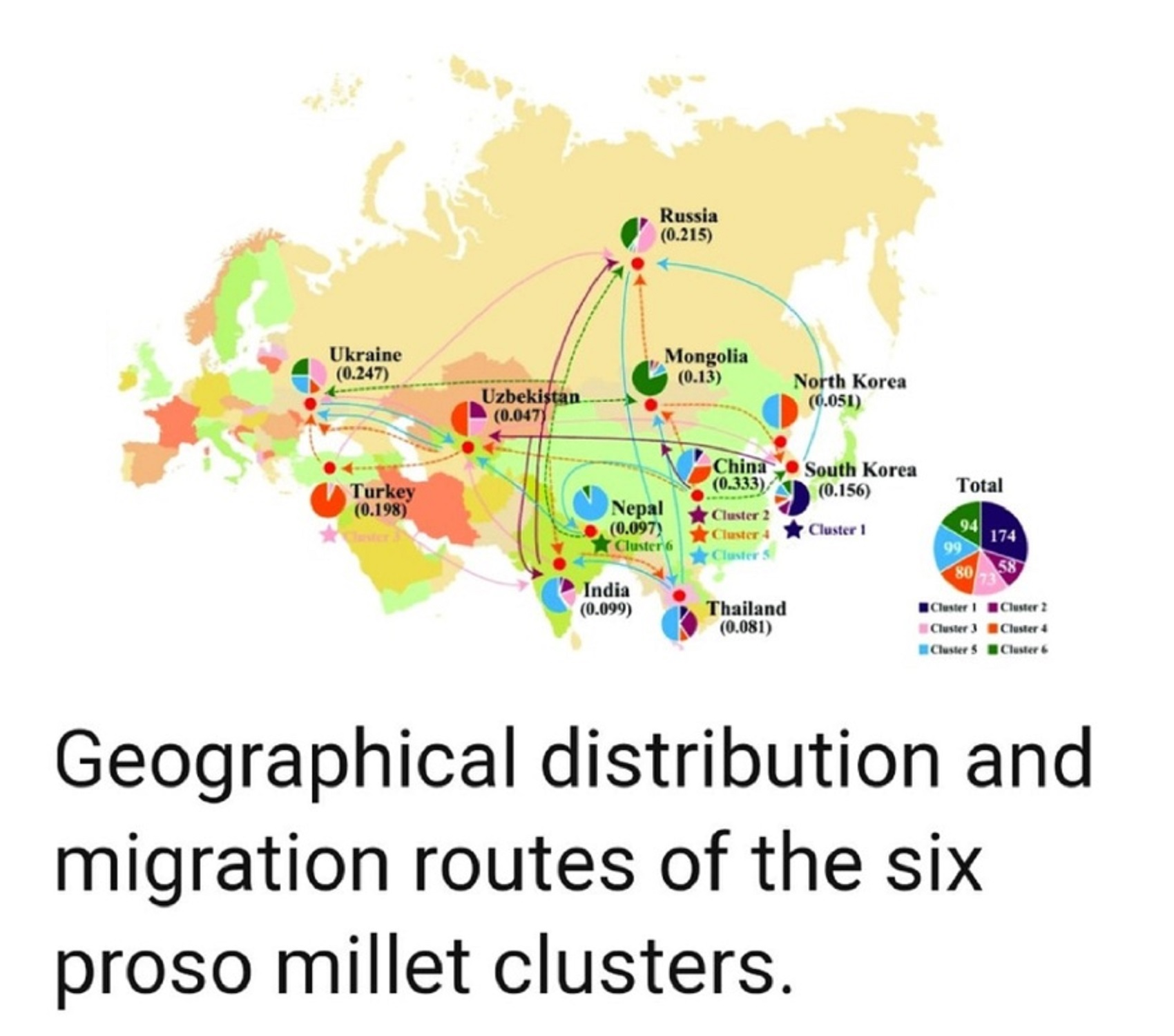
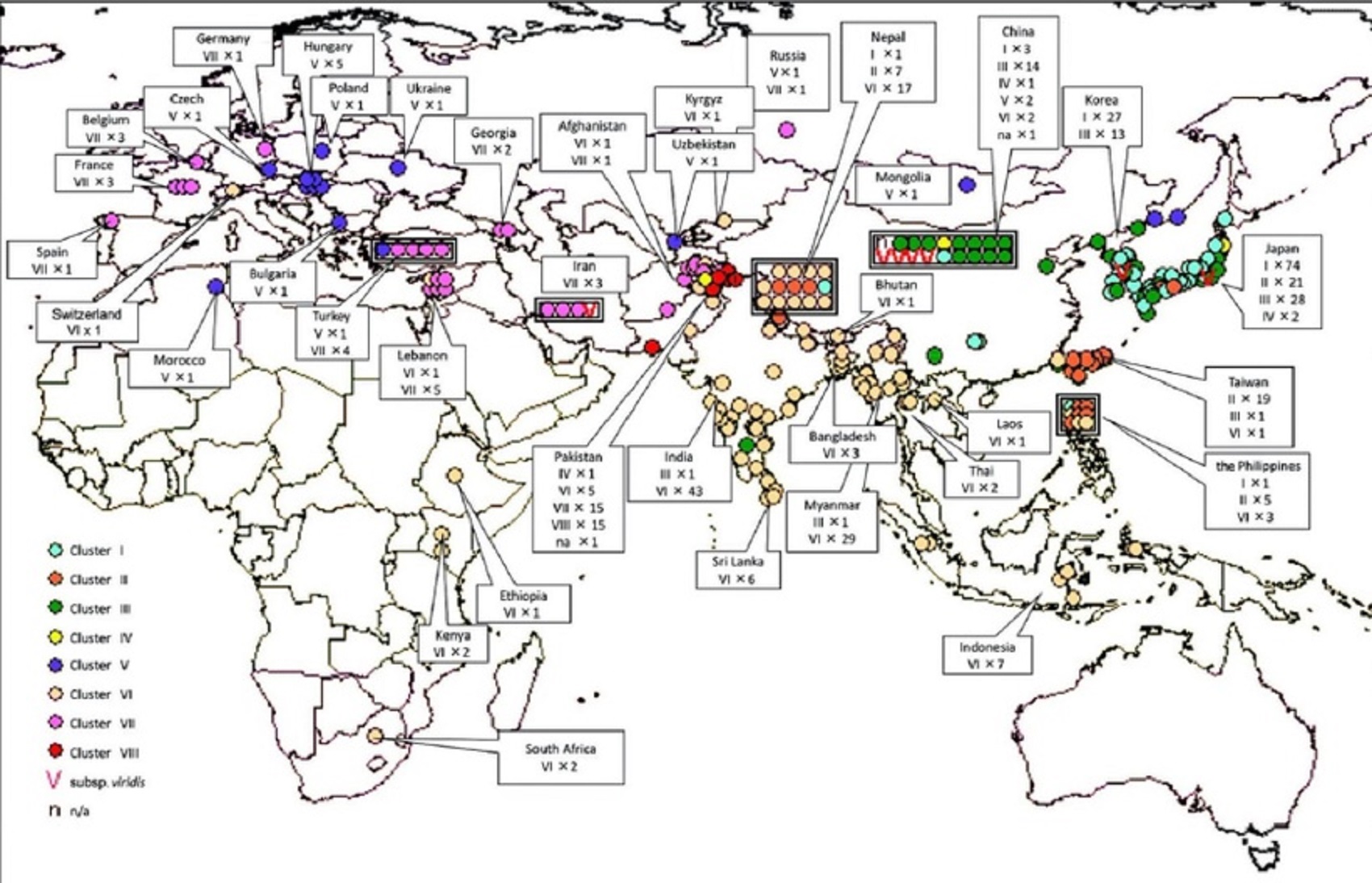
Foxtail Millet
“Genetic structure of landraces in foxtail millet (Setaria italica (L.) P. Beauv.) revealed with transposon display and interpretation to crop evolution of foxtail millet. We used three recently active transposons (TSI-1, TSI-7, and TSI-10) as genome-wide markers and succeeded in demonstrating geographical structures of the foxtail millet. A neighbor-joining dendrogram based on TD grouped the foxtail millet accessions into eight major clusters, each of which consisted of accessions collected from adjacent geographical areas. Eleven out of 12 green foxtail accessions were grouped separately from the clusters of foxtail millet. These results indicated strong regional differentiations and a long history of cultivation in each region.” ref



ref, ref, ref, ref, ref, ref, ref, ref, ref, ref, ref, ref, ref, ref, ref, ref, ref
“The shaman is, above all, a connecting figure, bridging several worlds for his people, traveling between this world, the underworld, and the heavens. He transforms himself into an animal and talks with ghosts, the dead, the deities, and the ancestors. He dies and revives. He brings back knowledge from the shadow realm, thus linking his people to the spirits and places which were once mythically accessible to all.–anthropologist Barbara Meyerhoff” ref
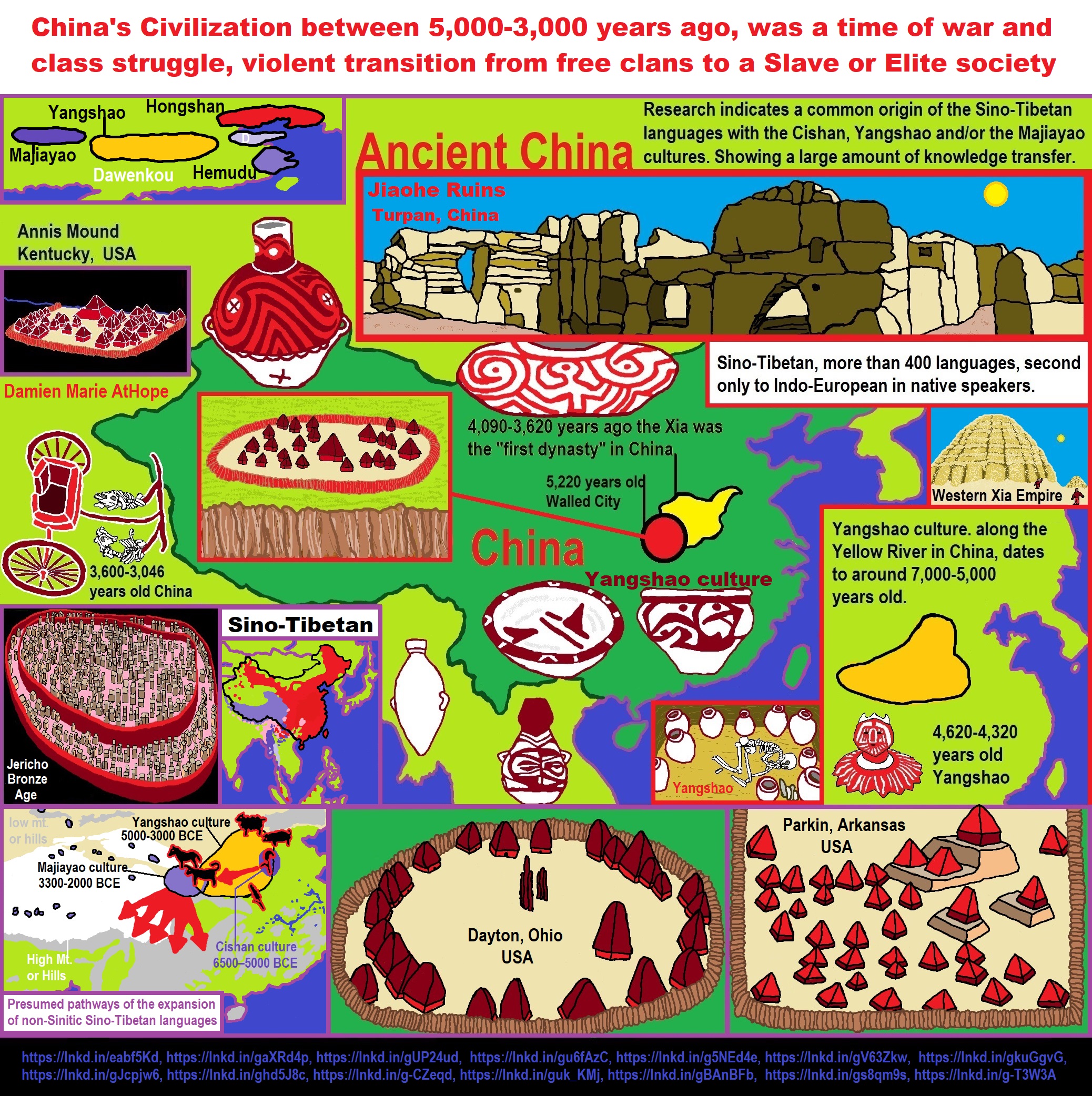
“Sino-Tibetan, also cited as Trans-Himalayan in a few sources, is a family of more than 400 languages, second only to Indo-European in number of native speakers. The vast majority of these are the 1.3 billion native speakers of Chinese languages. Other Sino-Tibetan languages with large numbers of speakers include Burmese (33 million) and the Tibetic languages (6 million). Other languages of the family are spoken in the Himalayas, the Southeast Asian Massif, and the eastern edge of the Tibetan Plateau. Most of these have small speech communities in remote mountain areas, and as such are poorly documented.” ref
“Several low-level subgroups have been securely reconstructed, but reconstruction of a proto-language for the family as a whole is still at an early stage, so the higher-level structure of Sino-Tibetan remains unclear. Although the family is traditionally presented as divided into Sinitic (i.e. Chinese) and Tibeto-Burman branches, a common origin of the non-Sinitic languages has never been demonstrated. Although Chinese linguists generally include Kra–Dai and Hmong–Mien languages within Sino-Tibetan, most other linguists have excluded them since the 1940s. Several links to other language families have been proposed, but none have broad acceptance.” ref
“The most commonly cited hypothesis associates the family with the Neolithic Yangshao culture (7000–5000 years BP) of the Yellow River basin, with an expansion driven by millet agriculture. This scenario is associated with a proposed primary split between Sinitic in the east and the Tibeto-Burman languages, often assigned to the Majiayao culture (5300–4000 years BP) in the upper reaches of the Yellow River on the northeast edge of the Tibetan plateau. For example, James Matisoff proposes a split around 6000 years BP, with Chinese-speakers settling along the Yellow River and other groups migrating south down the Yangtze, Mekong, Salween and Brahmaputra rivers.” ref
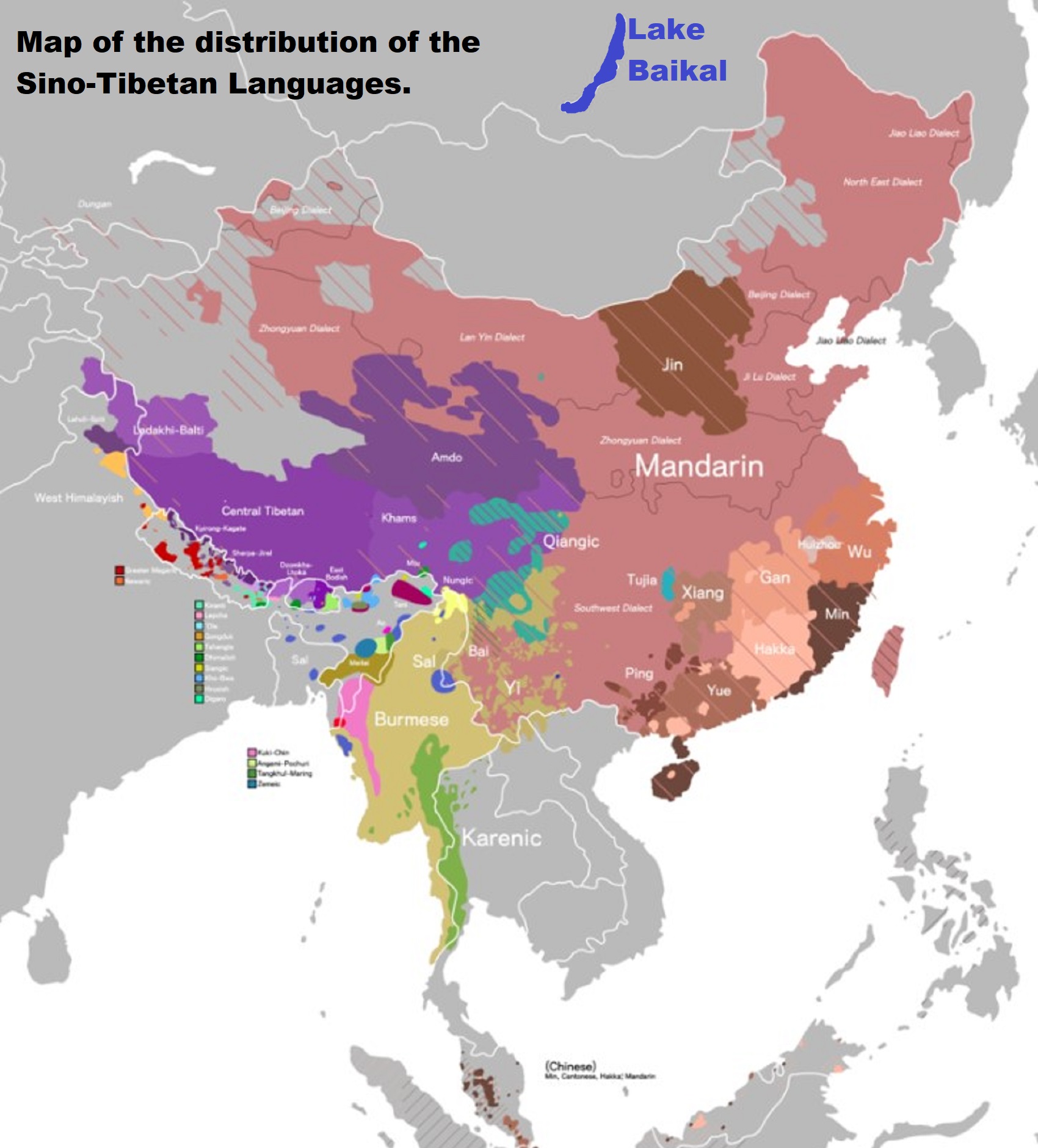
“Recent research indicates a common origin of the Sino-Tibetan languages with the Cishan, Yangshao and/or the Majiayao cultures. The main food of the Yangshao people was millet, with some sites using foxtail millet and others proso millet, though some evidence of rice has been found. The exact nature of Yangshao agriculture, small-scale slash-and-burn cultivation versus intensive agriculture in permanent fields, is currently a matter of debate. Once the soil was exhausted, residents picked up their belongings, moved to new lands, and constructed new villages.” ref
“Bayesian modeling applied to a dataset of new and published radiocarbon dates derived from domesticated millet grains suggests that after their initial cultivation in the crescent around the Bohai Sea ca. 5800 BCE, the crops spread discontinuously across eastern Asia. Our findings on the spread of millet that intensified during the fourth millennium BCE coincide with published dates of the expansion of the Sino-Tibetan languages from the Yellow River basin.” ref
“Seeds found at two herder campsites in Kazakhstan show that people there used bread wheat from southwest Asia and broomcorn millet from eastern Asia between 4,800 and 4,300 years ago. These grains, found in small amounts, may have been eaten or employed in rituals of some kind. Herders moving through those valleys brought southwestern Asian crops into China and eastern Asian crops back the other way, says archaeologist Robert Spengler of the Max Planck Institute for the Science of Human History. While working their way across Asia through mountain valleys, pastoralists incorporated crops into their own way of life.” ref
“We also find that the majority of the East Eurasian ancestry in the Shirenzigou individuals is-related to northeastern Asian populations, while the West Eurasian ancestry is best presented by ∼20% to 80% Yamnaya-like ancestry. Our data thus suggest a Western Eurasian steppe origin for at least part of the ancient Xinjiang population. Our findings furthermore support a Yamnaya-related origin for the now extinct Tocharian languages in the Tarim Basin, in southern Xinjiang.” ref
“The slightly rolling to flat steppe landscape north of the Caucasus mountain chain includes vast areas without natural boundaries. The cattle bones yielded lower and more variable values (5.8 to 9.3 ‰; range 3.5 ‰) than those of the sheep/goat (7.8 to 10.2 ‰; range 2.4 ‰; with an outlier with δ15N = 13.0 ‰ excluded). The isotope distinction between small and large ruminants indicates that either the different domestic animal species were herded on different pastures or that they fed selectively on different plants available in the same habitats. Examples of elevated δ13C values may indicate that pastoralists foddered animals with cultivated millet as it has been recently discussed for Bronze Age contexts in Kazakhstan.” ref
“Strikingly, not a single word for millet can be reconstructed for Proto-Indo-European. Intriguingly, it is evident that many agricultural meanings that have habitually been reconstructed for Proto-Indo-European are effectively post-Anatolian. In conclusion, while many cereal terms have been proposed in the literature, their number must be substantially reduced, especially for the most basal stage of Indo-European, Indo-Anatolian. The resulting picture is one that is far less problematic to the Steppe Hypothesis than has been previously suggested. The overall scarcity of shared cereal (cultivation and processing) vocabulary at this stage strongly contradicts a deeply agricultural language community and thus disqualifies the Anatolia Hypothesis as it was initially formulated. The results in fact also contradict the revised form of the hypothesis, which entailed a scenario in which core Indo-European was introduced to the Pontic-Caspian steppe by an outmigration from an agrarian homeland in Anatolia. This scenario implies that Indo-Anatolian was originally rich in agricultural vocabulary, but that this part of the lexicon was largely lost in core Indo-European during an economic transformation from sedentary farmers to mobile pastoralists. The linguistic evidence is suggestive of the opposite scenario in which core Indo-European repurposed various originally non-agricultural Indo-Anatolian lexical roots to reference an increasingly agricultural economy.” ref
“Nevertheless, our results also raise questions for the Steppe Hypothesis. For the oldest stratum, Indo-Anatolian, the lexical evidence for cereal use is relatively modest, but not zero: we must at least admit the cereal term *(H)ieu(H)– and perhaps *ǵh(e)rsd-. For the core Indo-European level, an even more extensive set of terms can be identified. In a model in which the split between the European and Asian branches is assumed to be primary, we must admit at least *h2erh3– ‘plow’, *h2erh3–ur/n– ‘(arable) field’, *peis– ‘grind (grain)’, *se–sh1–io– ‘a cereal’, *h2ed–o(s)– ‘a (parched?) cereal’, *dhoH–neh2– ‘(cereal) seed’ and *pelH–u– ‘chaff’. By applying the alternative, Indo-Slavic model, it is possible to relegate the latter two terms to the most recent subnode of the family, so as to deprive them of their core Indo-European status. However, even in this model, the remaining terms still stand. It is furthermore worth noting that at the second-most basal stage, prior to the Tocharian split, the root *h2erh3– had already undergone the semantic shift to ‘plow’, implying that this practice was known to the deepest layers of core Indo-European. In other words, unless cereal cultivation was a much more important aspect of the Yamnaya culture than recent archaeological interpretations suggest, this culture does not offer a perfect archaeolinguistic match for the original language community of the core Indo-European branches, including Tocharian. As a consequence, we may conclude that it is not possible to on the one hand support the Steppe Hypothesis (or the revised Anatolia Hypothesis for that matter) while at the same time assuming that steppe migrants had an exclusively pastoralist way of life, as has been proposed for the early Yamnaya culture.” ref
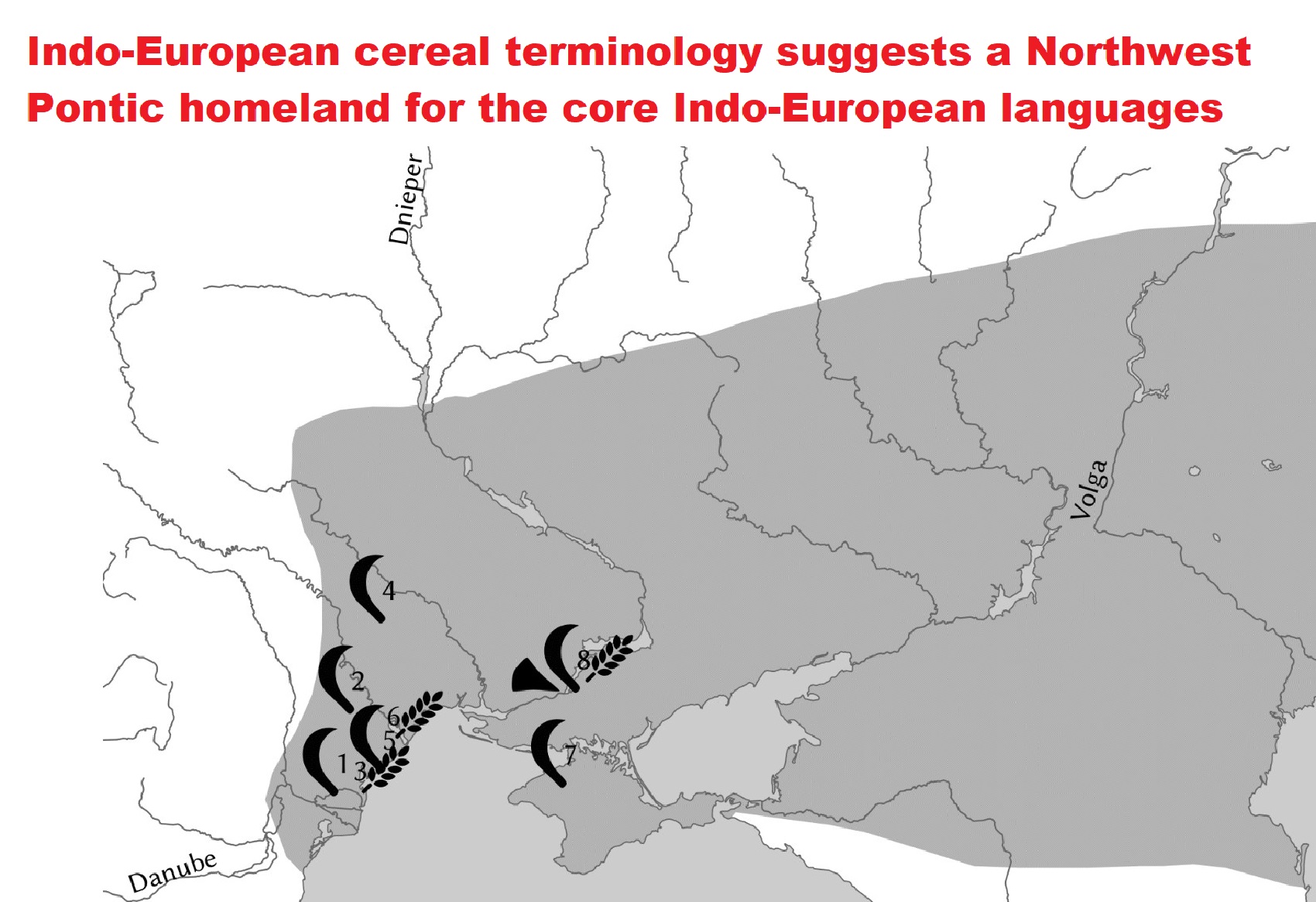
“Cereal remains, cutting tools and a plowshare alleged to be found in Yamnaya contexts. Indo-European cereal terminology suggests a Northwest Pontic homeland for the core Indo-European languages. Unlike the archaeological Yamnaya homeland, the linguistic homeland of the core Indo-European language community cannot be located in the eastern steppe, but must be situated around, and extending to the west of, the Dnieper River. After the formation of the core Indo-European dialect continuum in this area after ca. 3300 BCE, it gradually developed into a network of increasingly evolved and disconnected varieties of Indo-European speech, thus foreshadowing the final fragmentation of the language and the movements of the various branches into Europe and Asia. Intriguingly, Indo-Iranian and especially Tocharian were impacted less heavily by the later, more radical shift towards agriculture that manifests itself in the European branches, indicating that they were culturally but also geographically more peripheral. However, since these branches share the Indo-European words for ‘plow’ and ‘pound grain’, they must, too, somehow have been involved in or at least connected to the establishment of the core Indo-European continuum in the West Pontic region. Scenarios in which the European branches moved west and the Asian branch stayed east of the Dnieper, therefore, appear overly simplistic.” ref
“While Gimbutas was largely correct in assuming that “the increase of agriculture is synchronous with the incursion of the Kurgan […] people into Europe”, especially in the European branches, we must assume that the onset of this process had already started before the final dissolution of the core Indo-European dialect continuum, on or close to the steppe. Quite possibly, segments of the core Indo-European speech community moved west before they moved east, including those groups that ultimately introduced Tocharian and Indo-Iranian to Asia. For the steppe component in Indo-Iranians, the Eastern European Corded Ware has been suggested as the mediator of Yamnaya ancestry. For Tocharian, it may be necessary to assume an indirect dispersal as well in view of the late spread of agriculture to the eastern steppe. The wooden plows of the Catacomb culture (2500–1950 BCE) offer an archaeological terminus post quem. A successive potential proxy is the Babyno culture (2200–1700 BCE), whose similarities to the Epi-Corded Ware of the Carpathian region suggest an East-Central European origin.” ref

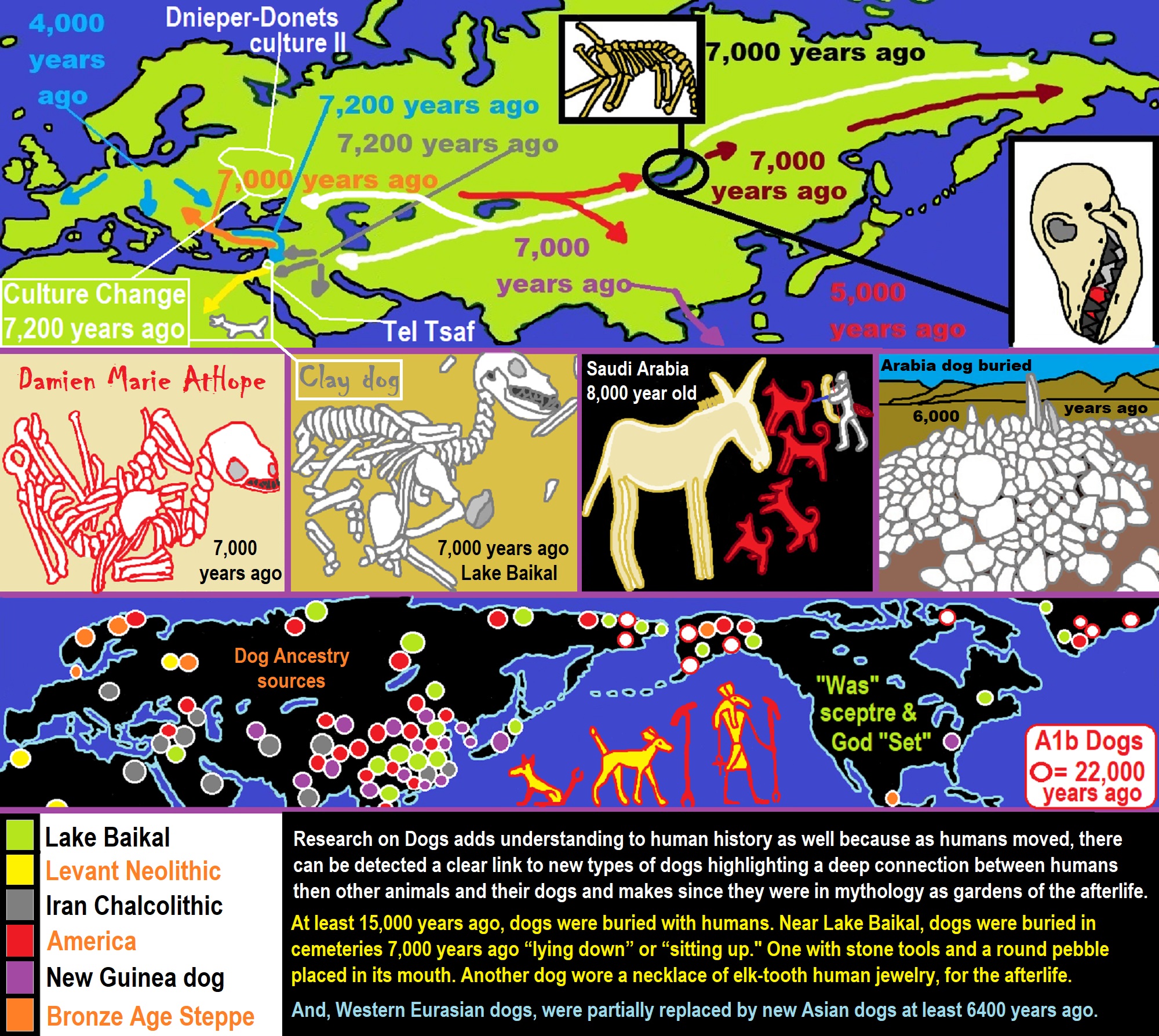
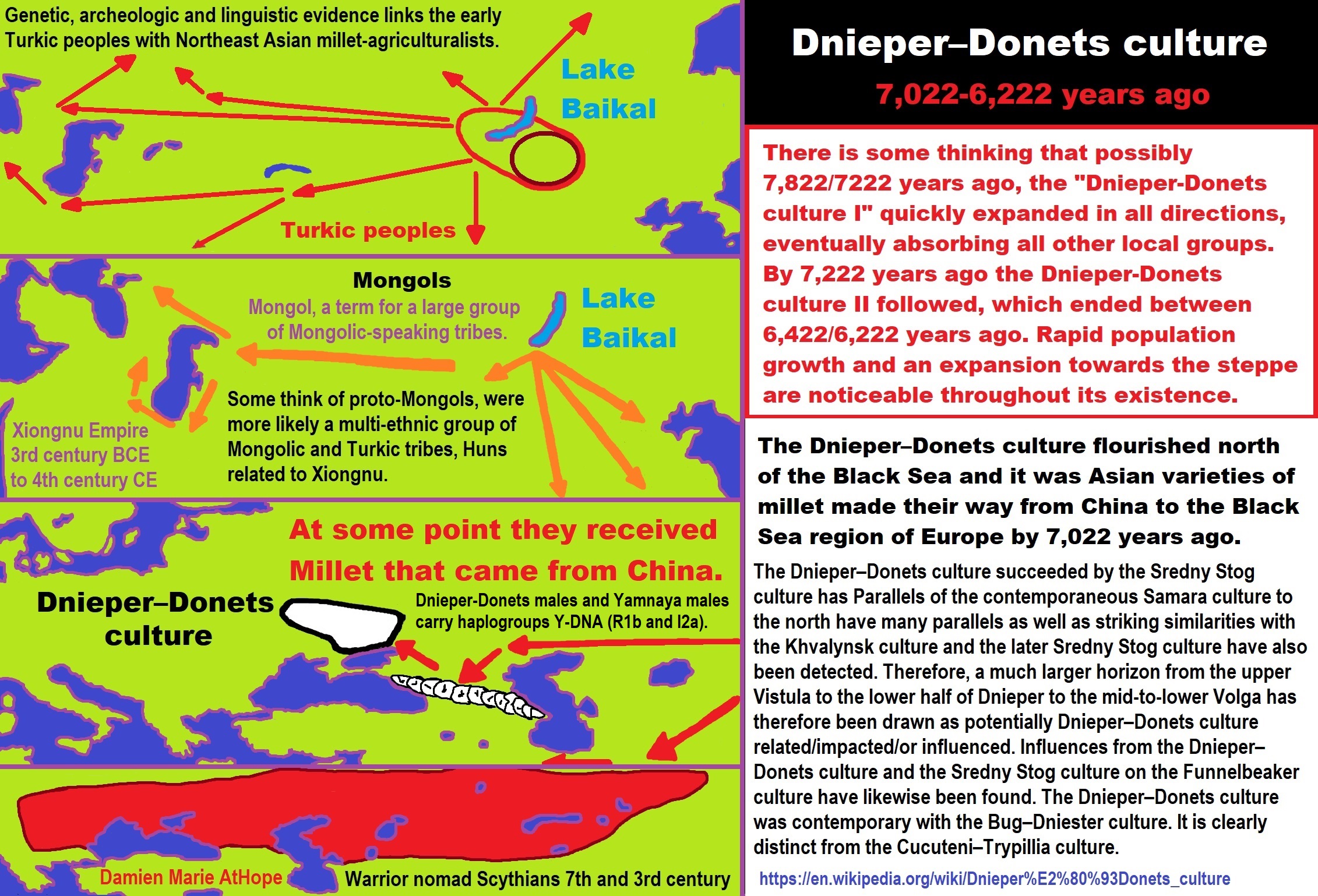

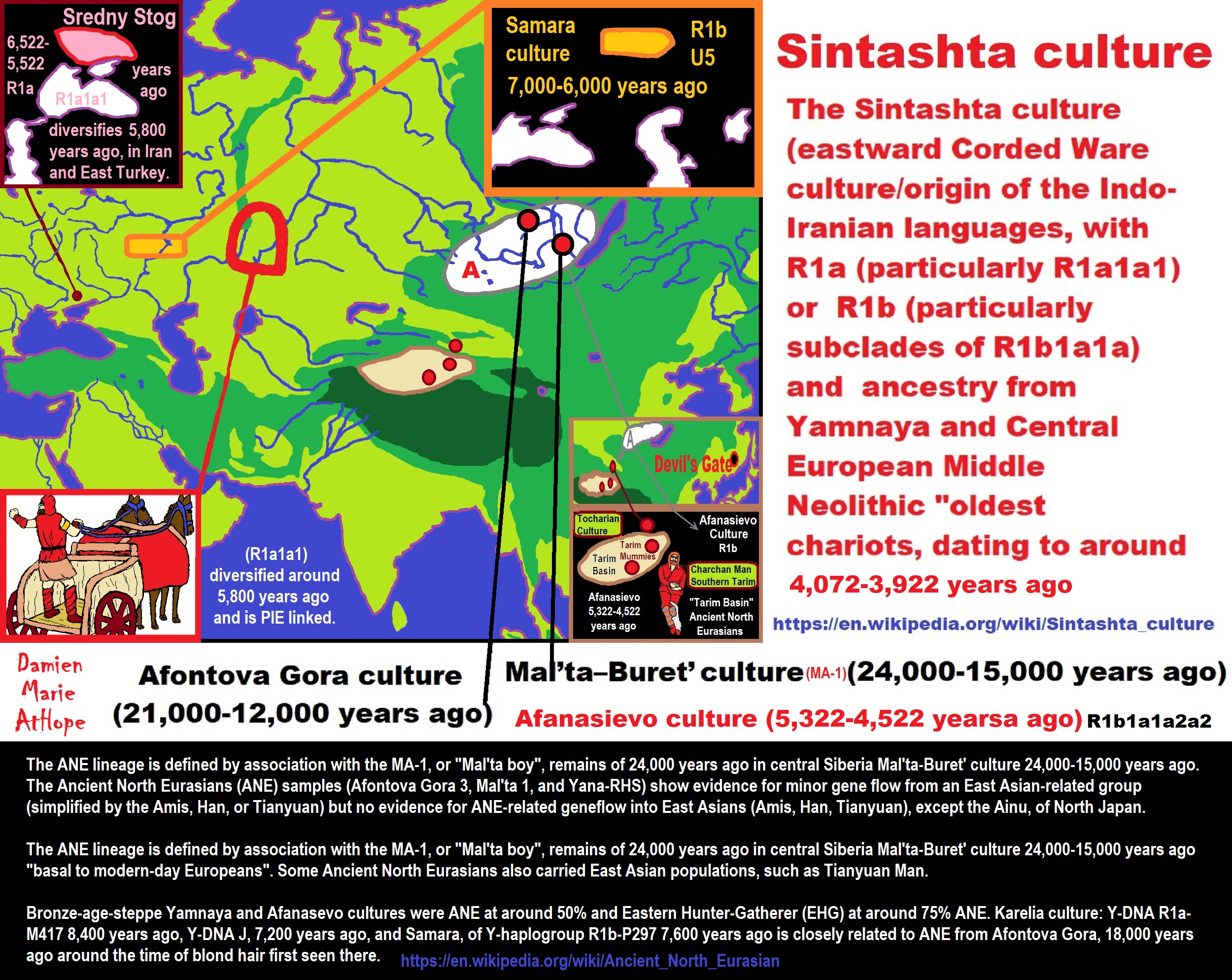


The “wheel” related word list
“Most linguists argue that the PIEs (Proto-Indo-Europeans) did have words for wheel. The candidates put forward for wheel or wagon-related words are nine reconstructed PIE word forms. These are:
- *hurki , argued to mean “wheel”
- *roteh2, argued to mean “wheel”
- *kwékwlo-, argued to mean “wheel”
- *kwelh1-, argued to mean “turn” perhaps in the sense of a turning wheel.
- *h2eks-, argued to mean “axle”
- *h2ih3s-, argued to mean “thill” or “wagon shaft”
- *wéĝh-, argued to mean “convey in a vehicle”
- *h3nebh-, argued to mean “nave” or “wheel hub”
- *iugó-, argued to mean “yoke” ref
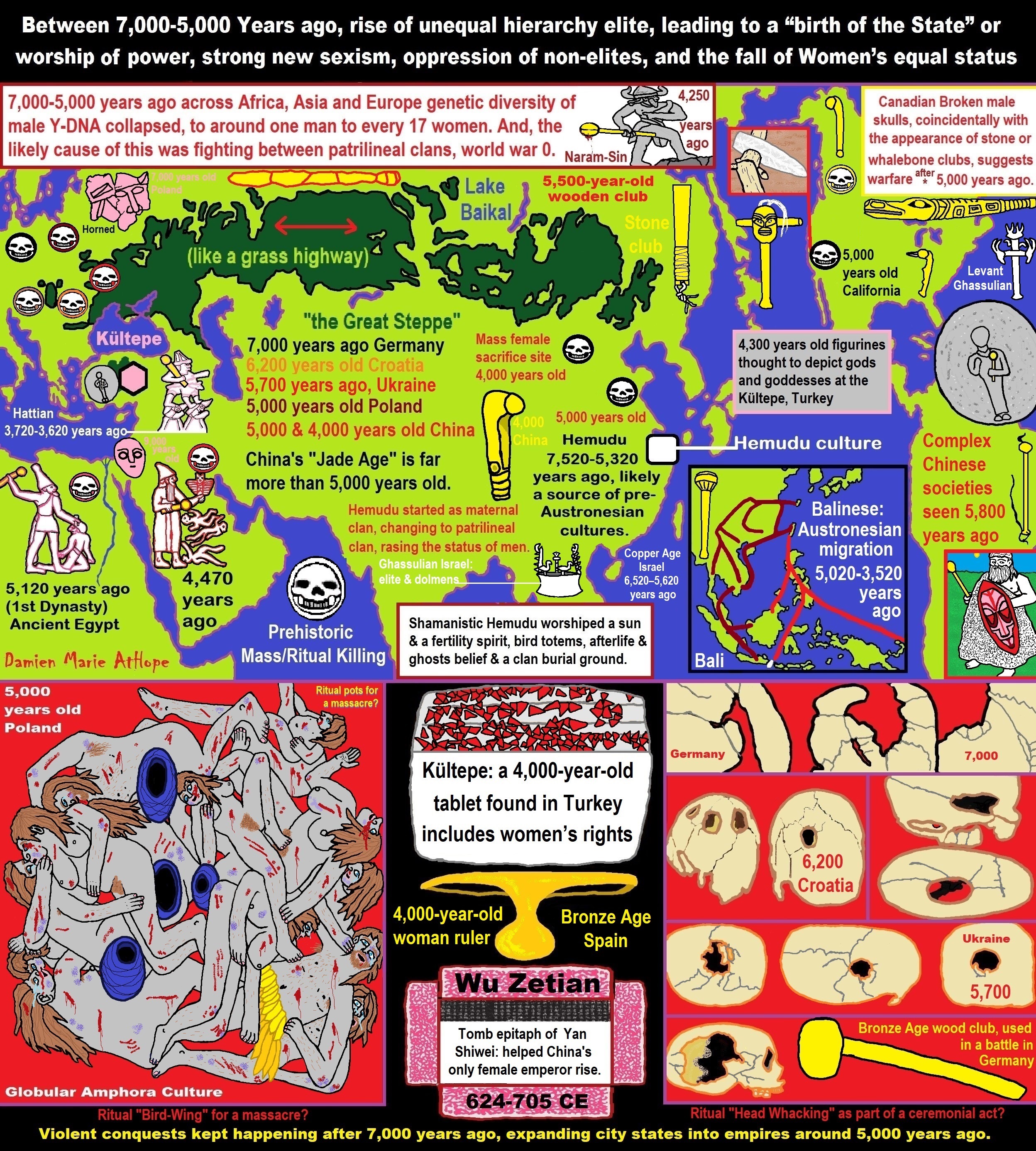
ref, ref, ref, ref, ref, ref, ref, ref, ref, ref, ref, ref, ref, ref, ref, ref, ref, ref, ref, ref, ref, ref, ref, ref, ref, ref, ref, ref, ref, ref, ref, ref, ref, ref, ref, ref, ref, ref, ref, ref, ref, ref, ref, ref, ref, ref, ref, ref, ref, ref, ref, ref, ref, ref, ref, ref, ref, ref, ref, ref, ref, ref, ref, ref, ref, ref, ref, ref, ref, ref, ref, ref, ref, ref, ref, ref, ref, ref, ref, ref, ref, ref, ref, ref, ref, ref, ref, ref, ref, ref
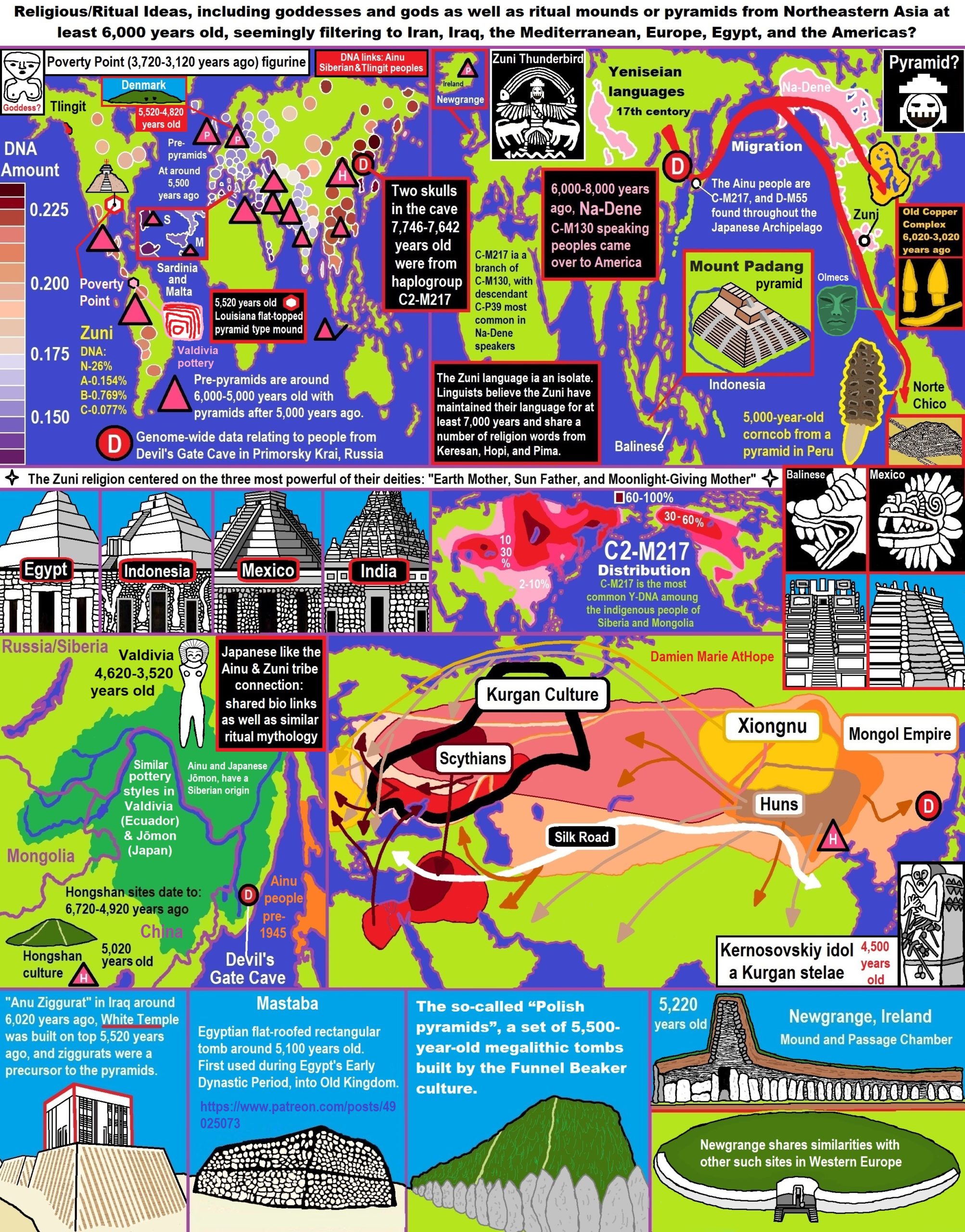
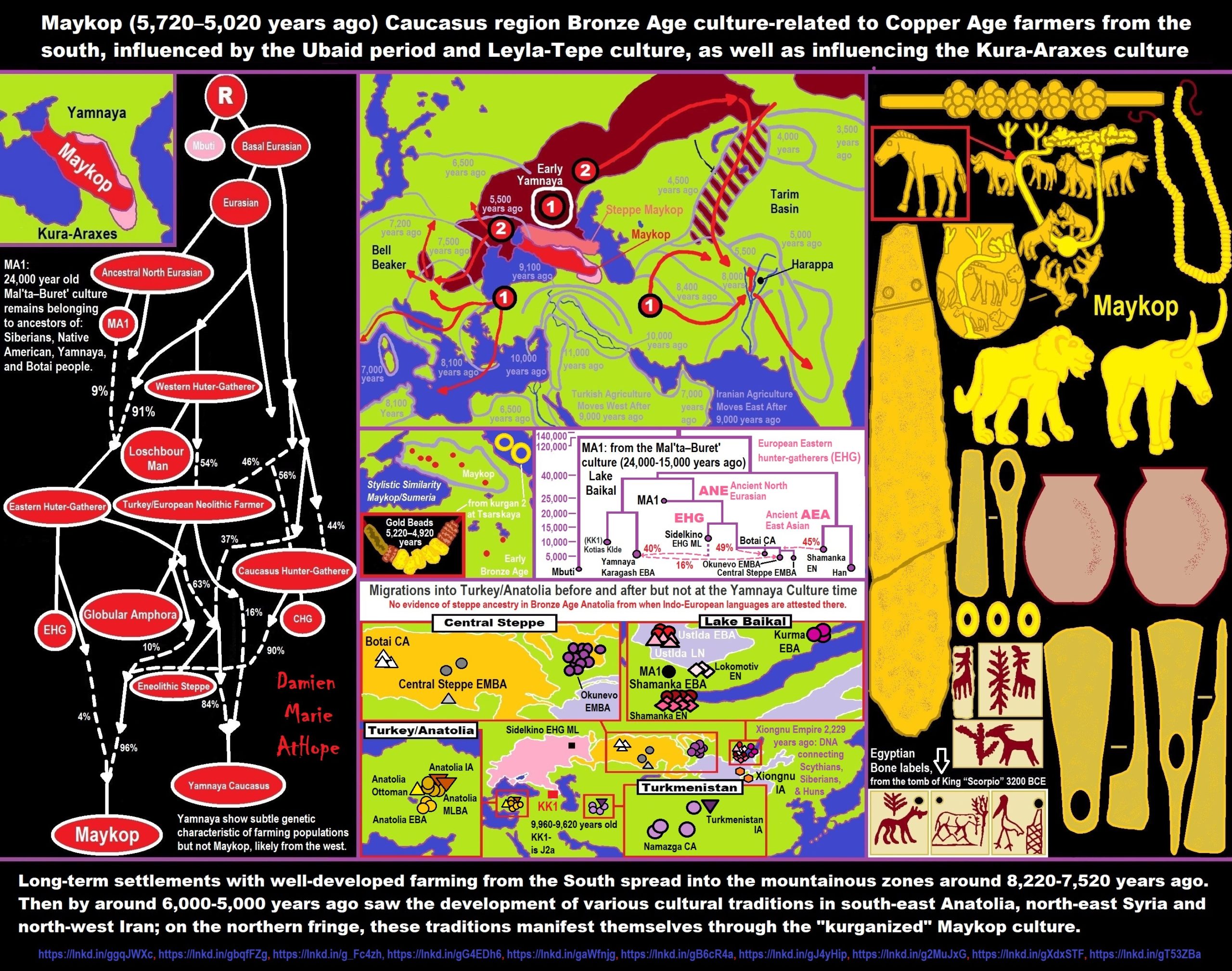
Formation of the Eurasian ‘steppe belt’ of stockbreeding cultures
“The Eurasian “steppe belt” is a region peculiar for its nomadic and semi-nomadic stockbreeding cultures. It extends 8 thousand kilometers west to east (from the Black Sea to the Yellow Sea), spanning an area of 8 million sq. km. The beginnings of the “steppe belt” cultures coincide with the Copper Age (5th millennium BCE) and the activation of the Carpatho-Balkan Metallurgical Province. In the Early and Middle Bronze Age (4th–3rd millennia BCE), advanced pastoral cultures emerged in the Circumpontic Metallurgical Province. The appearance of the Maykop culture in the Northern Caucasus represents a signifi cant marking point at that time. Changes were initiated including unambiguous evidence of horse riding (prehistoric cavalry) and the introduction of metal weapons such as shafthole axes and spearheads. In the late 3rd millennium BCE, military-oriented stockbreeding societies emerged in Eastern Central Asia (Sayan-Altai and Mongolia). The period around 2000 BCE was marked by two migration waves moving in opposite directions. Steppe semi-nomads associated with the Abashevo-Sintashta and later with the Srubnaya-Andronovo communities moved from Eastern Europe eastwards to the Altai and even to Xinjiang. Warring Seima-Turbino groups migrated from Central Asia towards the Urals and further into Eastern Europe. By the mid-2nd millennium BCE, the formation of the “steppe belt” cultures was completed, and these cultures continued to exist until relatively recently. The stockbreeding societies of the steppes often played a key role in Eurasian history.” ref

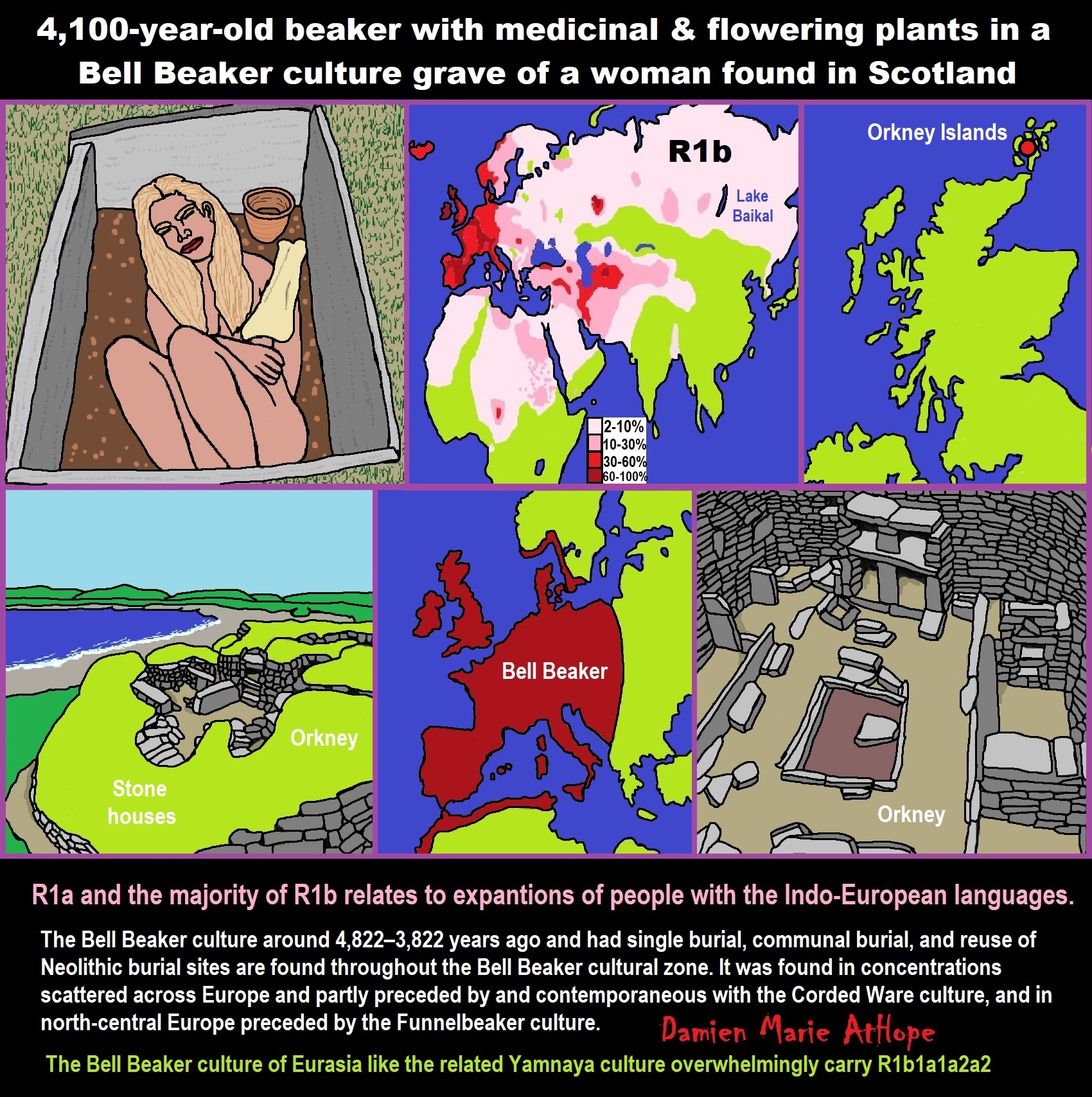
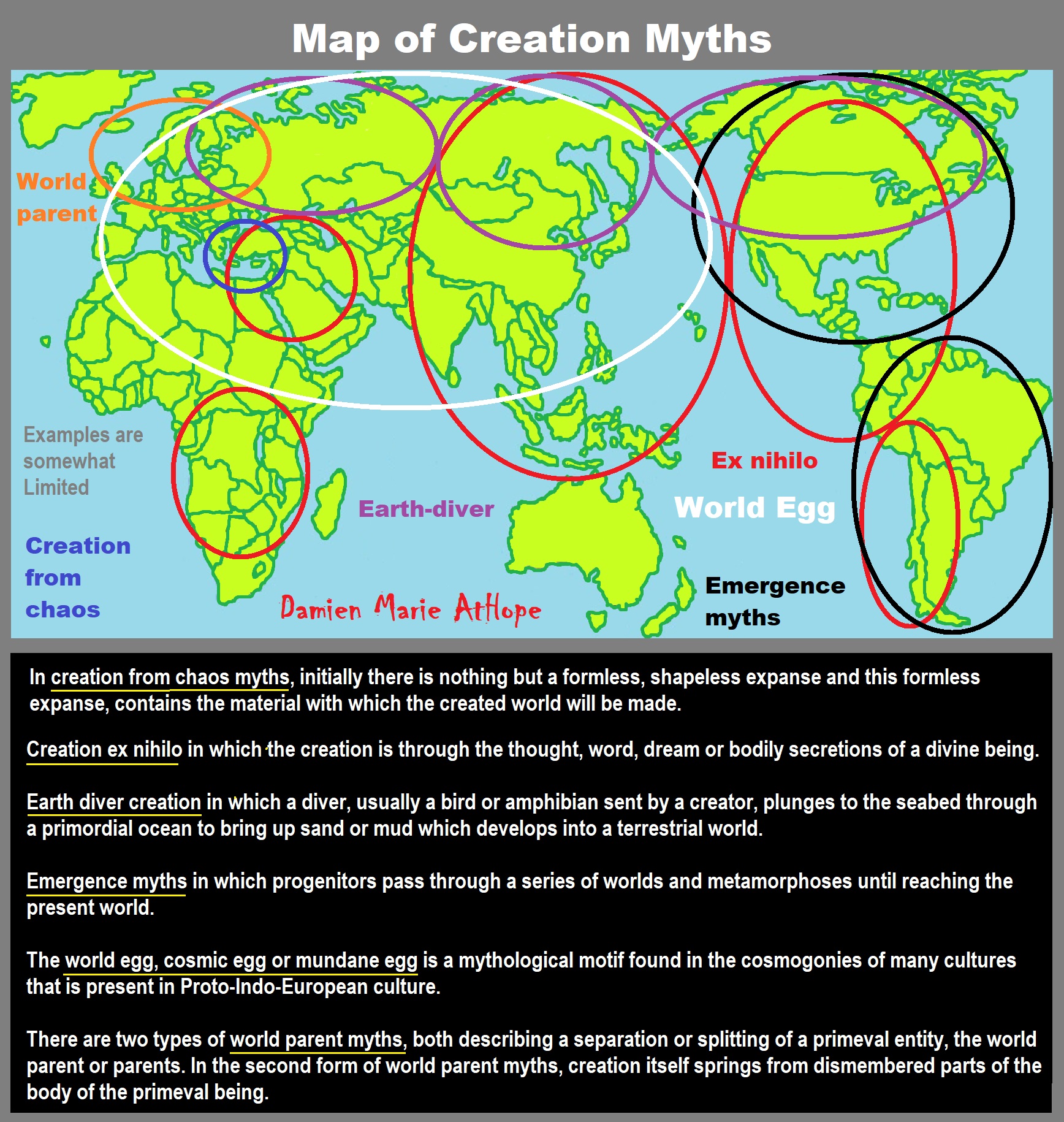
Creation myths: From chaos, Ex nihilo, Earth-diver, Emergence, World egg, and World parent
“A creation myth (or cosmogonic myth) is a symbolic narrative of how the world began and how people first came to inhabit it. While in popular usage the term myth often refers to false or fanciful stories, members of cultures often ascribe varying degrees of truth to their creation myths. In the society in which it is told, a creation myth is usually regarded as conveying profound truths – metaphorically, symbolically, historically, or literally. They are commonly, although not always, considered cosmogonical myths – that is, they describe the ordering of the cosmos from a state of chaos or amorphousness.” ref
“Creation myths often share a number of features. They often are considered sacred accounts and can be found in nearly all known religious traditions. They are all stories with a plot and characters who are either deities, human-like figures, or animals, who often speak and transform easily. They are often set in a dim and nonspecific past that historian of religion Mircea Eliade termed in illo tempore (‘at that time’). Creation myths address questions deeply meaningful to the society that shares them, revealing their central worldview and the framework for the self-identity of the culture and individual in a universal context. Creation myths develop in oral traditions and therefore typically have multiple versions; found throughout human culture, they are the most common form of myth.” ref
Creation myth definitions from modern references:
- “A “symbolic narrative of the beginning of the world as understood in a particular tradition and community. Creation myths are of central importance for the valuation of the world, for the orientation of humans in the universe, and for the basic patterns of life and culture.”
- “Creation myths tell us how things began. All cultures have creation myths; they are our primary myths, the first stage in what might be called the psychic life of the species. As cultures, we identify ourselves through the collective dreams we call creation myths, or cosmogonies. … Creation myths explain in metaphorical terms our sense of who we are in the context of the world, and in so doing they reveal our real priorities, as well as our real prejudices. Our images of creation say a great deal about who we are.”
- A “philosophical and theological elaboration of the primal myth of creation within a religious community. The term myth here refers to the imaginative expression in narrative form of what is experienced or apprehended as basic reality … The term creation refers to the beginning of things, whether by the will and act of a transcendent being, by emanation from some ultimate source, or in any other way.” ref
Religion professor Mircea Eliade defined the word myth in terms of creation:
“Myth narrates a sacred history; it relates an event that took place in primordial Time, the fabled time of the “beginnings.” In other words, myth tells how, through the deeds of Supernatural Beings, a reality came into existence, be it the whole of reality, the Cosmos, or only a fragment of reality – an island, a species of plant, a particular kind of human behavior, an institution.” ref
“All creation myths are in one sense etiological because they attempt to explain how the world formed and where humanity came from. Myths attempt to explain the unknown and sometimes teach a lesson.” ref
“Some Ethnologists and anthropologists who study origin myths say that in the modern context theologians try to discern humanity’s meaning from revealed truths and scientists investigate cosmology with the tools of empiricism and rationality, but creation myths define human reality in very different terms. In the past, historians of religion and other students of myth thought of such stories as forms of primitive or early-stage science or religion and analyzed them in a literal or logical sense. Today, however, they are seen as symbolic narratives which must be understood in terms of their own cultural context. Charles Long writes: “The beings referred to in the myth – gods, animals, plants – are forms of power grasped existentially. The myths should not be understood as attempts to work out a rational explanation of deity.” ref
“While creation myths are not literal explications, they do serve to define an orientation of humanity in the world in terms of a birth story. They provide the basis of a worldview that reaffirms and guides how people relate to the natural world, to any assumed spiritual world, and to each other. A creation myth acts as a cornerstone for distinguishing primary reality from relative reality, the origin and nature of being from non-being. In this sense, cosmogonic myths serve as a philosophy of life – but one expressed and conveyed through symbol rather than through systematic reason. And in this sense, they go beyond etiological myths (which explain specific features in religious rites, natural phenomena, or cultural life). Creation myths also help to orient human beings in the world, giving them a sense of their place in the world and the regard that they must have for humans and nature.” ref
Historian David Christian has summarised issues common to multiple creation myths:
“Each beginning seems to presuppose an earlier beginning. … Instead of meeting a single starting point, we encounter an infinity of them, each of which poses the same problem. … There are no entirely satisfactory solutions to this dilemma. What we have to find is not a solution but some way of dealing with the mystery …. And we have to do so using words. The words we reach for, from God to gravity, are inadequate to the task. So we have to use language poetically or symbolically; and such language, whether used by a scientist, a poet, or a shaman, can easily be misunderstood.” ref
“Mythologists have applied various schemes to classify creation myths found throughout human cultures. Eliade and his colleague Charles Long developed a classification based on some common motifs that reappear in stories the world over. The classification identifies five basic types: Brahmā, the Hindu deva of creation, emerges from a lotus risen from the navel of Viṣņu, who lies with Lakshmi on the serpent Ananta Shesha.” ref
- “Creation ex nihilo in which the creation is through the thought, word, dream, or bodily secretions of a divine being.
- Earth diver creation in which a diver, usually a bird or amphibian sent by a creator, plunges to the seabed through a primordial ocean to bring up sand or mud which develops into a terrestrial world.
- Emergence myths in which progenitors pass through a series of worlds and metamorphoses until reaching the present world.
- Creation by the dismemberment of a primordial being.
- Creation by the splitting or ordering of a primordial unity such as the cracking of a cosmic egg or a bringing order from chaos.” ref
“Marta Weigle further developed and refined this typology to highlight nine themes, adding elements such as deus faber, a creation crafted by a deity, creation from the work of two creators working together or against each other, creation from sacrifice, and creation from division/conjugation, accretion/conjunction, or secretion.” ref
An alternative system based on six recurring narrative themes was designed by Raymond Van Over:
- “Primeval abyss, an infinite expanse of waters or space.
- Originator deity which is awakened or an eternal entity within the abyss.
- Originator deity poised above the abyss.
- Cosmic egg or embryo.
- Originator deity creating life through sound or word.
- Life generating from the corpse or dismembered parts of an originator deity.” ref
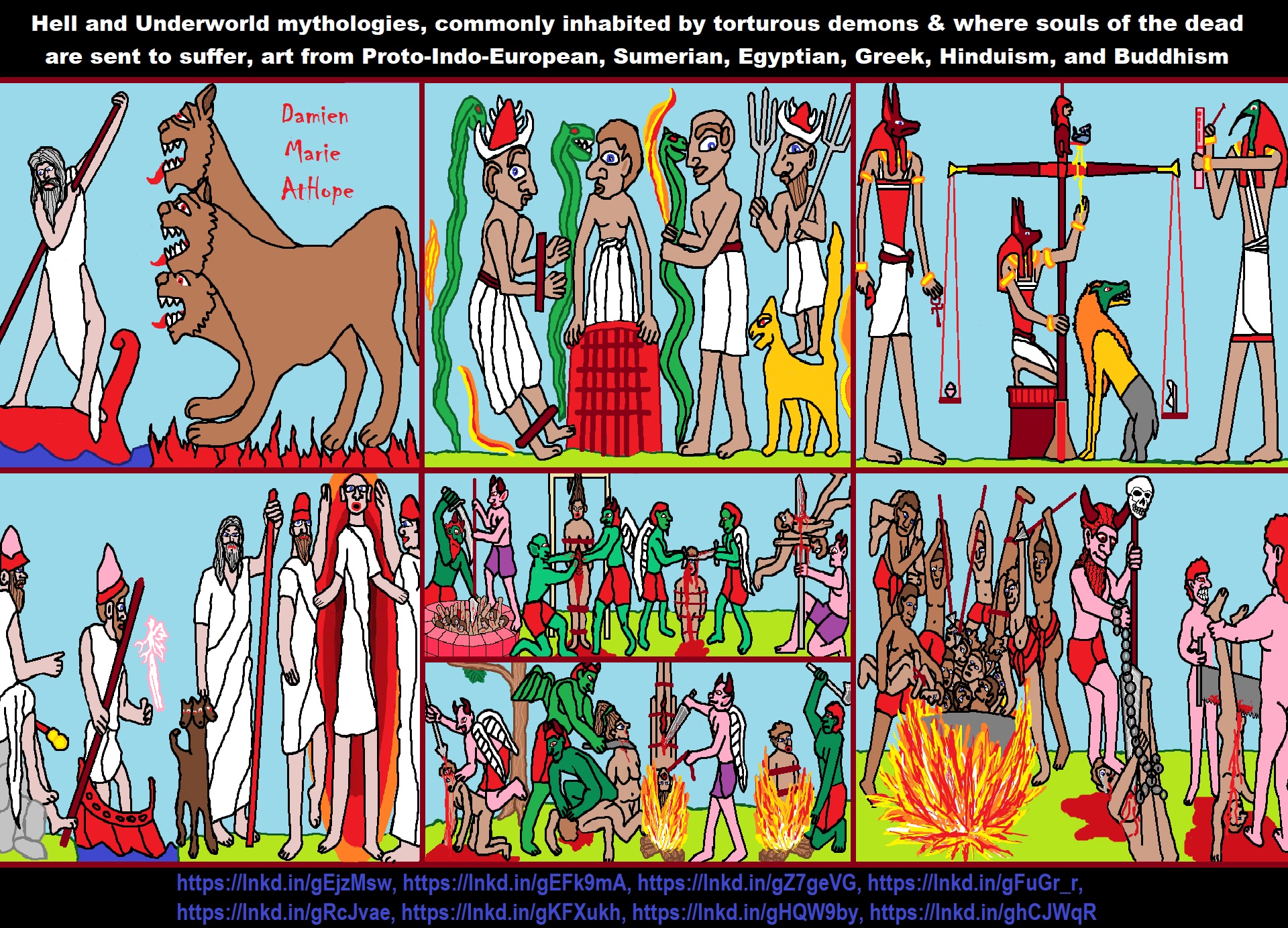
Paganism:
*primal stage of organized religion is 13,000 years ago.
*proto stage of organized religion is 10,000 years ago.
*progressed stage of organized religion “Myths Origin” is 7,000 years ago.
*developed stage of organized religion is 5,000 years ago.
- Paganism 12,000-7,000 years old: related to “Anarchism and Socialism” (Pre-Capitalism)
- Paganism 7,000-5,000 years old: related to “Anarchism and Socialism” (Capitalism) (World War 0) Elite and their slaves!
- Paganism 5,000 years old: progressed organized religion and the birth of the state: related to “Anarchism and Socialism” (Kings and the Rise of the State)
- Paganism 4,000 years old: Moralistic gods after the rise of Statism and often support Statism/Kings: related to “Anarchism and Socialism” (First Moralistic gods, then the Origin time of Monotheism)
Then from 5,000-4,000 years ago moralistic deities are invented likely by or for the state. Then around 4,000 years ago monotheism emerges.
Paganism was more than shamanism at first it was about the clan leader from 13,000 to 7,000 years ago then from 7,000 until 5, 500 was a time of proto kings and by 5,000 kings were a growing norm.
The term “paganism”, used by me and some others who are academics, roughly refers to pre-Christian, socioreligious-cultural-based traditions which were polytheistic (worshiped multiple entities), and to me, I speculate also involve elements of Animism, Totemism, and shamanism; which together with polytheism are what I call paganism.
* “paganist” As I conceive it in a simplified way is to believe in spirit-filled life and/or afterlife can be attached to or be expressed in things or objects and these objects can be used by special persons or in special rituals can connect to spirit-filled life and/or afterlife who are guided/supported by a goddess/god or goddesses/gods (you are a hidden paganist/Paganism: an approximately 12,000-year-old belief system) And Gobekli Tepe: “first human-made temple” as well as Catal Huyuk “first religious designed city” are both evidence of some kind of early paganism, to me.
Again just to clarify when I refer to seeming paganism thinking or behaviors (emphasize reverence for nature, polytheistic and animistic, totemistic, and shamanist religious practices). and Gobekli Tepe, by paganism I mean a grouped set of behaviors that I believe resemble the concept of paganism-type beliefs. Neither am I claiming to fully know or understand all the possible mythology beliefs that may be represented in the carving at Gobekli Tepe, some seem more straightforward others beyond current understanding, and possibly forever beyond full comprehension.
“Paganism was originally a pejorative and derogatory term for polytheism, implying its inferiority. Paganism (from classical Latin refers to “rural, rustic,” later “civilian”) is a term first used in the fourth century by early Christians for people who practiced polytheism.” ref
“However, Paganism as a term of meaning represents a wide variety of traditions that emphasize reverence for nature and a revival of ancient polytheistic and animistic religious practices. Paganism is not a traditional religion per se because it does not have any official doctrine, but it does have some common characteristics joining the great variety of traditions. One of the common beliefs is the divine presence in nature and the reverence of the natural order in life. Spiritual growth is related to the cycles of the Earth and great emphasis is placed on ecological concerns. Monotheism is almost universally rejected within Paganism and most Pagan traditions are particularly interested in the revival of ancient polytheist religious traditions.” ref
“Religion may be defined as “a set of beliefs concerning the cause, nature, and purpose of the universe, especially when considered as the creation of a superhuman agency or agencies, usually involving devotional and ritual observances, and often containing a moral code governing the conduct of human affairs,” whereas ritual is “an established or prescribed procedure for religious or other rites.” ref
*Primal superstition starts around 1 million years ago with. Then the development of religion increased around 600,000 years ago with proto superstition and then even to a greater extent around 300,000 years ago with progressed superstition.
Around 100,000 years ago, is the primal stage of early religion, the proto stage of early religion is around 75,000 years ago, or less, the progressed stage of early religion is around 50,000 years ago and finally after 13,500 years ago, begins with the evolution of organized religion. The set of stages for the development of organized religion is subdivided into the following: the primal stage of organized religion is 13,000 years ago, the proto stage of organized religion is around 10,000 years ago, and finally the progressed stage of organized religion is around 7,000 years ago with the forming of mythology and its connected set of Dogmatic-Propaganda-Closure belief strains of sacralized superstitionism. I will now give offer my rough outlined four-stage hypotheses, which use the reference of a house, in order to help to explain the way how that house (modern religions) fully developed a packet of wishful thinking nonsense, in order to assist in grasping the relative big picture of both the original elements that are involved in what often became a variety of nonrealism/unrealistic faiths or beliefs around the world. Moreover, this relative compiled a set of nonrealism faith or belief components (animism, totemism, and paganism) that are often still found in almost all religions today. My hypothesis with an explanation of this house (modern religions development).
- First, there is the foundation: Superstitionism and Symbolism/Ritualism.
- Second, is the frame and walls: Supernaturalism and Sacralizism/Spiritualism.
- Third, is the roof and finishing elements of the structure: Dogmatism and Myths.
- Fourth, is the window dressing and stylings to the house: decorated with the webs religious Dogmatic-Propaganda.
In the stage of organized religion, one important aspect that is often overlooked because of male-only thinking or by some over-emphasized because of extreme feminism is gender. There are some obvious gender associations in artifacts and possible gender-involved religious beliefs but thoughtful feminist archaeologists do not pounce on every representation of a woman and pronounce that it is a goddess. Around 5,000 years ago there are the full elements seem to be grouping together with its connected set of Dogmatic-Propaganda-Closure belief strains of sacralized superstitionism that took different forms of behavior in different areas of the world.
Hidden Religious Expressions
“animist, totemist, shamanist & paganist”
*Believe in spirit-filled life and/or afterlife (you are a hidden animist)
*Believe in spirit-filled life and/or afterlife can be attached to or be expressed in things or objects (you are a hidden totemist)
*Believe in spirit-filled life and/or afterlife can be attached to or be expressed in things or objects and these objects can be used by special persons or in special rituals can connect to spirit-filled life and/or afterlife (you are a hidden shamanist)
*Believe in spirit-filled life and/or afterlife can be attached to or be expressed in things or objects and these objects can be used by special persons or in special rituals can connect to spirit-filled life and/or afterlife who are guided/supported by a goddess/god or goddesses/gods (you are a hidden paganist)
I classify Animism (animated ‘spirit‘ or “supernatural” perspectives).
I see all religious people as at least animists, so, all religions have at least some amount, kind, or expression of animism as well.
The door of reason opens not once but many times.
Religions continuing in our modern world, full of science and facts, should be seen as little more than a set of irrational conspiracy theories of reality. Nothing more than a confused reality made up of unscientific echoes from man’s ancient past. Rational thinkers must ask themselves why continue to believe in religions’ stories. Religion myths which are nothing more than childlike stories and obsolete tales once used to explain how the world works, acting like magic was needed when it was always only nature. These childlike religious stories should not even be taken seriously, but sadly too often they are. Often without realizing it, we accumulate beliefs that we allow to negatively influence our lives. In order to bring about awareness, we need to be willing to alter skewed beliefs. Rational thinkers must examine the facts instead of blindly following beliefs or faith.


Animism: Respecting the Living World by Graham Harvey
“How have human cultures engaged with and thought about animals, plants, rocks, clouds, and other elements in their natural surroundings? Do animals and other natural objects have a spirit or soul? What is their relationship to humans? In this new study, Graham Harvey explores current and past animistic beliefs and practices of Native Americans, Maori, Aboriginal Australians, and eco-pagans. He considers the varieties of animism found in these cultures as well as their shared desire to live respectfully within larger natural communities. Drawing on his extensive casework, Harvey also considers the linguistic, performative, ecological, and activist implications of these different animisms.” ref

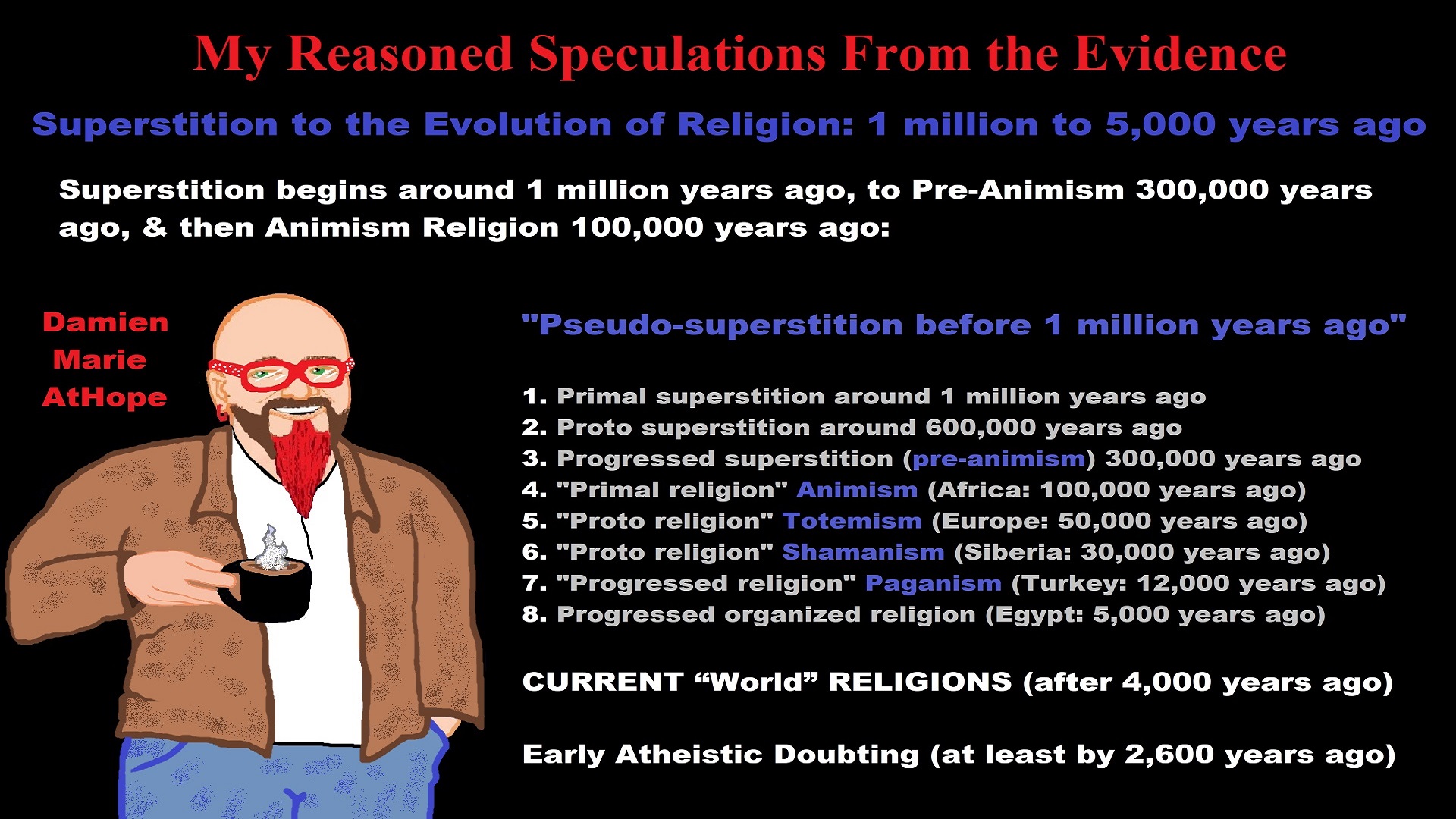
My thoughts on Religion Evolution with external links for more info:
- (Pre-Animism Africa mainly, but also Europe, and Asia at least 300,000 years ago), (Pre-Animism – Oxford Dictionaries)
- (Animism Africa around 100,000 years ago), (Animism – Britannica.com)
- (Totemism Europe around 50,000 years ago), (Totemism – Anthropology)
- (Shamanism Siberia around 30,000 years ago), (Shamanism – Britannica.com)
- (Paganism Turkey around 12,000 years ago), (Paganism – BBC Religion)
- (Progressed Organized Religion “Institutional Religion” Egypt around 5,000 years ago), (Ancient Egyptian Religion – Britannica.com)
- (CURRENT “World” RELIGIONS after 4,000 years ago) (Origin of Major Religions – Sacred Texts)
- (Early Atheistic Doubting at least by 2,600 years ago) (History of Atheism – Wikipedia)
“Religion is an Evolved Product” and Yes, Religion is Like Fear Given Wings…
Atheists talk about gods and religions for the same reason doctors talk about cancer, they are looking for a cure, or a firefighter talks about fires because they burn people and they care to stop them. We atheists too often feel a need to help the victims of mental slavery, held in the bondage that is the false beliefs of gods and the conspiracy theories of reality found in religions.
Understanding Religion Evolution:
- Pre-Animism (at least 300,000 years ago)
- Animism (Africa: 100,000 years ago)
- Totemism (Europe: 50,000 years ago)
- Shamanism (Siberia: 30,000 years ago)
- Paganism (Turkey: 12,000 years ago)
- Progressed organized religion (Egypt: 5,000 years ago), (Egypt, the First Dynasty 5,150 years ago)
- CURRENT “World” RELIGIONS (after 4,000 years ago)
- Early Atheistic Doubting (at least by 2,600 years ago)
“An Archaeological/Anthropological Understanding of Religion Evolution”
It seems ancient peoples had to survived amazing threats in a “dangerous universe (by superstition perceived as good and evil),” and human “immorality or imperfection of the soul” which was thought to affect the still living, leading to ancestor worship. This ancestor worship presumably led to the belief in supernatural beings, and then some of these were turned into the belief in gods. This feeble myth called gods were just a human conceived “made from nothing into something over and over, changing, again and again, taking on more as they evolve, all the while they are thought to be special,” but it is just supernatural animistic spirit-belief perceived as sacred.
Quick Evolution of Religion?
Pre-Animism (at least 300,000 years ago) pre-religion is a beginning that evolves into later Animism. So, Religion as we think of it, to me, all starts in a general way with Animism (Africa: 100,000 years ago) (theoretical belief in supernatural powers/spirits), then this is physically expressed in or with Totemism (Europe: 50,000 years ago) (theoretical belief in mythical relationship with powers/spirits through a totem item), which then enlists a full-time specific person to do this worship and believed interacting Shamanism (Siberia/Russia: 30,000 years ago) (theoretical belief in access and influence with spirits through ritual), and then there is the further employment of myths and gods added to all the above giving you Paganism (Turkey: 12,000 years ago) (often a lot more nature-based than most current top world religions, thus hinting to their close link to more ancient religious thinking it stems from). My hypothesis is expressed with an explanation of the building of a theatrical house (modern religions development). Progressed organized religion (Egypt: 5,000 years ago) with CURRENT “World” RELIGIONS (after 4,000 years ago).
Historically, in large city-state societies (such as Egypt or Iraq) starting around 5,000 years ago culminated to make religion something kind of new, a sociocultural-governmental-religious monarchy, where all or at least many of the people of such large city-state societies seem familiar with and committed to the existence of “religion” as the integrated life identity package of control dynamics with a fixed closed magical doctrine, but this juggernaut integrated religion identity package of Dogmatic-Propaganda certainly did not exist or if developed to an extent it was highly limited in most smaller prehistoric societies as they seem to lack most of the strong control dynamics with a fixed closed magical doctrine (magical beliefs could be at times be added or removed). Many people just want to see developed religious dynamics everywhere even if it is not. Instead, all that is found is largely fragments until the domestication of religion.
Religions, as we think of them today, are a new fad, even if they go back to around 6,000 years in the timeline of human existence, this amounts to almost nothing when seen in the long slow evolution of religion at least around 70,000 years ago with one of the oldest ritual worship. Stone Snake of South Africa: “first human worship” 70,000 years ago. This message of how religion and gods among them are clearly a man-made thing that was developed slowly as it was invented and then implemented peace by peace discrediting them all. Which seems to be a simple point some are just not grasping how devastating to any claims of truth when we can see the lie clearly in the archeological sites.
I wish people fought as hard for the actual values as they fight for the group/clan names political or otherwise they think support values. Every amount spent on war is theft to children in need of food or the homeless kept from shelter.
Here are several of my blog posts on history:
- To Find Truth You Must First Look
- (Magdalenian/Iberomaurusian) Connections to the First Paganists of the early Neolithic Near East Dating from around 17,000 to 12,000 Years Ago
- Natufians: an Ancient People at the Origins of Agriculture and Sedentary Life
- Possible Clan Leader/Special “MALE” Ancestor Totem Poles At Least 13,500 years ago?
- Jewish People with DNA at least 13,200 years old, Judaism, and the Origins of Some of its Ideas
- Baltic Reindeer Hunters: Swiderian, Lyngby, Ahrensburgian, and Krasnosillya cultures 12,020 to 11,020 years ago are evidence of powerful migratory waves during the last 13,000 years and a genetic link to Saami and the Finno-Ugric peoples.
- The Rise of Inequality: patriarchy and state hierarchy inequality
- Fertile Crescent 12,500 – 9,500 Years Ago: fertility and death cult belief system?
- 12,400 – 11,700 Years Ago – Kortik Tepe (Turkey) Pre/early-Agriculture Cultic Ritualism
- Ritualistic Bird Symbolism at Gobekli Tepe and its “Ancestor Cult”
- Male-Homosexual (female-like) / Trans-woman (female) Seated Figurine from Gobekli Tepe
- Could a 12,000-year-old Bull Geoglyph at Göbekli Tepe relate to older Bull and Female Art 25,000 years ago and Later Goddess and the Bull cults like Catal Huyuk?
- Sedentism and the Creation of goddesses around 12,000 years ago as well as male gods after 7,000 years ago.
- Alcohol, where Agriculture and Religion Become one? Such as Gobekli Tepe’s Ritualistic use of Grain as Food and Ritual Drink
- Neolithic Ritual Sites with T-Pillars and other Cultic Pillars
- Paganism: Goddesses around 12,000 years ago then Male Gods after 7,000 years ago
- First Patriarchy: Split of Women’s Status around 12,000 years ago & First Hierarchy: fall of Women’s Status around 5,000 years ago.
- Natufians: an Ancient People at the Origins of Agriculture and Sedentary Life
- J DNA and the Spread of Agricultural Religion (paganism)
- Paganism: an approximately 12,000-year-old belief system
- Paganism 12,000 years old: related to “Anarchism and Socialism” (Pre-Capitalism)
- Shaman burial in Israel 12,000 years ago and the Shamanism Phenomena
- Need to Mythicized: gods and goddesses
- 12,000 – 7,000 Years Ago – Paleo-Indian Culture (The Americas)
- 12,000 – 2,000 Years Ago – Indigenous-Scandinavians (Nordic)
- Norse did not wear helmets with horns?
- Pre-Pottery Neolithic Skull Cult around 11,500 to 8,400 Years Ago?
- 10,400 – 10,100 Years Ago, in Turkey the Nevail Cori Religious Settlement
- 9,000-6,500 Years Old Submerged Pre-Pottery/Pottery Neolithic Ritual Settlements off Israel’s Coast
- Catal Huyuk “first religious designed city” around 9,500 to 7,700 years ago (Turkey)
- Cultic Hunting at Catal Huyuk “first religious designed city”
- Special Items and Art as well as Special Elite Burials at Catal Huyuk
- New Rituals and Violence with the appearance of Pottery and People?
- Haplogroup N and its related Uralic Languages and Cultures
- Ainu people, Sámi people, Native Americans, the Ancient North Eurasians, and Paganistic-Shamanism with Totemism
- Ideas, Technology and People from Turkey, Europe, to China and Back again 9,000 to 5,000 years ago?
- First Pottery of Europe and the Related Cultures
- 9,000 years old Neolithic Artifacts Judean Desert and Hills Israel
- 9,000-7,000 years-old Sex and Death Rituals: Cult Sites in Israel, Jordan, and the Sinai
- 9,000-8500 year old Horned Female shaman Bad Dürrenberg Germany
- Neolithic Jewelry and the Spread of Farming in Europe Emerging out of West Turkey
- 8,600-year-old Tortoise Shells in Neolithic graves in central China have Early Writing and Shamanism
- Swing of the Mace: the rise of Elite, Forced Authority, and Inequality begin to Emerge 8,500 years ago?
- Migrations and Changing Europeans Beginning around 8,000 Years Ago
- My “Steppe-Anatolian-Kurgan hypothesis” 8,000/7,000 years ago
- Around 8,000-year-old Shared Idea of the Mistress of Animals, “Ritual” Motif
- Pre-Columbian Red-Paint (red ochre) Maritime Archaic Culture 8,000-3,000 years ago
- 7,522-6,522 years ago Linear Pottery culture which I think relates to Arcane Capitalism’s origins
- Arcane Capitalism: Primitive socialism, Primitive capital, Private ownership, Means of production, Market capitalism, Class discrimination, and Petite bourgeoisie (smaller capitalists)
- 7,500-4,750 years old Ritualistic Cucuteni-Trypillian culture of Moldova, Romania, and Ukraine
- Roots of a changing early society 7,200-6,700 years ago Jordan and Israel
- Agriculture religion (Paganism) with farming reached Britain between about 7,000 to 6,500 or so years ago and seemingly expressed in things like Western Europe’s Long Barrows
- My Thoughts on Possible Migrations of “R” DNA and Proto-Indo-European?
- “Millet” Spreading from China 7,022 years ago to Europe and related Language may have Spread with it leading to Proto-Indo-European
- Proto-Indo-European (PIE), ancestor of Indo-European languages: DNA, Society, Language, and Mythology
- The Dnieper–Donets culture and Asian varieties of Millet from China to the Black Sea region of Europe by 7,022 years ago
- Kurgan 6,000 years ago/dolmens 7,000 years ago: funeral, ritual, and other?
- 7,020 to 6,020-year-old Proto-Indo-European Homeland of Urheimat or proposed home of their Language and Religion
- Ancient Megaliths: Kurgan, Ziggurat, Pyramid, Menhir, Trilithon, Dolman, Kromlech, and Kromlech of Trilithons
- The Mytheme of Ancient North Eurasian Sacred-Dog belief and similar motifs are found in Indo-European, Native American, and Siberian comparative mythology
- Elite Power Accumulation: Ancient Trade, Tokens, Writing, Wealth, Merchants, and Priest-Kings
- Sacred Mounds, Mountains, Kurgans, and Pyramids may hold deep connections?
- Between 7,000-5,000 Years ago, rise of unequal hierarchy elite, leading to a “birth of the State” or worship of power, strong new sexism, oppression of non-elites, and the fall of Women’s equal status
- Paganism 7,000-5,000 years old: related to “Anarchism and Socialism” (Capitalism) (World War 0) Elite & their slaves
- Hell and Underworld mythologies starting maybe as far back as 7,000 to 5,000 years ago with the Proto-Indo-Europeans?
- The First Expression of the Male God around 7,000 years ago?
- White (light complexion skin) Bigotry and Sexism started 7,000 years ago?
- Around 7,000-year-old Shared Idea of the Divine Bird (Tutelary and/or Trickster spirit/deity), “Ritual” Motif
- Nekhbet an Ancient Egyptian Vulture Goddess and Tutelary Deity
- 6,720 to 4,920 years old Ritualistic Hongshan Culture of Inner Mongolia with 5,000-year-old Pyramid Mounds and Temples
- First proto-king in the Balkans, Varna culture around 6,500 years ago?
- 6,500–5,800 years ago in Israel Late Chalcolithic (Copper Age) Period in the Southern Levant Seems to Express Northern Levant Migrations, Cultural and Religious Transfer
- KING OF BEASTS: Master of Animals “Ritual” Motif, around 6,000 years old or older…
- Around 6000-year-old Shared Idea of the Solid Wheel & the Spoked Wheel-Shaped Ritual Motif
- “The Ghassulian Star,” a mysterious 6,000-year-old mural from Jordan; a Proto-Star of Ishtar, Star of Inanna or Star of Venus?
- Religious/Ritual Ideas, including goddesses and gods as well as ritual mounds or pyramids from Northeastern Asia at least 6,000 years old, seemingly filtering to Iran, Iraq, the Mediterranean, Europe, Egypt, and the Americas?
- Maykop (5,720–5,020 years ago) Caucasus region Bronze Age culture-related to Copper Age farmers from the south, influenced by the Ubaid period and Leyla-Tepe culture, as well as influencing the Kura-Araxes culture
- 5-600-year-old Tomb, Mummy, and First Bearded Male Figurine in a Grave
- Kura-Araxes Cultural 5,520 to 4,470 years old DNA traces to the Canaanites, Arabs, and Jews
- Minoan/Cretan (Keftiu) Civilization and Religion around 5,520 to 3,120 years ago
- Evolution Of Science at least by 5,500 years ago
- 5,500 Years old birth of the State, the rise of Hierarchy, and the fall of Women’s status
- “Jiroft culture” 5,100 – 4,200 years ago and the History of Iran
- Stonehenge: Paganistic Burial and Astrological Ritual Complex, England (5,100-3,600 years ago)
- Around 5,000-year-old Shared Idea of the “Tree of Life” Ritual Motif
- Complex rituals for elite, seen from China to Egypt, at least by 5,000 years ago
- Around 5,000 years ago: “Birth of the State” where Religion gets Military Power and Influence
- The Center of the World “Axis Mundi” and/or “Sacred Mountains” Mythology Could Relate to the Altai Mountains, Heart of the Steppe
- Progressed organized religion starts, an approximately 5,000-year-old belief system
- China’s Civilization between 5,000-3,000 years ago, was a time of war and class struggle, violent transition from free clans to a Slave or Elite society
- Origin of Logics is Naturalistic Observation at least by around 5,000 years ago.
- Paganism 5,000 years old: progressed organized religion and the state: related to “Anarchism and Socialism” (Kings and the Rise of the State)
- Ziggurats (multi-platform temples: 4,900 years old) to Pyramids (multi-platform tombs: 4,700 years old)
- Did a 4,520–4,420-year-old Volcano In Turkey Inspire the Bible God?
- Finland’s Horned Shaman and Pre-Horned-God at least 4,500 years ago?
- 4,000-year-Old Dolmens in Israel: A Connected Dolmen Religious Phenomenon?
- Creation myths: From chaos, Ex nihilo, Earth-diver, Emergence, World egg, and World parent
- Bronze Age “Ritual” connections of the Bell Beaker culture with the Corded Ware/Single Grave culture, which were related to the Yamnaya culture and Proto-Indo-European Languages/Religions
- Low Gods (Earth/ Tutelary deity), High Gods (Sky/Supreme deity), and Moralistic Gods (Deity enforcement/divine order)
- The exchange of people, ideas, and material-culture including, to me, the new god (Sky Father) and goddess (Earth Mother) religion between the Cucuteni-Trypillians and others which is then spread far and wide
- Koryaks: Indigenous People of the Russian Far East and Big Raven myths also found in Tlingit, Haida, Tsimshian, and other Indigenous People of North America
- 42 Principles Of Maat (Egyptian Goddess of the justice) around 4,400 years ago, 2000 Years Before Ten Commandments
- “Happy Easter” Well Happy Eostre/Ishter
- 4,320-3,820 years old “Shimao” (North China) site with Totemistic-Shamanistic Paganism and a Stepped Pyramid
- 4,250 to 3,400 Year old Stonehenge from Russia: Arkaim?
- 4,100-year-old beaker with medicinal & flowering plants in a grave of a woman in Scotland
- Early European Farmer ancestry, Kelif el Boroud people with the Cardial Ware culture, and the Bell Beaker culture Paganists too, spread into North Africa, then to the Canary Islands off West Africa
- Flood Accounts: Gilgamesh epic (4,100 years ago) Noah in Genesis (2,600 years ago)
- Paganism 4,000 years old: related to “Anarchism and Socialism” (First Moralistic gods, then the Origin time of Monotheism)
- When was the beginning: TIMELINE OF CURRENT RELIGIONS, which start around 4,000 years ago.
- Early Religions Thought to Express Proto-Monotheistic Systems around 4,000 years ago
- Kultepe? An archaeological site with a 4,000 years old women’s rights document.
- Single God Religions (Monotheism) = “Man-o-theism” started around 4,000 years ago with the Great Sky Spirit/God Tiān (天)?
- Confucianism’s Tiān (Shangdi god 4,000 years old): Supernaturalism, Pantheism or Theism?
- Yes, Your Male God is Ridiculous
- Mythology, a Lunar Deity is a Goddess or God of the Moon
- Sacred Land, Hills, and Mountains: Sami Mythology (Paganistic Shamanism)
- Horse Worship/Sacrifice: mythical union of Ruling Elite/Kingship and the Horse
- The Amorite/Amurru people’s God Amurru “Lord of the Steppe”, relates to the Origins of the Bible God?
- Bronze Age Exotic Trade Routes Spread Quite Far as well as Spread Religious Ideas with Them
- Sami and the Northern Indigenous Peoples Landscape, Language, and its Connection to Religion
- Prototype of Ancient Analemmatic Sundials around 3,900-3,150 years ago and a Possible Solar Connection to gods?
- Judaism is around 3,450 or 3,250 years old. (“Paleo-Hebrew” 3,000 years ago and Torah 2,500 years ago)
- The Weakening of Ancient Trade and the Strengthening of Religions around 3000 years ago?
- Are you aware that there are religions that worship women gods, explain now religion tears women down?
- Animistic, Totemistic, and Paganistic Superstition Origins of bible god and the bible’s Religion.
- Myths and Folklore: “Trickster gods and goddesses”
- Jews, Judaism, and the Origins of Some of its Ideas
- An Old Branch of Religion Still Giving Fruit: Sacred Trees
- Dating the BIBLE: naming names and telling times (written less than 3,000 years ago, provable to 2,200 years ago)
- Did a Volcano Inspire the bible god?
- Dené–Yeniseian language, Old Copper Complex, and Pre-Columbian Mound Builders?
- No “dinosaurs and humans didn’t exist together just because some think they are in the bible itself”
- Sacred Shit and Sacred Animals?
- Everyone Killed in the Bible Flood? “Nephilim” (giants)?
- Hey, Damien dude, I have a question for you regarding “the bible” Exodus.
- Archaeology Disproves the Bible
- Bible Battle, Just More, Bible Babble
- The Jericho Conquest lie?
- Canaanites and Israelites?
- Accurate Account on how did Christianity Began?
- Let’s talk about Christianity.
- So the 10 commandments isn’t anything to go by either right?
- Misinformed christian
- Debunking Jesus?
- Paulism vs Jesus
- Ok, you seem confused so let’s talk about Buddhism.
- Unacknowledged Buddhism: Gods, Savior, Demons, Rebirth, Heavens, Hells, and Terrorism
- His Foolishness The Dalai Lama
- Yin and Yang is sexist with an ORIGIN around 2,300 years ago?
- I Believe Archaeology, not Myths & Why Not, as the Religious Myths Already Violate Reason!
- Archaeological, Scientific, & Philosophic evidence shows the god myth is man-made nonsense.
- Aquatic Ape Theory/Hypothesis? As Always, Just Pseudoscience.
- Ancient Aliens Conspiracy Theorists are Pseudohistorians
- The Pseudohistoric and Pseudoscientific claims about “Bakoni Ruins” of South Africa
- Why do people think Religion is much more than supernaturalism and superstitionism?
- Religion is an Evolved Product
- Was the Value of Ancient Women Different?
- 1000 to 1100 CE, human sacrifice Cahokia Mounds a pre-Columbian Native American site
- Feminist atheists as far back as the 1800s?
- Promoting Religion as Real is Mentally Harmful to a Flourishing Humanity
- Screw All Religions and Their Toxic lies, they are all fraud
- Forget Religions’ Unfounded Myths, I Have Substantiated “Archaeology Facts.”
- Religion Dispersal throughout the World
- I Hate Religion Just as I Hate all Pseudoscience
- Exposing Scientology, Eckankar, Wicca and Other Nonsense?
- Main deity or religious belief systems
- Quit Trying to Invent Your God From the Scraps of Science.
- Archaeological, Scientific, & Philosophic evidence shows the god myth is man-made nonsense.
- Ancient Alien Conspiracy Theorists: Misunderstanding, Rhetoric, Misinformation, Fabrications, and Lies
- Misinformation, Distortion, and Pseudoscience in Talking with a Christian Creationist
- Judging the Lack of Goodness in Gods, Even the Norse God Odin
- Challenging the Belief in God-like Aliens and Gods in General
- A Challenge to Christian use of Torture Devices?
- Yes, Hinduism is a Religion
- Trump is One of the Most Reactionary Forces of Far-right Christian Extremism
- Was the Bull Head a Symbol of God? Yes!
- Primate Death Rituals
- Christian – “God and Christianity are objectively true”
- Australopithecus afarensis Death Ritual?
- You Claim Global Warming is a Hoax?
- Doubter of Science and Defamer of Atheists?
- I think that sounds like the Bible?
- History of the Antifa (“anti-fascist”) Movements
- Indianapolis Anti-Blasphemy Laws #Free Soheil Rally
- Damien, you repeat the golden rule in so many forms then you say religion is dogmatic?
- Science is a Trustable Methodology whereas Faith is not Trustable at all!
- Was I ever a believer, before I was an atheist?
- Atheists rise in reason
- Mistrust of science?
- Open to Talking About the Definition of ‘God’? But first, we address Faith.
- ‘United Monarchy’ full of splendor and power – Saul, David, and Solomon? Most likely not.
- Is there EXODUS ARCHAEOLOGY? The short answer is “no.”
- Lacking Proof of Bigfoots, Unicorns, and Gods is Just a Lack of Research?
- Religion and Politics: Faith Beliefs vs. Rational Thinking
- Hammer of Truth that lying pig RELIGION: challenged by an archaeologist
- “The Hammer of Truth” -ontology question- What do You Mean by That?
- Navigation of a bad argument: Ad Hominem vs. Attack
- Why is it Often Claimed that Gods have a Gender?
- Why are basically all monotheistic religions ones that have a male god?
- Shifting through the Claims in support of Faith
- Dear Mr. AtHope, The 20th Century is an Indictment of Secularism and a Failed Atheist Century
- An Understanding of the Worldwide Statistics and Dynamics of Terrorist Incidents and Suicide Attacks
- Intoxication and Evolution? Addressing and Assessing the “Stoned Ape” or “Drunken Monkey” Theories as Catalysts in Human Evolution
- Sacred Menstrual cloth? Inanna’s knot, Isis knot, and maybe Ma’at’s feather?
- Damien, why don’t the Hebrews accept the bible stories?
- Dealing with a Troll and Arguing Over Word Meaning
- Knowledge without Belief? Justified beliefs or disbeliefs worthy of Knowledge?
- Afrocentrism and African Religions
- Crecganford @crecganford offers history & stories of the people, places, gods, & culture
- Empiricism-Denier?
I am not an academic. I am a revolutionary that teaches in public, in places like social media, and in the streets. I am not a leader by some title given but from my commanding leadership style of simply to start teaching everywhere to everyone, all manner of positive education.



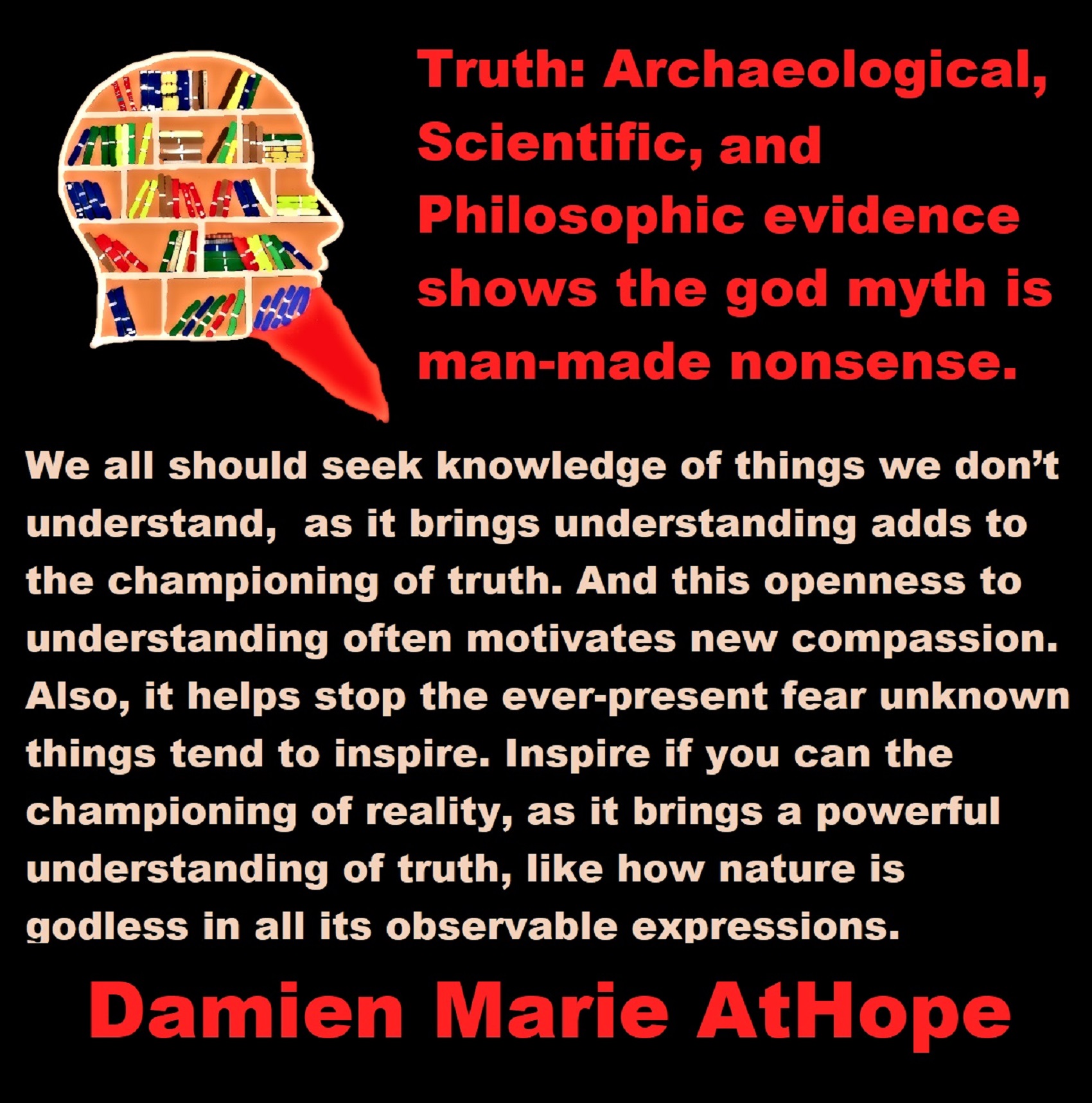




ref, ref, ref, ref, ref, ref, ref, ref, ref, ref, ref, ref, ref, ref, ref, ref, ref, ref, ref, ref, ref
Low Gods “Earth” or Tutelary deity and High Gods “Sky” or Supreme deity
“An Earth goddess is a deification of the Earth. Earth goddesses are often associated with the “chthonic” deities of the underworld. Ki and Ninhursag are Mesopotamian earth goddesses. In Greek mythology, the Earth is personified as Gaia, corresponding to Roman Terra, Indic Prithvi/Bhūmi, etc. traced to an “Earth Mother” complementary to the “Sky Father” in Proto-Indo-European religion. Egyptian mythology exceptionally has a sky goddess and an Earth god.” ref
“A mother goddess is a goddess who represents or is a personification of nature, motherhood, fertility, creation, destruction or who embodies the bounty of the Earth. When equated with the Earth or the natural world, such goddesses are sometimes referred to as Mother Earth or as the Earth Mother. In some religious traditions or movements, Heavenly Mother (also referred to as Mother in Heaven or Sky Mother) is the wife or feminine counterpart of the Sky father or God the Father.” ref
“Any masculine sky god is often also king of the gods, taking the position of patriarch within a pantheon. Such king gods are collectively categorized as “sky father” deities, with a polarity between sky and earth often being expressed by pairing a “sky father” god with an “earth mother” goddess (pairings of a sky mother with an earth father are less frequent). A main sky goddess is often the queen of the gods and may be an air/sky goddess in her own right, though she usually has other functions as well with “sky” not being her main. In antiquity, several sky goddesses in ancient Egypt, Mesopotamia, and the Near East were called Queen of Heaven. Neopagans often apply it with impunity to sky goddesses from other regions who were never associated with the term historically. The sky often has important religious significance. Many religions, both polytheistic and monotheistic, have deities associated with the sky.” ref
“In comparative mythology, sky father is a term for a recurring concept in polytheistic religions of a sky god who is addressed as a “father”, often the father of a pantheon and is often either a reigning or former King of the Gods. The concept of “sky father” may also be taken to include Sun gods with similar characteristics, such as Ra. The concept is complementary to an “earth mother“. “Sky Father” is a direct translation of the Vedic Dyaus Pita, etymologically descended from the same Proto-Indo-European deity name as the Greek Zeûs Pater and Roman Jupiter and Germanic Týr, Tir or Tiwaz, all of which are reflexes of the same Proto-Indo-European deity’s name, *Dyēus Ph₂tḗr. While there are numerous parallels adduced from outside of Indo-European mythology, there are exceptions (e.g. In Egyptian mythology, Nut is the sky mother and Geb is the earth father).” ref
Tutelary deity
“A tutelary (also tutelar) is a deity or spirit who is a guardian, patron, or protector of a particular place, geographic feature, person, lineage, nation, culture, or occupation. The etymology of “tutelary” expresses the concept of safety and thus of guardianship. In late Greek and Roman religion, one type of tutelary deity, the genius, functions as the personal deity or daimon of an individual from birth to death. Another form of personal tutelary spirit is the familiar spirit of European folklore.” ref
“A tutelary (also tutelar) in Korean shamanism, jangseung and sotdae were placed at the edge of villages to frighten off demons. They were also worshiped as deities. Seonangshin is the patron deity of the village in Korean tradition and was believed to embody the Seonangdang. In Philippine animism, Diwata or Lambana are deities or spirits that inhabit sacred places like mountains and mounds and serve as guardians. Such as: Maria Makiling is the deity who guards Mt. Makiling and Maria Cacao and Maria Sinukuan. In Shinto, the spirits, or kami, which give life to human bodies come from nature and return to it after death. Ancestors are therefore themselves tutelaries to be worshiped. And similarly, Native American beliefs such as Tonás, tutelary animal spirit among the Zapotec and Totems, familial or clan spirits among the Ojibwe, can be animals.” ref
“A tutelary (also tutelar) in Austronesian beliefs such as: Atua (gods and spirits of the Polynesian peoples such as the Māori or the Hawaiians), Hanitu (Bunun of Taiwan‘s term for spirit), Hyang (Kawi, Sundanese, Javanese, and Balinese Supreme Being, in ancient Java and Bali mythology and this spiritual entity, can be either divine or ancestral), Kaitiaki (New Zealand Māori term used for the concept of guardianship, for the sky, the sea, and the land), Kawas (mythology) (divided into 6 groups: gods, ancestors, souls of the living, spirits of living things, spirits of lifeless objects, and ghosts), Tiki (Māori mythology, Tiki is the first man created by either Tūmatauenga or Tāne and represents deified ancestors found in most Polynesian cultures). ” ref, ref, ref, ref, ref, ref, ref
Mesopotamian Tutelary Deities can be seen as ones related to City-States
“Historical city-states included Sumerian cities such as Uruk and Ur; Ancient Egyptian city-states, such as Thebes and Memphis; the Phoenician cities (such as Tyre and Sidon); the five Philistine city-states; the Berber city-states of the Garamantes; the city-states of ancient Greece (the poleis such as Athens, Sparta, Thebes, and Corinth); the Roman Republic (which grew from a city-state into a vast empire); the Italian city-states from the Middle Ages to the early modern period, such as Florence, Siena, Ferrara, Milan (which as they grew in power began to dominate neighboring cities) and Genoa and Venice, which became powerful thalassocracies; the Mayan and other cultures of pre-Columbian Mesoamerica (including cities such as Chichen Itza, Tikal, Copán and Monte Albán); the central Asian cities along the Silk Road; the city-states of the Swahili coast; Ragusa; states of the medieval Russian lands such as Novgorod and Pskov; and many others.” ref
“The Uruk period (ca. 4000 to 3100 BCE; also known as Protoliterate period) of Mesopotamia, named after the Sumerian city of Uruk, this period saw the emergence of urban life in Mesopotamia and the Sumerian civilization. City-States like Uruk and others had a patron tutelary City Deity along with a Priest-King.” ref
“Chinese folk religion, both past, and present, includes myriad tutelary deities. Exceptional individuals, highly cultivated sages, and prominent ancestors can be deified and honored after death. Lord Guan is the patron of military personnel and police, while Mazu is the patron of fishermen and sailors. Such as Tu Di Gong (Earth Deity) is the tutelary deity of a locality, and each individual locality has its own Earth Deity and Cheng Huang Gong (City God) is the guardian deity of an individual city, worshipped by local officials and locals since imperial times.” ref
“A tutelary (also tutelar) in Hinduism, personal tutelary deities are known as ishta-devata, while family tutelary deities are known as Kuladevata. Gramadevata are guardian deities of villages. Devas can also be seen as tutelary. Shiva is the patron of yogis and renunciants. City goddesses include: Mumbadevi (Mumbai), Sachchika (Osian); Kuladevis include: Ambika (Porwad), and Mahalakshmi. In NorthEast India Meitei mythology and religion (Sanamahism) of Manipur, there are various types of tutelary deities, among which Lam Lais are the most predominant ones. Tibetan Buddhism has Yidam as a tutelary deity. Dakini is the patron of those who seek knowledge.” ref
“A tutelary (also tutelar) The Greeks also thought deities guarded specific places: for instance, Athena was the patron goddess of the city of Athens. Socrates spoke of hearing the voice of his personal spirit or daimonion:
You have often heard me speak of an oracle or sign which comes to me … . This sign I have had ever since I was a child. The sign is a voice which comes to me and always forbids me to do something which I am going to do, but never commands me to do anything, and this is what stands in the way of my being a politician.” ref
“Tutelary deities who guard and preserve a place or a person are fundamental to ancient Roman religion. The tutelary deity of a man was his Genius, that of a woman her Juno. In the Imperial era, the Genius of the Emperor was a focus of Imperial cult. An emperor might also adopt a major deity as his personal patron or tutelary, as Augustus did Apollo. Precedents for claiming the personal protection of a deity were established in the Republican era, when for instance the Roman dictator Sulla advertised the goddess Victory as his tutelary by holding public games (ludi) in her honor.” ref
“Each town or city had one or more tutelary deities, whose protection was considered particularly vital in time of war and siege. Rome itself was protected by a goddess whose name was to be kept ritually secret on pain of death (for a supposed case, see Quintus Valerius Soranus). The Capitoline Triad of Juno, Jupiter, and Minerva were also tutelaries of Rome. The Italic towns had their own tutelary deities. Juno often had this function, as at the Latin town of Lanuvium and the Etruscan city of Veii, and was often housed in an especially grand temple on the arx (citadel) or other prominent or central location. The tutelary deity of Praeneste was Fortuna, whose oracle was renowned.” ref
“The Roman ritual of evocatio was premised on the belief that a town could be made vulnerable to military defeat if the power of its tutelary deity were diverted outside the city, perhaps by the offer of superior cult at Rome. The depiction of some goddesses such as the Magna Mater (Great Mother, or Cybele) as “tower-crowned” represents their capacity to preserve the city. A town in the provinces might adopt a deity from within the Roman religious sphere to serve as its guardian, or syncretize its own tutelary with such; for instance, a community within the civitas of the Remi in Gaul adopted Apollo as its tutelary, and at the capital of the Remi (present-day Rheims), the tutelary was Mars Camulus.” ref
Household deity (a kind of or related to a Tutelary deity)
“A household deity is a deity or spirit that protects the home, looking after the entire household or certain key members. It has been a common belief in paganism as well as in folklore across many parts of the world. Household deities fit into two types; firstly, a specific deity – typically a goddess – often referred to as a hearth goddess or domestic goddess who is associated with the home and hearth, such as the ancient Greek Hestia.” ref
“The second type of household deities are those that are not one singular deity, but a type, or species of animistic deity, who usually have lesser powers than major deities. This type was common in the religions of antiquity, such as the Lares of ancient Roman religion, the Gashin of Korean shamanism, and Cofgodas of Anglo-Saxon paganism. These survived Christianisation as fairy-like creatures existing in folklore, such as the Anglo-Scottish Brownie and Slavic Domovoy.” ref
“Household deities were usually worshipped not in temples but in the home, where they would be represented by small idols (such as the teraphim of the Bible, often translated as “household gods” in Genesis 31:19 for example), amulets, paintings, or reliefs. They could also be found on domestic objects, such as cosmetic articles in the case of Tawaret. The more prosperous houses might have a small shrine to the household god(s); the lararium served this purpose in the case of the Romans. The gods would be treated as members of the family and invited to join in meals, or be given offerings of food and drink.” ref
“In many religions, both ancient and modern, a god would preside over the home. Certain species, or types, of household deities, existed. An example of this was the Roman Lares. Many European cultures retained house spirits into the modern period. Some examples of these include:
- Brownie (Scotland and England) or Hob (England) / Kobold (Germany) / Goblin / Hobgoblin
- Domovoy (Slavic)
- Nisse (Norwegian or Danish) / Tomte (Swedish) / Tonttu (Finnish)
- Húsvættir (Norse)” ref
“Although the cosmic status of household deities was not as lofty as that of the Twelve Olympians or the Aesir, they were also jealous of their dignity and also had to be appeased with shrines and offerings, however humble. Because of their immediacy they had arguably more influence on the day-to-day affairs of men than the remote gods did. Vestiges of their worship persisted long after Christianity and other major religions extirpated nearly every trace of the major pagan pantheons. Elements of the practice can be seen even today, with Christian accretions, where statues to various saints (such as St. Francis) protect gardens and grottos. Even the gargoyles found on older churches, could be viewed as guardians partitioning a sacred space.” ref
“For centuries, Christianity fought a mop-up war against these lingering minor pagan deities, but they proved tenacious. For example, Martin Luther‘s Tischreden have numerous – quite serious – references to dealing with kobolds. Eventually, rationalism and the Industrial Revolution threatened to erase most of these minor deities, until the advent of romantic nationalism rehabilitated them and embellished them into objects of literary curiosity in the 19th century. Since the 20th century this literature has been mined for characters for role-playing games, video games, and other fantasy personae, not infrequently invested with invented traits and hierarchies somewhat different from their mythological and folkloric roots.” ref
“In contradistinction to both Herbert Spencer and Edward Burnett Tylor, who defended theories of animistic origins of ancestor worship, Émile Durkheim saw its origin in totemism. In reality, this distinction is somewhat academic, since totemism may be regarded as a particularized manifestation of animism, and something of a synthesis of the two positions was attempted by Sigmund Freud. In Freud’s Totem and Taboo, both totem and taboo are outward expressions or manifestations of the same psychological tendency, a concept which is complementary to, or which rather reconciles, the apparent conflict. Freud preferred to emphasize the psychoanalytic implications of the reification of metaphysical forces, but with particular emphasis on its familial nature. This emphasis underscores, rather than weakens, the ancestral component.” ref
“William Edward Hearn, a noted classicist, and jurist, traced the origin of domestic deities from the earliest stages as an expression of animism, a belief system thought to have existed also in the neolithic, and the forerunner of Indo-European religion. In his analysis of the Indo-European household, in Chapter II “The House Spirit”, Section 1, he states:
The belief which guided the conduct of our forefathers was … the spirit rule of dead ancestors.” ref
“In Section 2 he proceeds to elaborate:
It is thus certain that the worship of deceased ancestors is a vera causa, and not a mere hypothesis. …
In the other European nations, the Slavs, the Teutons, and the Kelts, the House Spirit appears with no less distinctness. … [T]he existence of that worship does not admit of doubt. … The House Spirits had a multitude of other names which it is needless here to enumerate, but all of which are more or less expressive of their friendly relations with man. … In [England] … [h]e is the Brownie. … In Scotland this same Brownie is well known. He is usually described as attached to particular families, with whom he has been known to reside for centuries, threshing the corn, cleaning the house, and performing similar household tasks. His favorite gratification was milk and honey.” ref

Hinduism around 3,700 to 3,500 years old. ref
Judaism around 3,450 or 3,250 years old. (The first writing in the bible was “Paleo-Hebrew” dated to around 3,000 years ago Khirbet Qeiyafa is the site of an ancient fortress city overlooking the Elah Valley. And many believe the religious Jewish texts were completed around 2,500) ref, ref
Judaism is around 3,450 or 3,250 years old. (“Paleo-Hebrew” 3,000 years ago and Torah 2,500 years ago)
“Judaism is an Abrahamic, its roots as an organized religion in the Middle East during the Bronze Age. Some scholars argue that modern Judaism evolved from Yahwism, the religion of ancient Israel and Judah, by the late 6th century BCE, and is thus considered to be one of the oldest monotheistic religions.” ref
“Yahwism is the name given by modern scholars to the religion of ancient Israel, essentially polytheistic, with a plethora of gods and goddesses. Heading the pantheon was Yahweh, the national god of the Israelite kingdoms of Israel and Judah, with his consort, the goddess Asherah; below them were second-tier gods and goddesses such as Baal, Shamash, Yarikh, Mot, and Astarte, all of whom had their own priests and prophets and numbered royalty among their devotees, and a third and fourth tier of minor divine beings, including the mal’ak, the messengers of the higher gods, who in later times became the angels of Judaism, Christianity and Islam. Yahweh, however, was not the ‘original’ god of Israel “Isra-El”; it is El, the head of the Canaanite pantheon, whose name forms the basis of the name “Israel”, and none of the Old Testament patriarchs, the tribes of Israel, the Judges, or the earliest monarchs, have a Yahwistic theophoric name (i.e., one incorporating the name of Yahweh).” ref
“El is a Northwest Semitic word meaning “god” or “deity“, or referring (as a proper name) to any one of multiple major ancient Near Eastern deities. A rarer form, ‘ila, represents the predicate form in Old Akkadian and in Amorite. The word is derived from the Proto-Semitic *ʔil-, meaning “god”. Specific deities known as ‘El or ‘Il include the supreme god of the ancient Canaanite religion and the supreme god of East Semitic speakers in Mesopotamia’s Early Dynastic Period. ʼĒl is listed at the head of many pantheons. In some Canaanite and Ugaritic sources, ʼĒl played a role as father of the gods, of creation, or both. For example, in the Ugaritic texts, ʾil mlk is understood to mean “ʼĒl the King” but ʾil hd as “the god Hadad“. The Semitic root ʾlh (Arabic ʾilāh, Aramaic ʾAlāh, ʾElāh, Hebrew ʾelōah) may be ʾl with a parasitic h, and ʾl may be an abbreviated form of ʾlh. In Ugaritic the plural form meaning “gods” is ʾilhm, equivalent to Hebrew ʾelōhîm “powers”. In the Hebrew texts this word is interpreted as being semantically singular for “god” by biblical commentators. However the documentary hypothesis for the Old Testament (corresponds to the Jewish Torah) developed originally in the 1870s, identifies these that different authors – the Jahwist, Elohist, Deuteronomist, and the Priestly source – were responsible for editing stories from a polytheistic religion into those of a monotheistic religion. Inconsistencies that arise between monotheism and polytheism in the texts are reflective of this hypothesis.” ref
Jainism around 2,599 – 2,527 years old. ref
Confucianism around 2,600 – 2,551 years old. ref
Buddhism around 2,563/2,480 – 2,483/2,400 years old. ref
Christianity around 2,o00 years old. ref
Shinto around 1,305 years old. ref
Islam around 1407–1385 years old. ref

Knowledge to Ponder:
Stars/Astrology:
- Possibly, around 30,000 years ago (in simpler form) to 6,000 years ago, Stars/Astrology are connected to Ancestors, Spirit Animals, and Deities.
- The star also seems to be a possible proto-star for Star of Ishtar, Star of Inanna, or Star of Venus.
- Around 7,000 to 6,000 years ago, Star Constellations/Astrology have connections to the “Kurgan phenomenon” of below-ground “mound” stone/wood burial structures and “Dolmen phenomenon” of above-ground stone burial structures.
- Around 6,500–5,800 years ago, The Northern Levant migrations into Jordon and Israel in the Southern Levant brought new cultural and religious transfer from Turkey and Iran.
- “The Ghassulian Star,” a mysterious 6,000-year-old mural from Jordan may have connections to the European paganstic kurgan/dolmens phenomenon.
“Astrology is a range of divinatory practices, recognized as pseudoscientific since the 18th century, that claim to discern information about human affairs and terrestrial events by studying the apparent positions of celestial objects. Different cultures have employed forms of astrology since at least the 2nd millennium BCE, these practices having originated in calendrical systems used to predict seasonal shifts and to interpret celestial cycles as signs of divine communications. Most, if not all, cultures have attached importance to what they observed in the sky, and some—such as the Hindus, Chinese, and the Maya—developed elaborate systems for predicting terrestrial events from celestial observations. Western astrology, one of the oldest astrological systems still in use, can trace its roots to 19th–17th century BCE Mesopotamia, from where it spread to Ancient Greece, Rome, the Islamicate world and eventually Central and Western Europe. Contemporary Western astrology is often associated with systems of horoscopes that purport to explain aspects of a person’s personality and predict significant events in their lives based on the positions of celestial objects; the majority of professional astrologers rely on such systems.” ref
Around 5,500 years ago, Science evolves, The first evidence of science was 5,500 years ago and was demonstrated by a body of empirical, theoretical, and practical knowledge about the natural world. ref
Around 5,000 years ago, Origin of Logics is a Naturalistic Observation (principles of valid reasoning, inference, & demonstration) ref
Around 4,150 to 4,000 years ago: The earliest surviving versions of the Sumerian Epic of Gilgamesh, which was originally titled “He who Saw the Deep” (Sha naqba īmuru) or “Surpassing All Other Kings” (Shūtur eli sharrī) were written. ref
Hinduism:
- 3,700 years ago or so, the oldest of the Hindu Vedas (scriptures), the Rig Veda was composed.
- 3,500 years ago or so, the Vedic Age began in India after the collapse of the Indus Valley Civilization.
Judaism:
- around 3,000 years ago, the first writing in the bible was “Paleo-Hebrew”
- around 2,500 years ago, many believe the religious Jewish texts were completed
Myths: The bible inspired religion is not just one religion or one myth but a grouping of several religions and myths
- Around 3,450 or 3,250 years ago, according to legend, is the traditionally accepted period in which the Israelite lawgiver, Moses, provided the Ten Commandments.
- Around 2,500 to 2,400 years ago, a collection of ancient religious writings by the Israelites based primarily upon the Hebrew Bible, Tanakh, or Old Testament is the first part of Christianity’s bible.
- Around 2,400 years ago, the most accepted hypothesis is that the canon was formed in stages, first the Pentateuch (Torah).
- Around 2,140 to 2,116 years ago, the Prophets was written during the Hasmonean dynasty, and finally the remaining books.
- Christians traditionally divide the Old Testament into four sections:
- The first five books or Pentateuch (Torah).
- The proposed history books telling the history of the Israelites from their conquest of Canaan to their defeat and exile in Babylon.
- The poetic and proposed “Wisdom books” dealing, in various forms, with questions of good and evil in the world.
- The books of the biblical prophets, warning of the consequences of turning away from God:
- Henotheism:
- Exodus 20:23 “You shall not make other gods besides Me (not saying there are no other gods just not to worship them); gods of silver or gods of gold, you shall not make for yourselves.”
- Polytheism:
- Judges 10:6 “Then the sons of Israel again did evil in the sight of the LORD, served the Baals and the Ashtaroth, the gods of Aram, the gods of Sidon, the gods of Moab, the gods of the sons of Ammon, and the gods of the Philistines; thus they forsook the LORD and did not serve Him.”
- 1 Corinthians 8:5 “For even if there are so-called gods whether in heaven or on earth, as indeed there are many gods and many lords.”
- Monotheism:
- Isaiah 43:10 “You are my witnesses,” declares the LORD, “and my servant whom I have chosen, so that you may know and believe me and understand that I am he. Before me no god was formed, nor will there be one after me.
Around 2,570 to 2,270 Years Ago, there is a confirmation of atheistic doubting as well as atheistic thinking, mainly by Greek philosophers. However, doubting gods is likely as old as the invention of gods and should destroy the thinking that belief in god(s) is the “default belief”. The Greek word is apistos (a “not” and pistos “faithful,”), thus not faithful or faithless because one is unpersuaded and unconvinced by a god(s) claim. Short Definition: unbelieving, unbeliever, or unbelief.

Expressions of Atheistic Thinking:
- Around 2,600 years ago, Ajita Kesakambali, ancient Indian philosopher, who is the first known proponent of Indian materialism. ref
- Around 2,535 to 2,475 years ago, Heraclitus, Greek pre-Socratic philosopher, a native of the Greek city Ephesus, Ionia, on the coast of Anatolia, also known as Asia Minor or modern Turkey. ref
- Around 2,500 to 2,400 years ago, according to The Story of Civilization book series certain African pygmy tribes have no identifiable gods, spirits, or religious beliefs or rituals, and even what burials accrue are without ceremony. ref
- Around 2,490 to 2,430 years ago, Empedocles, Greek pre-Socratic philosopher and a citizen of Agrigentum, a Greek city in Sicily. ref
- Around 2,460 to 2,370 years ago, Democritus, Greek pre-Socratic philosopher considered to be the “father of modern science” possibly had some disbelief amounting to atheism. ref
- Around 2,399 years ago or so, Socrates, a famous Greek philosopher was tried for sinfulness by teaching doubt of state gods. ref
- Around 2,341 to 2,270 years ago, Epicurus, a Greek philosopher known for composing atheistic critics and famously stated, “Is God willing to prevent evil, but not able? Then he is not omnipotent. Is he able, but not willing? Then he is malevolent. Is he both able and willing? Then whence cometh evil? Is he neither able nor willing? Then why call him god?” ref
This last expression by Epicurus, seems to be an expression of Axiological Atheism. To understand and utilize value or actually possess “Value Conscious/Consciousness” to both give a strong moral “axiological” argument (the problem of evil) as well as use it to fortify humanism and positive ethical persuasion of human helping and care responsibilities. Because value-blindness gives rise to sociopathic/psychopathic evil.



While hallucinogens are associated with shamanism, it is alcohol that is associated with paganism.
The Atheist-Humanist-Leftist Revolutionaries Shows in the prehistory series:
Show two: Pre-animism 300,000 years old and animism 100,000 years old: related to “Anarchism and Socialism”
Show tree: Totemism 50,000 years old: related to “Anarchism and Socialism”
Show four: Shamanism 30,000 years old: related to “Anarchism and Socialism”
Show five: Paganism 12,000 years old: related to “Anarchism and Socialism”
Show six: Emergence of hierarchy, sexism, slavery, and the new male god dominance: Paganism 7,000-5,000 years old: related to “Anarchism and Socialism” (Capitalism) (World War 0) Elite and their slaves!
Prehistory: related to “Anarchism and Socialism” the division of labor, power, rights, and recourses: VIDEO
Pre-animism 300,000 years old and animism 100,000 years old: related to “Anarchism and Socialism”: VIDEO
Totemism 50,000 years old: related to “Anarchism and Socialism”: VIDEO
Shamanism 30,000 years old: related to “Anarchism and Socialism”: VIDEO
Paganism 12,000 years old: related to “Anarchism and Socialism” (Pre-Capitalism): VIDEO
Paganism 7,000-5,000 years old: related to “Anarchism and Socialism” (Capitalism) (World War 0) Elite and their slaves: VIEDO
Paganism 5,000 years old: progressed organized religion and the state: related to “Anarchism and Socialism” (Kings and the Rise of the State): VIEDO
Paganism 4,000 years old: related to “Anarchism and Socialism” (First Moralistic gods, then the Origin time of Monotheism): VIEDO
I do not hate simply because I challenge and expose myths or lies any more than others being thought of as loving simply because of the protection and hiding from challenge their favored myths or lies.
The truth is best championed in the sunlight of challenge.
An archaeologist once said to me “Damien religion and culture are very different”
My response, So are you saying that was always that way, such as would you say Native Americans’ cultures are separate from their religions? And do you think it always was the way you believe?
I had said that religion was a cultural product. That is still how I see it and there are other archaeologists that think close to me as well. Gods too are the myths of cultures that did not understand science or the world around them, seeing magic/supernatural everywhere.
I personally think there is a goddess and not enough evidence to support a male god at Çatalhöyük but if there was both a male and female god and goddess then I know the kind of gods they were like Proto-Indo-European mythology.
This series idea was addressed in, Anarchist Teaching as Free Public Education or Free Education in the Public: VIDEO
Our 12 video series: Organized Oppression: Mesopotamian State Force and the Politics of power (9,000-4,000 years ago), is adapted from: The Complete and Concise History of the Sumerians and Early Bronze Age Mesopotamia (7000-2000 BC): https://www.youtube.com/watch?v=szFjxmY7jQA by “History with Cy“
Show #1: Mesopotamian State Force and the Politics of Power (Samarra, Halaf, Ubaid)
Show #2: Mesopotamian State Force and the Politics of Power
Show #3: Mesopotamian State Force and the Politics of Power (Uruk and the First Cities)
Show #4: Mesopotamian State Force and the Politics of Power (First Kings)
Show #5: Mesopotamian State Force and the Politics of Power (Early Dynastic Period)
Show #6: Mesopotamian State Force and the Politics of Power
Show #7: Mesopotamian State Force and the Politics of Power (Sargon and Akkadian Rule)
Show #9: Mesopotamian State Force and the Politics of Power (Gudea of Lagash and Utu-hegal)
Show #12: Mesopotamian State Force and the Politics of Power (Aftermath and Legacy of Sumer)

The “Atheist-Humanist-Leftist Revolutionaries”
Cory Johnston ☭ Ⓐ Atheist Leftist @Skepticallefty & I (Damien Marie AtHope) @AthopeMarie (my YouTube & related blog) are working jointly in atheist, antitheist, antireligionist, antifascist, anarchist, socialist, and humanist endeavors in our videos together, generally, every other Saturday.
Why Does Power Bring Responsibility?
Think, how often is it the powerless that start wars, oppress others, or commit genocide? So, I guess the question is to us all, to ask, how can power not carry responsibility in a humanity concept? I know I see the deep ethical responsibility that if there is power their must be a humanistic responsibility of ethical and empathic stewardship of that power. Will I be brave enough to be kind? Will I possess enough courage to be compassionate? Will my valor reach its height of empathy? I as everyone, earns our justified respect by our actions, that are good, ethical, just, protecting, and kind. Do I have enough self-respect to put my love for humanity’s flushing, over being brought down by some of its bad actors? May we all be the ones doing good actions in the world, to help human flourishing.
I create the world I want to live in, striving for flourishing. Which is not a place but a positive potential involvement and promotion; a life of humanist goal precision. To master oneself, also means mastering positive prosocial behaviors needed for human flourishing. I may have lost a god myth as an atheist, but I am happy to tell you, my friend, it is exactly because of that, leaving the mental terrorizer, god belief, that I truly regained my connected ethical as well as kind humanity.
Cory and I will talk about prehistory and theism, addressing the relevance to atheism, anarchism, and socialism.
At the same time as the rise of the male god, 7,000 years ago, there was also the very time there was the rise of violence, war, and clans to kingdoms, then empires, then states. It is all connected back to 7,000 years ago, and it moved across the world.
Cory Johnston: https://damienmarieathope.com/2021/04/cory-johnston-mind-of-a-skeptical-leftist/?v=32aec8db952d
The Mind of a Skeptical Leftist (YouTube)
Cory Johnston: Mind of a Skeptical Leftist @Skepticallefty
The Mind of a Skeptical Leftist By Cory Johnston: “Promoting critical thinking, social justice, and left-wing politics by covering current events and talking to a variety of people. Cory Johnston has been thoughtfully talking to people and attempting to promote critical thinking, social justice, and left-wing politics.” http://anchor.fm/skepticalleft
Cory needs our support. We rise by helping each other.
Cory Johnston ☭ Ⓐ @Skepticallefty Evidence-based atheist leftist (he/him) Producer, host, and co-host of 4 podcasts @skeptarchy @skpoliticspod and @AthopeMarie
Damien Marie AtHope (“At Hope”) Axiological Atheist, Anti-theist, Anti-religionist, Secular Humanist. Rationalist, Writer, Artist, Poet, Philosopher, Advocate, Activist, Psychology, and Armchair Archaeology/Anthropology/Historian.
Damien is interested in: Freedom, Liberty, Justice, Equality, Ethics, Humanism, Science, Atheism, Antiteism, Antireligionism, Ignosticism, Left-Libertarianism, Anarchism, Socialism, Mutualism, Axiology, Metaphysics, LGBTQI, Philosophy, Advocacy, Activism, Mental Health, Psychology, Archaeology, Social Work, Sexual Rights, Marriage Rights, Woman’s Rights, Gender Rights, Child Rights, Secular Rights, Race Equality, Ageism/Disability Equality, Etc. And a far-leftist, “Anarcho-Humanist.”
I am not a good fit in the atheist movement that is mostly pro-capitalist, I am anti-capitalist. Mostly pro-skeptic, I am a rationalist not valuing skepticism. Mostly pro-agnostic, I am anti-agnostic. Mostly limited to anti-Abrahamic religions, I am an anti-religionist.
To me, the “male god” seems to have either emerged or become prominent around 7,000 years ago, whereas the now favored monotheism “male god” is more like 4,000 years ago or so. To me, the “female goddess” seems to have either emerged or become prominent around 11,000-10,000 years ago or so, losing the majority of its once prominence around 2,000 years ago due largely to the now favored monotheism “male god” that grow in prominence after 4,000 years ago or so.
My Thought on the Evolution of Gods?
Animal protector deities from old totems/spirit animal beliefs come first to me, 13,000/12,000 years ago, then women as deities 11,000/10,000 years ago, then male gods around 7,000/8,000 years ago. Moralistic gods around 5,000/4,000 years ago, and monotheistic gods around 4,000/3,000 years ago.

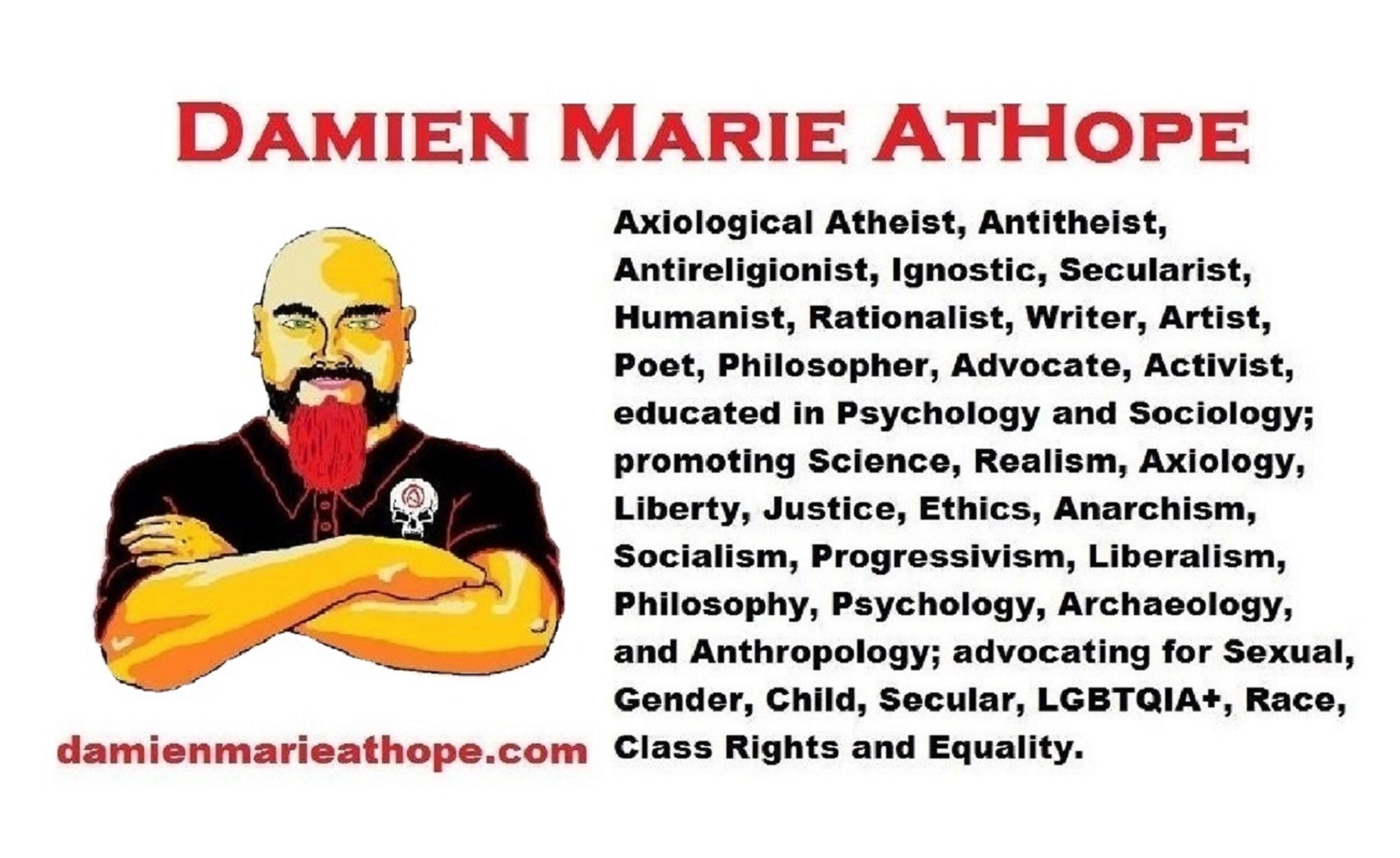
Damien Marie AtHope (Said as “At” “Hope”)/(Autodidact Polymath but not good at math):
Axiological Atheist, Anti-theist, Anti-religionist, Secular Humanist, Rationalist, Writer, Artist, Jeweler, Poet, “autodidact” Philosopher, schooled in Psychology, and “autodidact” Armchair Archaeology/Anthropology/Pre-Historian (Knowledgeable in the range of: 1 million to 5,000/4,000 years ago). I am an anarchist socialist politically. Reasons for or Types of Atheism
My Website, My Blog, & Short-writing or Quotes, My YouTube, Twitter: @AthopeMarie, and My Email: damien.marie.athope@gmail.com

